
- Mountain Bikes
- Gravel Bikes
- Hybrid Bikes
- Electric Bikes
- Commuter Bikes
- Exercise Bikes
- Women’s Bikes
- Kids’ Bikes
- All Best Bike Brands
- Mountain Bike Brands
- Electric Bike Brands
- Bike Rack Brands
- Brand Review: Rad Power Bikes
- Brand Review: Ride1UP Bikes
Disclaimer: Bikexchange is reader-supported . We may earn an affiliate commission when you buy through the links on our site.

Best Trail & All-Mountain Bikes (130-160 mm travel)

Mid-travel full-suspension MTBs tend to cover a broader spectrum of mountain biking applications than other more specific MTB styles. With front and rear travel in the 130mm to 160mm range, these mountain bikes are usually classed as trail or all-mountain bikes.
These bikes are able to handle relatively mountainous conditions like rocky trails and singletracks but are less agile on descents than dedicated downhill MTBs. The suspension is usually just tight enough that it can still swallow up obstacles and vibration without losing too much speed and momentum while having a comfortable geometry to climb as well.
Check out the best models we recommend!
- You may also like: Best Full-Suspension Mountain Bikes
Best Full-Suspension Trail & All-Mountain Bikes
1 . ghost – riot am essential.

MSRP: $3,300 REI.com
The mighty Ghost Riot AM Essential stands out for its versatility and surprisingly high component level given the price.
Ghost chose a reliable RockShox Deluxe Select+ shock and FS-35 Silver fork, each with 160mm travel, modern trail bike geometry, and a one-piece rear triangle and rocker link that enhances stiffness and power transfer.
The Riot AM Essentail is worthy of consideration for anyone looking for a bike made by a reliable brand with solid componentry. However, the downside of this bike is that the Shimano BR-MT500 brakeset with 180mm rotors isn’t powerful enough.
- Drivetrain: Shimano Deore/SLX 12-speed, 10-51t
- Shock : 160mm travel RockShox Deluxe Select+
- Fork : 160mm RockShox FS-35 Silver
- Tires: Maxxis Minion DHF 2.5″/DHR 2.4″ EXO+
2 . Ibis Ripmo SLX

MSRP: $6,699
The new Ibis Ripmo SLX is one of the best trail mountain bikes on the market today, built around a premium full carbon frame with internal cabling and 2.6″ tire clearance.
It features a Shimano SLX 12-speed drivetrain with SLX M7120 hydraulic disc brakes and 160mm and 147mm DW-Link suspension.
With high travel suspension, the Ibis Ripmo is clearly intended for rougher terrain than most trail bikes. So lower the dropper post and charge down steep declines with stability and confidence, knowing the Maxxis Assegai 2.5″ EXO+ tires have your back.
- Frame: Carbon
- Fork : 160mm, Fox Float Factory 38
- Shock : 147mm Fox Float Factory X2
- Drivetrain: Shimano SLX 12-speed
Buy on Mike's Bikes
3 . Cannondale – Moterra Neo 4
Best all-around e-mountain bike by a well-known bike brand
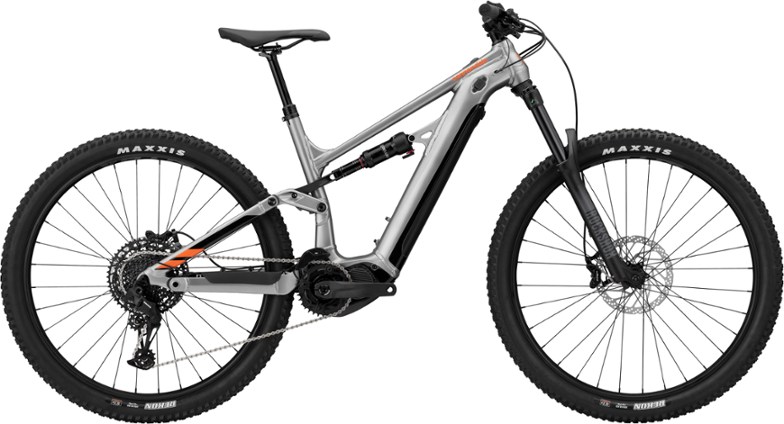
MSRP: $5,900 REI
Cannondale’s Moterra Neo 4 delivers an impressive combination of smart design, modern technology, and carefully chosen components.
The progressive geometry is low on the ground with a long wheelbase, steep seat tube, and slack head angle. This makes for a stable and comfortable ride on chunky descents.
Travel is at 150mm front and rear. This makes the Moterra Neo 4 an ideal enduro bike, best for charging down singletrack and through rock gardens. The RockShox suspension and SRAM SX groupset are solid choices, with Cannondale using its own in-house handlebar and stem.
- Fork : 150mm, RockShox Recon RL Silver
- Shock : 150mm, RockShox Deluxe Select R
- SmartForm C2 Aluminum
4 . Yeti – SB130 CLR Factory (Lunch Ride)
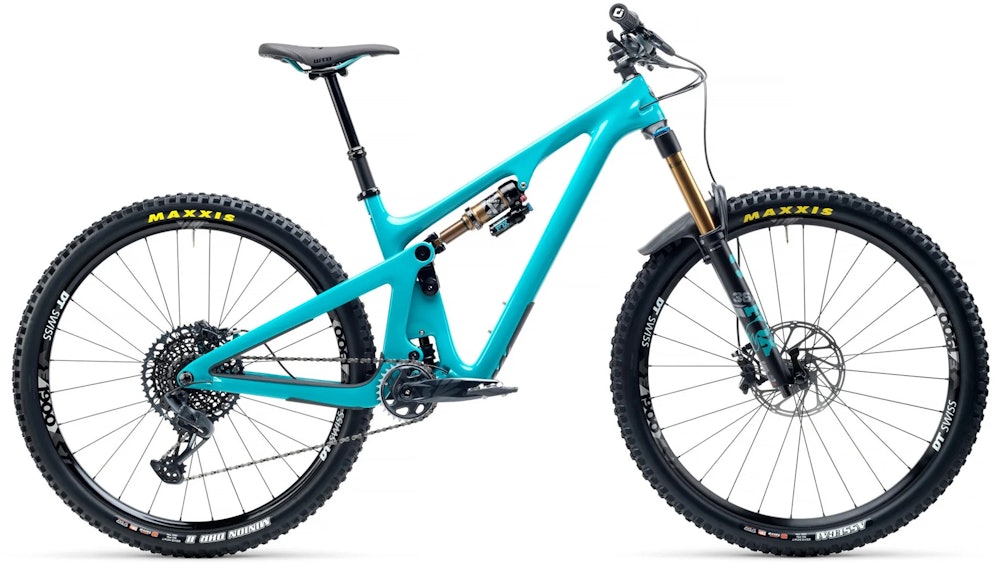
MSRP: $7,400 Jenson USA
This top-quality, versatile carbon all-mountain bike from Yeti will take you anywhere you want to go. Whether attacking flat desert terrain or rocky mountain passes, you’ll find the SB130 29er adapts to whatever you throw at it.
The C-Series Lunch Ride version of the Yeti SB130 features more capable geometry, tires, and longer-travel suspension.
With Yeti’s Switch Infinity suspension platform, this bike has super efficient pedaling and an almost bottomless feel.
Some standout components include the Fox Factory Float X 147mm shock, Factory 36 160mm travel fork, Fox Transfer Dropper, SRAM Code R 4-Piston, and Maxxis Assegai 2.5″ EXO+ and Minion DHRII 2.4″ EXO+ tires.
- Fork : Fox Performance 36 160mm travel
- Shock : Fox Performance Float X 147mm
- Drivetrain: SRAM GX Eagle 12-speed
- Frame: Carbon C-Series
Buy from Jenson USA
5 . Santa Cruz – Hightower 2

MSRP: $5,499 Evo.com
The Santa Cruz Hightower fits the needs of an advanced mountain biker and is one of the best-rated mountain bikes for trail riding.
The Hightower comes in aluminum or carbon frame versions, with SRAM gears, Maxxis tires, and high-quality suspension. The Hightower is on our list as it is considered one of the more capable bikes in its category.
The Hightower C R Kit features a carbon frame with VPP suspension and flip-chip tuning. It has 150mm of front travel on the Fox Yari RC and 145mm on the rear with a Fox Float DPS Performance shock.
- Fork : 150mm, Fox Yari RC
- Shock : 145mm, Fox Float DPS Performance shock
- Drivetrain: SRAM NX Eagle
- Frame: Carbon fiber
Buy on Evo.com
6 . Niner – RIP 9 RDO 2-Star
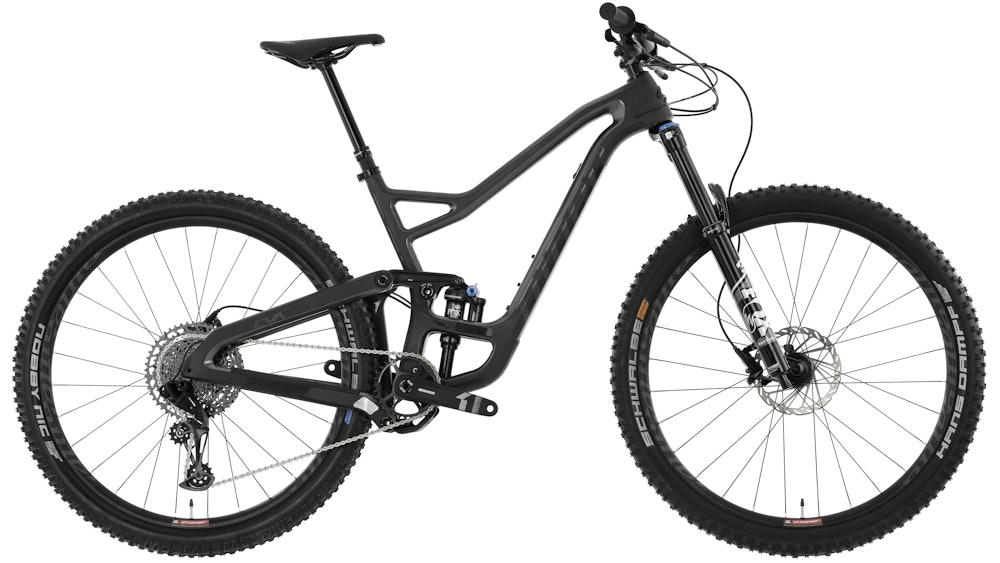
MSRP: $4,799 Jenson USA
The Niner RDO 2-Star is a high-performance trail 29er with a mid-range price. It comes packed with excellent technology like CVA suspension, full-sleeve internal cable routing, and an SRAM SX Eagle 12-speed drivetrain.
The RDO Carbon frame uses progressive and adjustable geometry that can handle a huge variety of trail scenarios. With 140mm of rear Fox Float X Performance EVOL 2 shock combined with a Fox 36 Float Rhythm fork the RIP 9 RDO 2-Star is the perfect bike for charging along singletrack and bouncing over rock gardens.
- Fork : Fox 36 Float Rhythm 150mm
- Shock: Fox Float X Performance EVOL 2 140mm
- Drivetrain: SRAM SX Eagle
- Frame: RDO Carbon
Buy on Jenson USA
7 . Juliana – Furtado

MSRP: $5,799 Mike’s Bikes
Juliana is one of the top mountain bike brands for women, having developed the first female-specific MTB back in 1999. The new 27.5″ Furtado is a carbon full-suspension trail bike with lower link suspension for better traction and a low center of gravity for stability. It’s built supreme maneuverability on all types of off-road terrain, whether you’re going downhill or uphill.
The Furtado benefits from RockShox Super Deluxe Select+ shock with a RockShox Pike Select+ fork that provides 140mm of travel. Combine this with SRAM G2 R hydraulic disc brakes and Maxxis Minion DHR 2.4″ tires and you get a MTB that closely resembles the excellent Santa Cruz Hightower.
- Fork : 140m, RockShox Pike Select+
- Shock : 130mm RockShox Super Deluxe Select+
- SRAM GX Eagle
- Carbon C frame
Buy from Mike's Bikes
8 . Revel – Rascal XT
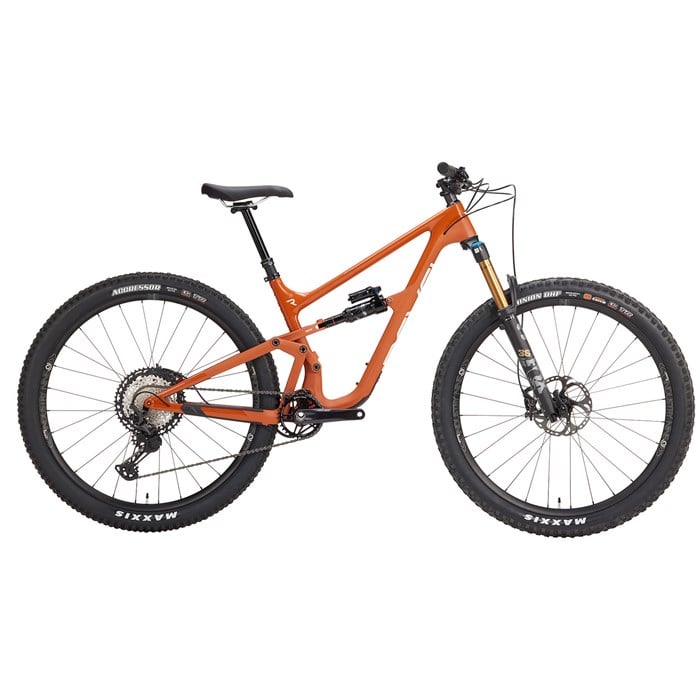
MSRP: $7,199 evo.com
For pro-level competitive riders, Revel mountain bikes have created the Rascal: a full carbon dream team of killer components and groundbreaking technology. For maximum pedaling efficiency, the Rascal’s Japanese Toray fiber frame utilizes the Canfield Balance Formula (CBF) to focus 100% of your power into the chainring, providing you with solid, stable speed over any terrain.
Add a RockShox Super Deluxe Ultimate shock and a Pike Ultimate fork, and the ground seems to melt away below while you float around corners and over obstacles with ease. This is all driven by Shimano’s podium-winning XT M8100 drivetrain and controlled by the solid XT 8120 hydraulic braking system. For the trail, all-mountain, or even enduro, you’ll struggle to find a better MTB than the Revel Rascal.
- Fork: 140mm Fox Float 36 Factory
- Rear Shock : 130mm RockShox Super Deluxe Ultimate
- Carbon fiber
Buy on evo.com
9 . Marin – Alpine Trail Carbon 2
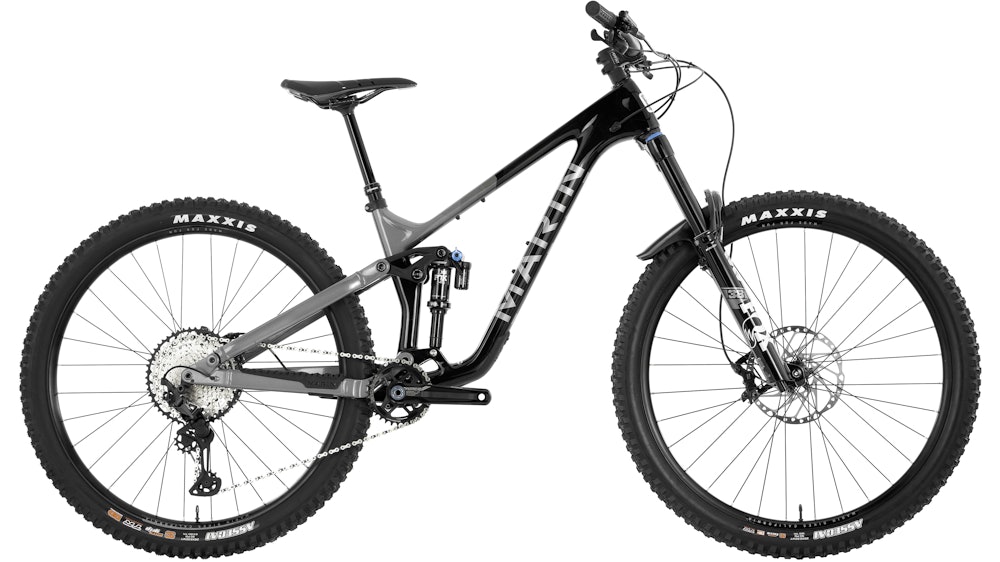
MSRP: $4,499 Jenson USA
Marin Bikes is a renowned mountain bike brand for those who like affordability and reliability from a MTB company.
The Alpine Trail Carbon 2 is the premium model of this 29er series, offering excellent climbing and descending abilities in one package.
Quality components include a 12-speed Shimano SLX M7100 groupset, a Fox 38 Performance Elite, 160mm fork, a 150mm Float X Performance shock, and Maxxis Assegai 2.5″ Maxx Terra/Assegai 2.5″ Maxx Grip tires.
With Marin’s proprietary MultiTrac suspension, you get a balanced platform that improves efficiency and bottom-out control simultaneously. When the aggressive geometry of the Alpine Trail is combined with high travel suspension, it makes for an adaptable all-mountain bike that can tackle every kind of ride.
- Fork : Fox 38 Performance Elite 160mm
- Rear Shock : Fox Float X Performance 150mm
- Frame: Carbon fiber front triangle, alloy rear triangle
10 . Transition – Sentinel X01
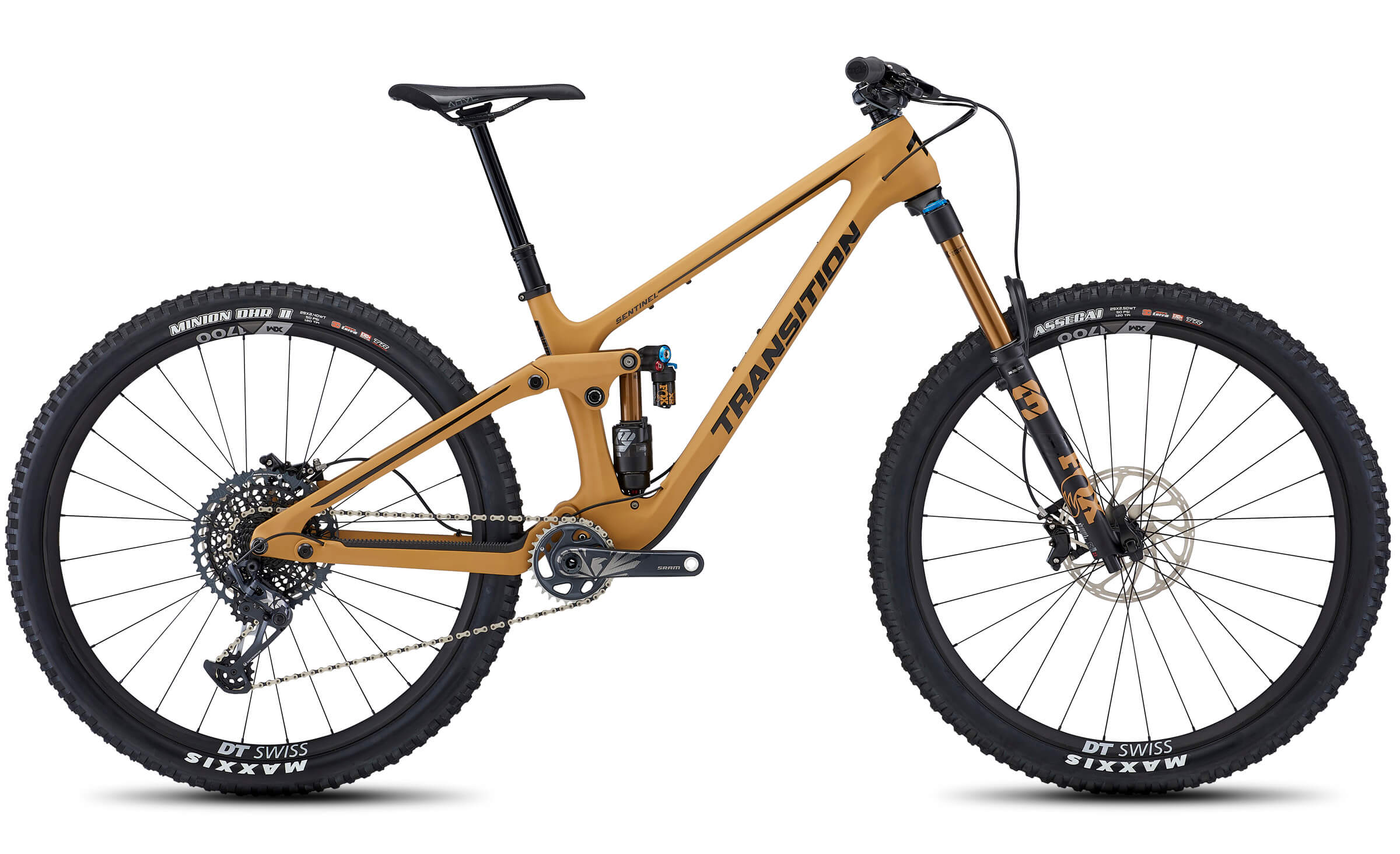
MSRP: $5,250 evo.com
This 29″ beast from Transition bikes pairs 150mm of rear with 160mm of front travel, putting it on the high-end of mid-travel MTBs. You’ll feel just as comfortable hitting jumps or tackling steep drops with this bike, as you will charging over rock gardens and along a single track.
It’s the perfect all-rounder and it comes in a range of builds, with drivetrains ranging from SRAM NX Eagle and Shimano Deore XT to the GX Eagle and SRAM’s top-quality X01. The top range X01 combines Fox Float suspension with SRAM Code RSC disc brakes, leaving you with nothing but confidence as the mountainside blurs past beneath you.
- Fork : 160mm, Fox Float 36 Grip 2 Factory
- Rear Shock : Fox Float X2 Factory 2-Position
- SRAM X01 Eagle
11 . Orbea – Occam H30
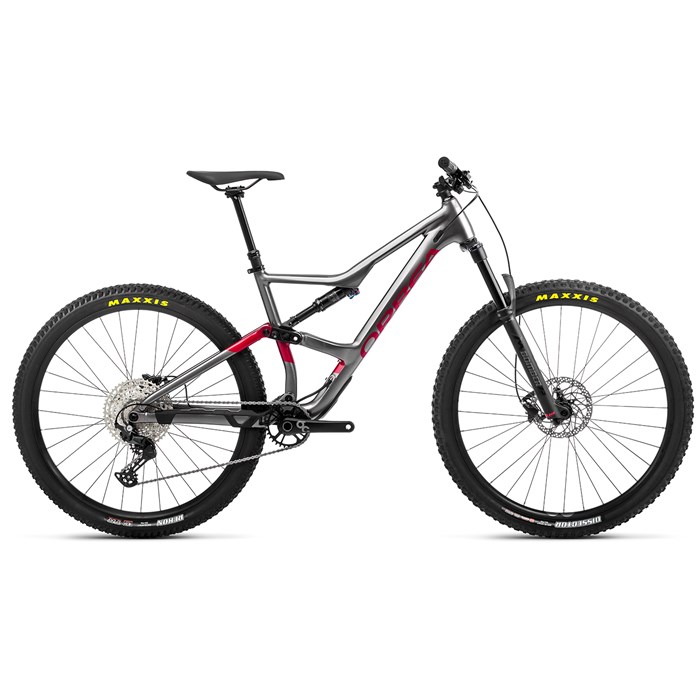
MSRP: $2.999 Jenson USA
The Orbea Occam is a high-performance MTB for a relatively low price, considering it boasts a hydroformed aluminum with a Shimano Deore groupset and high-quality suspension. You even get an OC MC20 dropper post and internal cable routing.
The lightweight setup makes for easy, all-day riding, and with 140mm of front and rear travel you can take on a variety of terrain. A broad gearing range takes the pain out of uphills, and solid Shimano hydraulic brakes make steep descents easy to control.
- Fork: 140mm, Marzocchi Bomber Z2
- Rear Shock : 140mm, Fox Float DPS Performance
- Shimano Deore 1×12-speed
Buy on JensonUSA.com
12 . Rocky Mountain – Instinct Carbon 50
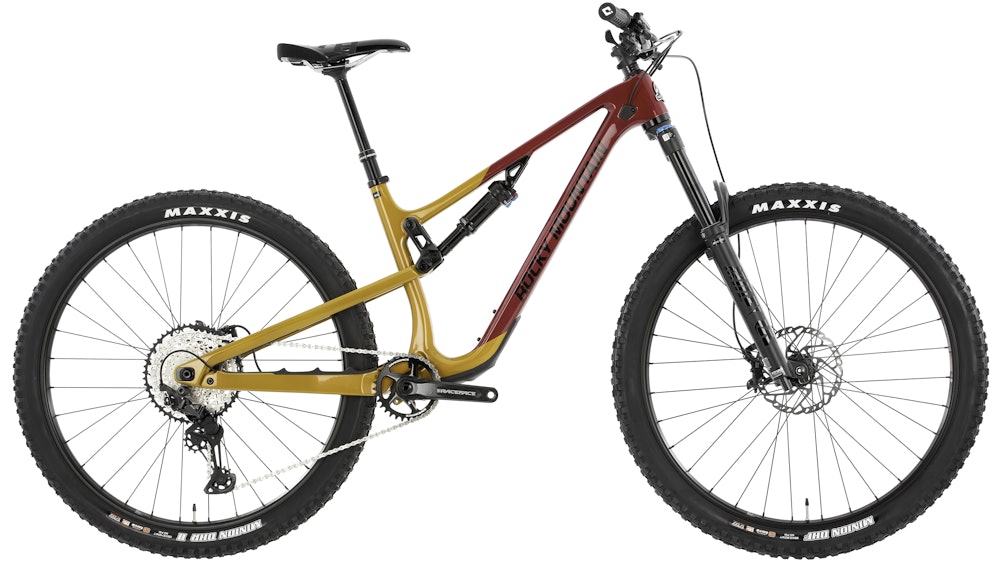
MSRP: $5,809 Jenson USA
For a top-quality and highly versatile all-mountain bike, look no further than the Rocky Mountain Instinct Carbon 50, with a Smoothwall carbon frame built to accommodate 29″ wheels.
Sure, it’s not the cheapest on the market, but with a 1×12 Shimano XT drivetrain and SLX 4-piston hydraulic brakes, we’d expect nothing less.
The lightweight frame uses Rocky Mountain’s RIDE-9 adjustable geometry, progressive sizing, and high-end suspension components for a premium trail feel.
Highlights of this bike include the Fox 36 Float Performance 150mm fork, Fox Float DPS Performance 140mm shock, Maxxis Minion DHF 2.5 and DHR II MaxxTerra EXO+ tires, and the smooth shifting XT drivetrain.
- Fork : 150mm, Fox 36 Float Performance
- Rear Shock : 140mm, Fox Float DPS Performance
- Drivetrain: Shimano XT
13 . Devinci – Troy C/A29 GX

MSRP: $5,419 Jenson USA
Devinci is a lesser-known bicycle brand that produces highly affordable MTBs and gravel bikes. The Troy 29er uses Split-Pivot suspension on a premium carbon/aluminum frame with 150mm of travel for a customizable feel with better compliance and traction.
As one of the best full-suspension bikes on this list, the Troy has surprisingly good front and rear suspension, supplied by Fox. It includes an adjustable Flip Chip for quick changing between Hi/Lo mode. The brakes are SRAM Code R four-piston hydraulic discs with Race Face AR35 Offset TR rims and Maxxis Minion DHF/DHR II tires.
- Fork : 150mm Fox Float 36 Performance GRIP
- Rear Shock : 150mm Fox Float DPX2 Performance Elite
- Drivetrain: SRAM GX 12-speed
- Frame: Carbon front triangle, aluminum rear triangle
14 . Diamondback – Release 3

MSRP: $4,100 REI
The Release is a 29″ Diamondback full-suspension mountain bike with an aluminum frame, providing a stiff and durable ride without raising the price too high. It rides on a top-quality Fox Performance Float setup with 140mm front and 130mm rear travel and Diamondback’s Level Link suspension platform, an ideal balance of speed and absorption. Additionally, a Shimano XT M8100 12-speed drivetrain offers tough components where you need them most.
No corners are cut on the wheels though, with Diamondback Blanchard running Maxxis Minion DHF/DHR 29 x 2.3″ tires, a combination that is well supported by Shimano XT M8100 hydraulic disc brakes. Overall, the Release is a killer trail bike that expertly keeps down costs without sacrificing quality, resulting in great value for money.
- Fork : 140mm, Fox 34 Performance Float
- Rear Shock : 130mm, Fox Performance Float DPX2
- Shimano XT 12-speed
- Aluminum frame
Buy on REI.com Buy on GovVelo.com
15 . Marin – Rift Zone

MSRP: $1,899 Jenson USA
The Rift Zone is a highly affordable MTB from Marin that combines impressive frame design with reliable components. On the frame, you get stiff, lightweight Series 3 6061 aluminum with Boost spacing, has ISCG05 tabs, and internal cable routing.
- Fork : 1RockShox Recon Silver RL 130mm
- Rear Shock : X-Fusion O2 Pro R, Custom Tune 120mm
- Shimano Deore, 11-Speed
With a balanced 130mm of front and 120mm rear travel from RockShox and X-Fusion, you will be able to descend with ease. Shimano BR-MT200 hydraulic disc brakes and a high-ratio Shimano Deore11-Speed drivetrain ensure you won’t struggle to keep up with the best out there. You don’t need to be a genius to know that this bike offers excellent value for money.
Buy on Jenson USA Buy on GovVelo.com
16 . Yeti – SB140 TLR T2

MSRP: $9,100 Jenson USA
A pro mountain bike for pro riders, the Yeti SB140 TLR T2 is as much a mouthful as it is a bike packed full of features. Hop on and feel the ground smooth out before you as the Fox Factory suspension swallows up vibrations and the SRAM X01 drivetrain powers you forward without faltering.
- Fork : 160mm, Fox Factory 36 GRIP 2
- Rear Shock : Fox Float X Factory
- TURQ-series Carbon fiber
With a huge 160mm of upfront travel, you’ll have no trouble taking on big jumps or steep drops, with a Fox Factory Transfer dropper seat post giving you the space you need. The stiff SB140 carbon frame complements low-slung stability with an aggressive 65-degree head angle, resulting in a fast and fun all-mountain trail bike that excels in extreme conditions.
17 . Evil – Following LS
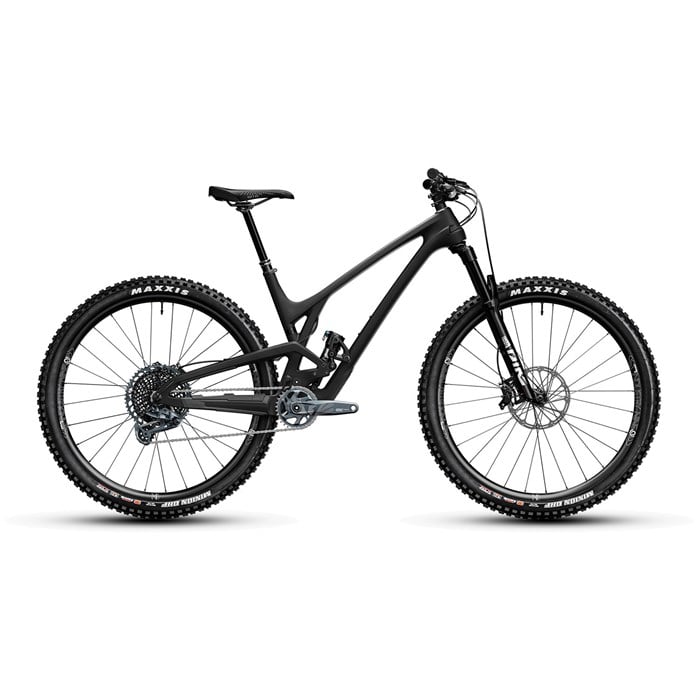
MSRP: $6,450 Evo.com
Evil is one of those underrated mountain bike brands that seldom fail to impress. The carbon-framed Following comes in various groupset flavors , with the one pictured featuring SRAM GX Eagle running a 12-speed drivetrain with SRAM G2 RS disc brakes and RockShox suspension.
- Fork: 130mm Rockshox Pike Ultimate Charger 2 RC2
- Rear Shock : 121mm RockShox Deluxe Ultimate RCT
It’s an agile 29″ trail charger that can tackle rough terrain with a decent 130mm of upfront travel on a RockShox Pike Ultimate fork. The bike has a fun feel to it, bouncing along with confidence and just an edge of excitement. With this setup, the Maxxis Minion DHF tires work especially well wrapped on Industry Nine Enduro S rims.
18 . Cannondale – Habit 4

MSRP: $3,025 REI
The Cannondale Habit 4 29er is a burly trail machine designed with speed in mind.
A RockShox 35 Gold RL 140mm fork and Deluxe Select+ 130mm shock allow for some aggressive riding, while the progressive geometry and Proportional Response design make for a consistent ride across the sizes.
- Fork : RockShox 35 Gold RL 140mm
- Rear Shock : RockShox Deluxe Select+ 130mm
- Drivetrain: SRAM SX Eagle 12-speed
- Frame: Aluminum
Both the SRAM SX drivetrain and two-piston Shimano disc brakes are great parts that are trail-proven. The slack geometry and Maxxis Minion DHF 2.5″ and Aggressor 2.4″ EXO tires also make it easier to tackle chunky terrain with confidence.
Buy on REI.com
19 . Ibis Ripley XT

MSRP: $6,999
Ibis has long been touted as one of the best mountain bike brands worldwide and its flagship Ripley XT carbon trail bike hammers home that truth with a premium component list and ultra-light design.
With 130mm of front and 120mm of rear travel, supported by DWLink suspension and V5 Kinematics, the Ripley is the perfect carbon trail bike.
- Fork : Fox Float 34 Factory Series, 130mm Travel
- Rear Shock : Fox Float 34 Factory Series, 130mm Travel
- Drivetrain: Shimano XT M8100 Shadow Plus
The steep 76-degree seat tube and high ratio 1×12 Shimano XT drivetrain make hill climbing a cinch, while the XT M8120 4-piston disc brakes combined with thick Maxxis DHRII/Dissector 29 x 2.4″ tires ensure descents are safe and nimble.
Notable extra details include internal cable routing and an ISCG mount plus a polycarbonate downtube protector.
20 . Norco – Sight A1

MSRP: $5,599 Jenson USA
The Norco Sight A1 is a 29er aluminum bike fitted with premium RockShox suspension and designed with Norco’s Ride Aligned Design System for exceptional ride characteristics. This bike has excellent climbing and descending capabilities.
- Fork : RockShox Lyrik Ultimate RC2, 160mm
- Rear Shock : RockShox Super Deluxe Select+ RT, 150mm
Norco bikes produced the Sight with ease in mind, so you can spend longer in the mountains supported by a 12-speed a SRAM GX Eagle 12-speed drivetrain should power run low. Additionally, Maxxis Assegai and Dissector tires and SRAM Code RSC four-piston hydraulic disc brakes keep you in control at all times.
21 . Santa Cruz – 5010 5 C R

MSRP: $5,300 Mike’s Bikes
The 5010 5 C R from Santa Cruz Bicycles is a powerful trail bike designed for agility and speed. This bike benefits from pure MTB DNA from Santa Cruz, with a lightweight Carbon C frame that tears through the countryside, powered by a high ratio SRAM NX Eagle 12-speed drivetrain and Guide T hydraulic disc brakes.
- Fork : RockShox Pike Base, 140mm
- Rear Shock : Fox Float Performance DPS 130mm
- SRAM NX Eagle
Utilizing Santa Cruz’s proprietary VPP suspension link system, this bike rides like a high-end bike. For any adventurous rock hoppers out there, you get 140mm of front and 130mm of rear travel to absorb the impact of those particularly courageous maneuvers.
Charge along with confidence knowing your innovative suspension system and Maxxis Minion DHR II tires will ensure you stay on track.
Buy on Mike's Bikes Read Our Full Review
22 . Devinci Marshall
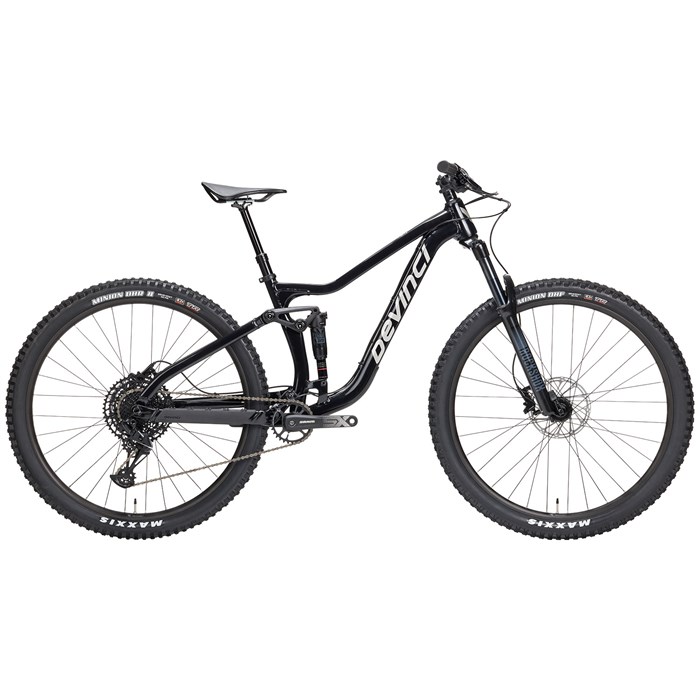
MSRP: $2,649
The Devinci Marshall is a serious alloy beast with more to give than you could read from the specs.
Besides having all the boxes ticked to conquer the rough and smoother trails with ease, what stands out the most is the mixture of solid mid-range components from TranzX dropper seat post, Maxxis Minion tires, and of course, the SRAM SX Eagle derailleur.
Finally, the bike comes with an 11-50t cassette and SRAM’s Level T precise hydraulic disc brakes that will stop you on a dime.
- Fork – RockShox 35 Silver TK SoloAir
- Rear Shock – RockShox Deluxe Select R Debonair
- Aluminum Optimum G04 Frame
- SRAM SX Eagle 12-speed drivetrain
Buy from evo.com
23 . Norco – Fluid FS 1
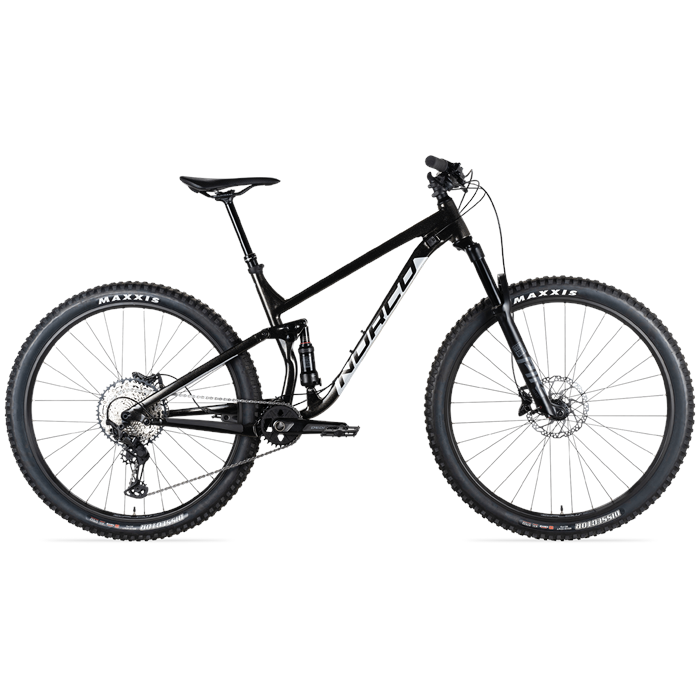
MSRP: $3,399 Evo.com
The Norco Fluid FS 1 is an affordable trail bike that combines a dependable Shimano SLX/XT drivetrain with a supple RockShox Pike Select 130mm fork, Deluxe Select 120mm shock, and aluminum frame.
The design of spec of this bike results in respectable performance without breaking the bank. It’s a great intermediate full-suspension bike for trail or XC riding without any extreme jumps or drops.
- Fork : RockShox Pike Select 130mm
- Rear Shock : RockShox Deluxe Select 120mm shock
- Drivetrain: Shimano SLX/XT 12-speed
Norco’s progressive design and modern trail geometry lend to this bike’s playful and confident trail performance. It has the perfect amount of suspension to ride comfortably along rocky singletrack and mountainous trails without swallowing up all your power.
Buy from Evo.com
Buying Guide

Ibis Ripmo – Big Wheel, Big Travel Speed Demon. What’s great about this bike is that Ibis Cycles manufacturers their own set of 29″ carbon wheels that can accomodate tires up to 2.8″ in width. “
What to Expect & How to Choose?
Trail bikes have quickly become the most common form of full-suspension MTBs, designed to tackle all forms of terrain while maintaining comfort over a long distance. Trail bikes fall between XC and Enduro bikes, offering sufficient downhill handling while retaining speed over flatter sections.
They usually have a seat tube angle in the 74-75 degree range, with shorter chainstays and longer reach. Travel ranges from as little as 120mm all the way up to 160mm, with both 29″ and 27.5″ wheel sizes popular.
You should consider your style of riding before selecting a mid-travel MTB. While they all have similar characteristics, the type of riding you intend on doing will define how much travel is ideal.
Suspension Travel
If you enjoy charging downhill or attempting small jumps, you’ll want to choose something in the higher travel range . If you prefer racing along bumpy off-road or gravel tracks at high speed, aim for something in the lower travel range .
Wheels & Tires
Other points to consider include wheel and tire size. Larger 29″ wheels are better for speed and absorption, whereas the small 27.5″ wheel size is more agile on downhills and sharp corners. 2.5″ width is somewhat average, while 2.8″ is considered as wide.
Different MTB Disciplines
Xc vs. trail.
Cross-country (XC) is generally considered the most traditional mountain bike style with the most versatile usage. Hence the name, Cross-Country Mountain Bikes can handle all types of terrain from smooth singletrack and gravel roads to rocky trails and technical mountain tracks.
XC mountain bikes typically have a shorter wheelbase for agility and steeper geometry for easier hill climbing. Head angles are in the range of 69-71 degrees, with seat tube angles between 74-75 degrees. They usually have the lowest amount of travel, from 90-100mm , and 29″ wheels for a faster, stiffer ride.
>>> Related: Best Short-Travel Mountain Bikes (100-130mm range)
Trail/All-Mountain vs. Enduro
Enduro bikes attempt to combine aggressive downhill geometry with uphill climbing ability, resulting in a bike that can tackle highly technical courses over varied terrain.
They typically have the longest, lowest, and slackest geometry of all MTB styles, making them less comfortable over long distances, but also more versatile. They are both stable on downhills and powerful on ascents, with suspension in the 150-180mm range and tires from 2.3″ to 2.8″ thick.
>>> Related: Best Enduro Mountain Bikes (150-180mm range)
27.5″ vs. 29″ – The Endless Debate
Mountain bike wheel sizes have become a hot topic recently, after years of 26″ wheels dominating the market. Since the 29″ wheels began gaining popularity in the mid-2010s, manufacturers began experimenting with different wheel sizes, introducing the mid-sized 27.5″ or also known as the 650b wheel size. Nowadays, almost all MTBs use either 29″ or 27.5″, with subtle but noticeable differences between the two. You’ll still find 26″ wheels on smaller frame sizes on some models.
- Being larger, 29″ wheels are better for taller riders and while they offer less acceleration, they have better traction and attack angle which eventually means better speed .
- 27.5″ wheels are faster and lighter , with better maneuverability and greater versatility .
27.5″ MTB wheels are also known to have the availability to fit wider tires of up to 3″ in width, while the standard max clearance for 29″ tires is 2.6″
>>> Related: Best Mullet Mountain Bikes
Which are the best mountain bike brand on this list?
Ibis, Yeti, Santa Cruz, Revel, Transition, and Evil are some of the boutique-type brands in the MTB business, while Salsa has the most models available. Cannondale has also done a great job providing online shoppers with a variety of mountain bikes from their fleet.
What is the best all-mountain bike?
The different types of mountain bikes might confuse most riders, but it isn’t actually as confusing. An all-mountain bike is basically built 70% for ascending and 30% descending, making it a few notches harder to ride than the regular trail bike.
Do you need the rear suspension lock-up switch?
Climbing is a part of mountain biking, and if you tend to be the climber who climbs while seated, a rear suspension-lock-up switch might be useful for you. The switch works wonders on longer-travel bikes with slacker geometry, while you’ll generally see the switches on higher-end models.
Where to buy trail and all-mountain bikes?
These are the best online bike shops to buy mountain bikes online
Mike’s Bikes Awesome set of high-end and mid-range mountain bikes, both full-suspension and hardtail
JensonUSA Obviously one of the more known stores that will fix you up a good deal
Evo.com Bikes & frames by the best brands available
GravityCoalition You can find pretty sweet last-size deals there on full-suspension and eBikes as well.
REI Cannondale, Co-op Cycles, and Salsa mountain bikes are represented.
Share this on:
About the Author

Mark Hartley
One thought on “ best trail & all-mountain bikes (130-160 mm travel) ”.
How come no Banshees on this list?
Leave a Reply Cancel reply
Your email address will not be published. Required fields are marked *

2-FOR-1 GA TICKETS WITH OUTSIDE+
Don’t miss Thundercat, Fleet Foxes, and more at the Outside Festival.
GET TICKETS
BEST WEEK EVER
Try out unlimited access with 7 days of Outside+ for free.
Start Your Free Trial
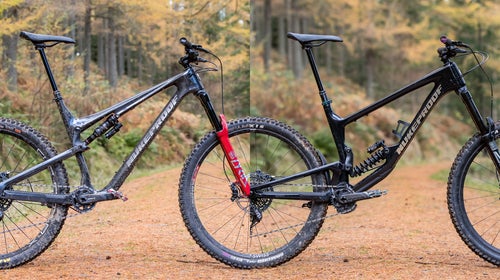
Short or Long Travel: Which Is the Best All-Around Mountain Bike?
How much slower does a modern long-travel bike climb? And what are the differences downhill?
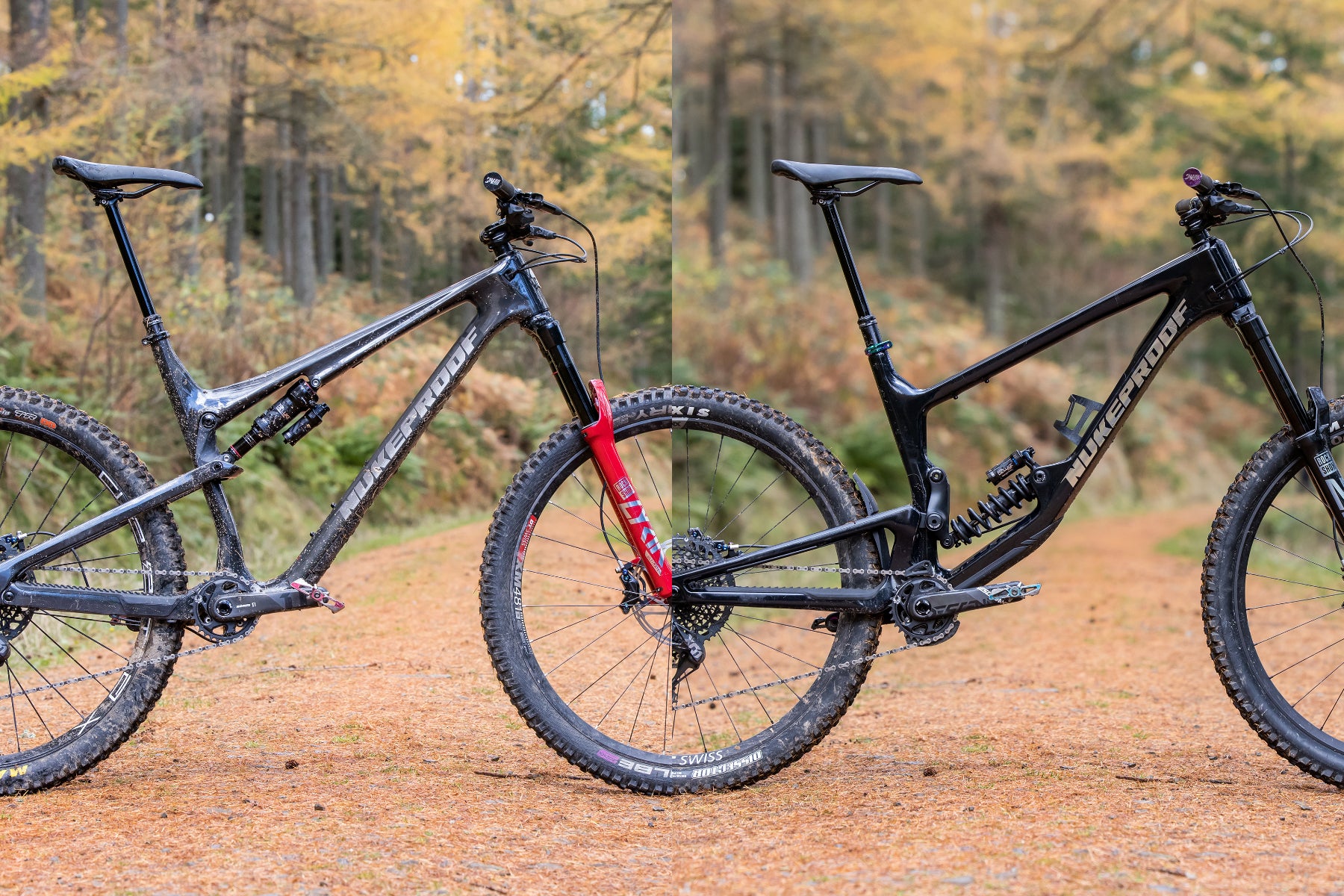
Heading out the door? Read this article on the Outside app available now on iOS devices for members! >","name":"in-content-cta","type":"link"}}'>Download the app .
If you want one bike to do everything, how much travel should it have? All bikes have to find a compromise between climbing and descending performance, and suspension travel is usually seen as a good indicator of where a bike sits on that spectrum.
But recently, short-travel trail bikes are a lot more capable, while long-travel bikes are much better at climbing. So how much slower is a modern long-travel bike uphill? And what are the differences downhill?
Caught up in all this is the question of tire choice. How much of the difference in climbing speed between an enduro bike and a trail bike comes down to the tires? Can fast-rolling tires close the gap? And can sticky tires make a short-travel bike descend as well as a long-travel one? Let’s find out.
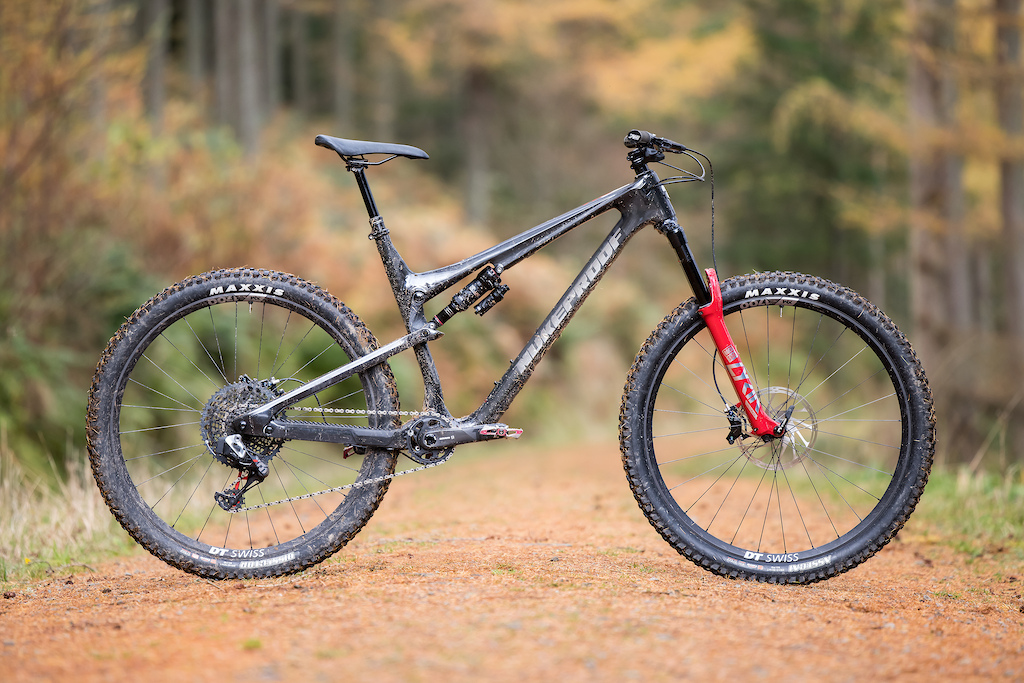
Nukeproof Reactor
• 130 / 150 mm travel • Weight as tested: 14.4 Kg / 31.7 lbs (“trail” tires, 200 mm rotors) • Size tested: XL • Price: $7,062
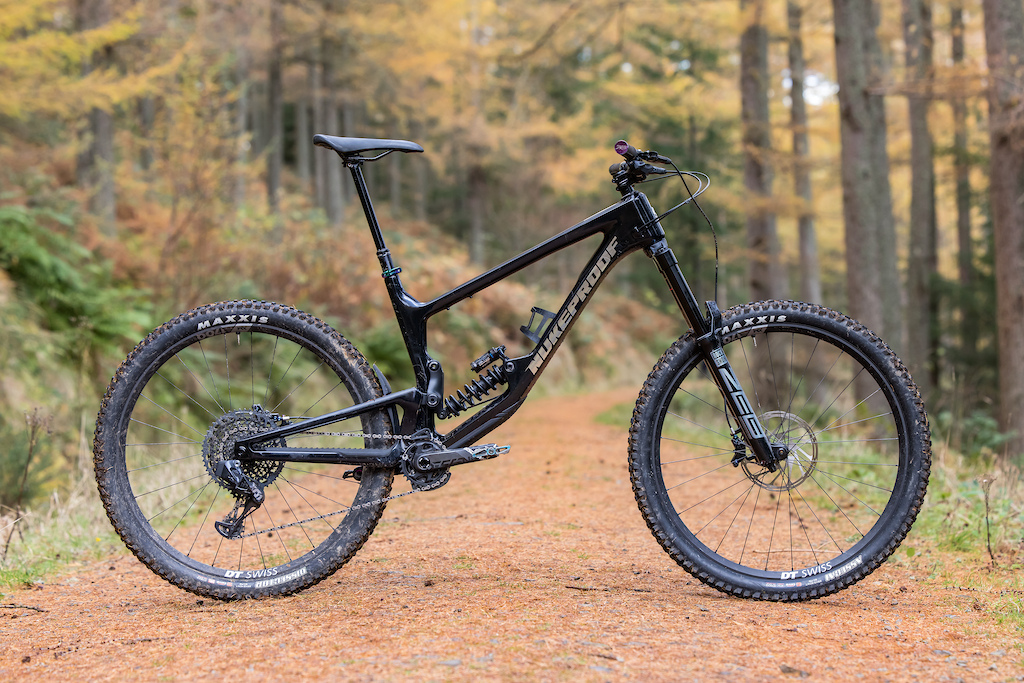
Nukeproof Giga
• 170 / 180 mm travel • Weight as tested: 15.2 Kg / 33.5 lbs (“trail” tires, air shock) • Size tested: XXL • Price: $7,415
To make things as comparable as possible, I got hold of a Nukeprof Reactor RS and a Nukeproof Giga RS. The Reactor has 130 millimeters of rear travel and 150 millimeters up front, while Giga serves up 170 millimeters (rear) and 180 millimeters (front). These models have identical brakes, drivetrains, and cockpits. With the same wheels and tires fitted, only the frame and fork are different. Both use full-carbon frames and RockShox Ultimate-level suspension. The Reactor has a Lyrik fork to the Giga’s Zeb, but the difference in chassis diameter is appropriate to the travel offered in each case.
Although the photos used here were taken with a coil shock fitted to the Giga, the testing was carried out with a RockShox Super Deluxe air shock to match the shock on the Reactor. I upgraded the rear rotor size on the Reactor to 200 millimeters so both bikes could accept the same wheels for comparative testing.
I set both bikes up with 30 percent shock sag and suspension settings as I would normally have them.
For the most part, I used the wheels that came stock on the Reactor for both bikes to remove the variable of tire choice. These tires were a Maxxis Dissector, EXO+ casing, MaxTerrra compound (rear) with a Maxxis Assegai, EXO casing, MaxxTerra compound (front). For brevity, I’ll call these the “trail” tires from now on. Fitting these tires and the air shock to the Giga dropped its weight to a respectable 15.2 kilograms – only 800 grams (1.8 pounds) more than the Reactor with the same wheels.
I also tested with a stickier pair of tires (fitted to another alloy wheelset for easier wheel swaps). These were a Maxxis Assegai in DoubleDown casing, MaxxGrip compound on the rear, with a Schwalbe Magic Mary, SuperGravity casing, Soft compound, on the front. We’ll call these the “enduro” tires. These wheels/tires weighed 600 grams more than the trail wheels/tires.
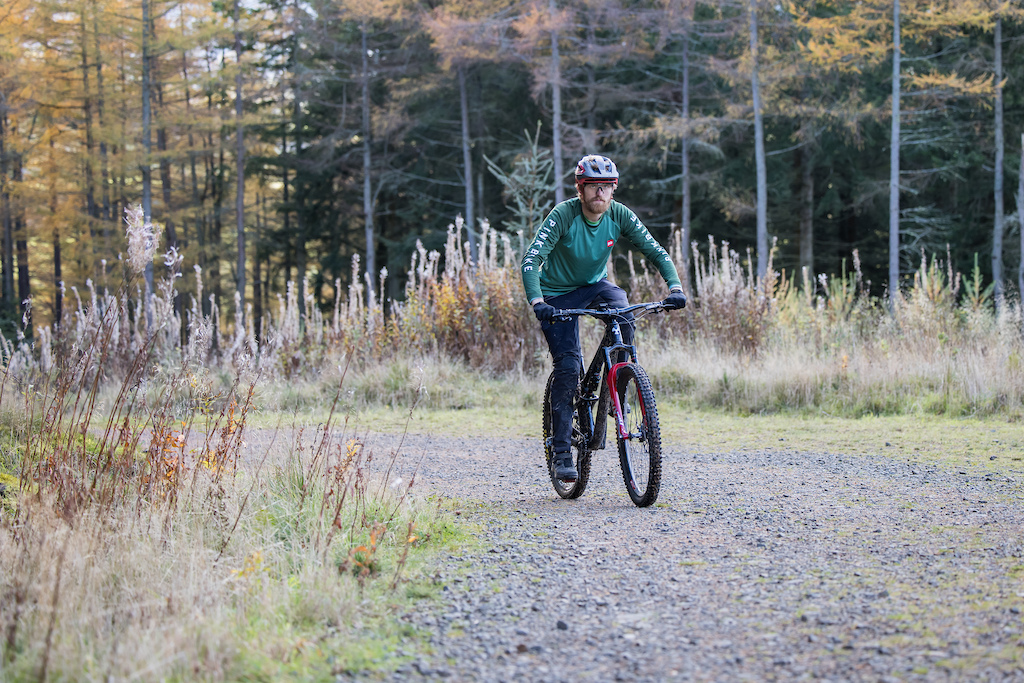
For the climbing test, I used a pair of SRM power meter pedals to control my effort, which I kept at a steady 250 watts. I rode both bikes up the same gentle and smooth fire road climb. I used a short climb so I could do five laps on each bike in quick succession and take an average. If I only did one or two longer climbs on each bike, there would be no way of knowing if any difference in times was down to the bike or just a fluke.
I did this first with the trail tires at my usual riding pressures (23 and 26 psi) then I re-tested the Reactor with the enduro tires. Here are the times:

As you might expect, the Giga was slower on average than the Reactor, but the average time was only 0.8 percent slower. Because the Reactor wasn’t consistently quicker, and the average difference between the bikes was so small, we can’t be sure from these numbers if the difference between the bikes is real or just a fluke. In science terms, the difference wasn’t statistically significant.
But even if we take the 0.8 percent difference at face value, that’s about what we’d expect from the weight difference between the two bikes alone, suggesting the travel per se (i.e. the pedaling efficiency) wasn’t having any effect.
In contrast, with the enduro tires fitted, the Reactor went 4.1 percent slower, or 3.4 percent slower than the Giga with the trail tires. In both cases, these are statistically significant differences, because the Reactor with Enduro tires was consistently slowest. To give that some context, over a half-hour climb, the enduro tires would add about one minute and fourteen seconds to the Reactor’s time. Or to go at the same pace, you’d need to produce about 260 watts instead of 250 watts; if you’re already working hard, that could be very noticeable.
The added weight of the heavier tires would only be expected to slow things down by at most 0.6 percent, so most of that difference is down to rolling resistance. This added drag will make covering ground slower on the flat and even downhills too (so long as traction and braking aren’t what’s limiting speed).
Subjectively, you can feel a little pedal bob from either bike, but there isn’t dramatically more with the Giga. The position is quite different due to the Reactor’s lower stack height and slacker seat tube angle (74.5 degrees vs. 78 degrees); this stretches out the spine which feels much less comfortable to me, especially on long climbs. Doing timed testing over technical climbs is virtually impossible because the time can vary so much from one run to the next depending on line choice, technique and luck, but when riding over bumpy terrain the Giga is noticeably smoother. The softer suspension obviously helps here but having your weight further in front of the rear axle also reduces how much your weight lifts when the rear wheel moves over a bump. Though I can’t put a number on it, I much preferred the Giga for technical climbs.

To see how they compare for descending, I chose a short local trail I know well with a good mix of roots, rocks, steep twisty sections and flat fast sections. It’s not the most technical trail in the world and it’s definitely not the roughest, but on the day of testing (which was a couple of days before taking these photographs), it was wet and slippery, making it a good challenge. To level the playing field and keep things simple, I stuck with the trail tires on the Giga and the enduro tires on the Reactor.

The Giga went first, and despite doing two laps to get up to speed on the course before getting the timer out, I shaved 2-3 seconds off my time from one run to the next. This is always a problem with timed testing. My first time on the Reactor (my fourth timed run of the day) matched the first run on the Giga. It improved from there but levelled out at one minute and sixteen seconds.
I did one more run on the Reactor with the trail tires and matched my fastest times, suggesting the stickier tires weren’t much of an advantage on this course anyway. I’m sure that on a more treacherous course—or in the hands of a rider who is better at finding the limit of grip—the enduro tires would become a significant advantage.
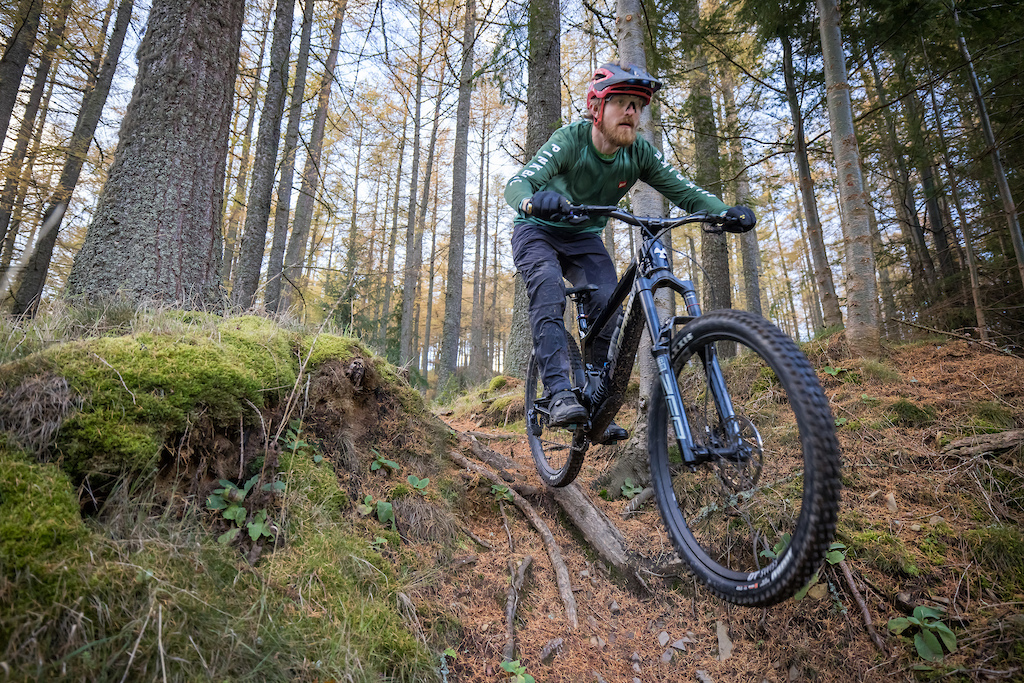
Subjectively, the enduro tires felt much more damped and surefooted and I was locking up less on the steep sections, but this didn’t seem to translate into more speed for me. Even with the sticky tires on the Reactor, the Giga felt much smoother, calmer, and more stable. The higher bar and slacker head angle combined with suspension that feels more settled “in the travel” makes going faster feel more within my comfort zone. I also felt like there was more time left on the table with the Giga, whereas the last two runs on the Reactor would be hard for me to improve on.
Because there are so many variables at play when descending, I wouldn’t read much into the times themselves. But they reveal that, although I felt closer to the edge on the Reactor, I was in fact going slower.

Closing Thoughts
The biggest takeaway for me is just how much difference tire choice makes for climbing speed. Sure, the enduro tires I tested are pretty draggy, but they’re not DH tires or mud spikes, and the trail tires (with an Assegai up front) are far from the fastest you can get. In fact, they held their own even on slippery descents.
I’m sure plenty of people don’t care about going slightly faster or feeling more comfortable on steep descents; in fact, I often hear people say they find it more fun to have a sketchier ride at slower speeds. But if that’s the case, why not fit slicker tires which will offer a real boost in climbing speed as a bonus? You could always use the lockout or run 10 percent sag if you want your enduro bike to feel sketchier! Personally, I have more fun on a long travel bike as it gives me the confidence to try new lines or ride them with more commitment.
The other surprise was that the Giga was barely slower uphill than the Reactor with the same tires, and if you want to close the efficiency gap even more you could always use the lockout.
One caveat here is that a power meter may not be the best way to measure and control effort in an efficiency test when comparing suspension efficiency. I discuss this with Mike Levy in this episode of the Pinkbike Podcast , but the bottom line is that I think the power meter method is valid for measuring efficiency when pedalling sitting down (as in this test), but it doesn’t work for out-of-the-saddle sprinting, and that’s where the extra travel is more likely to be a disadvantage.
It’s also fair to say the Reactor isn’t the fastest-climbing short-travel bike out there. But the Giga probably isn’t the most efficient among 170 millimeter+ bikes either. It’s based on a downhill bike and it’s designed to be even more gravity-focussed than Nukeproof’s Mega enduro bike. More to the point, it doesn’t have a huge amount of anti-squat , and higher anti-squat levels would probably make it climb even better. In one of Levy’s efficiency tests , the 170 millimeter-travel Santa Cruz Nomad (which has quite a lot of anti-squat) was faster than the 130 millimeter Ibis Mojo (despite having slower tires), suggesting a long-travel bike with generous anti-squat can be as just as efficient as a shorter travel one.
The bottom line is that ample suspension travel needn’t be a hindrance uphill, but grippy tires will slow you down a lot. So if you want one bike to do everything, it might make sense to pick a long-travel bike with a spare set of fast-rolling tires for mellower rides.
This article first appeared on our sister site, Pinkbike .
- Mountain Biking
Popular on Outside Online

Enjoy coverage of racing, history, food, culture, travel, and tech with access to unlimited digital content from Outside Network's iconic brands.
Healthy Living
- Clean Eating
- Vegetarian Times
- Yoga Journal
- Fly Fishing Film Tour
- National Park Trips
- Warren Miller
- Fastest Known Time
- Trail Runner
- Women's Running
- Bicycle Retailer & Industry News
- FinisherPix
- Outside Events Cycling Series
- Outside Shop
© 2024 Outside Interactive, Inc
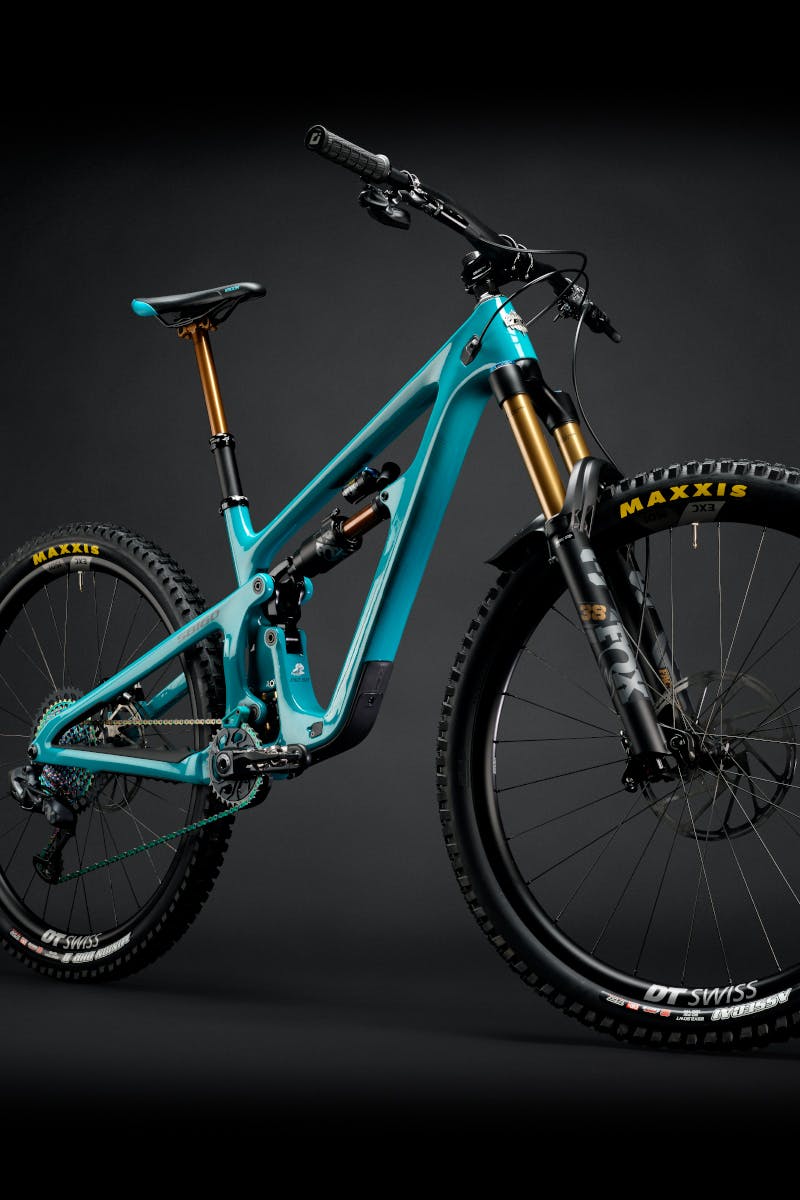
Upholding a time-tested, race-bred ethos that says nothing should hold a rider back from the sheer joy of untethered speed. Built off one of the most winning race platforms in Enduro history, the SB160 is pure race machinery. Honed for more. Be fastest.

From Legacy To Dynasty.
The Yeti/Fox factory team won 49 EWS stages, 11 EWS races, and 1 national series championship aboard the SB150. The SB160 builds momentum on this legacy of excellence. Honed. Refined. Even effing faster.
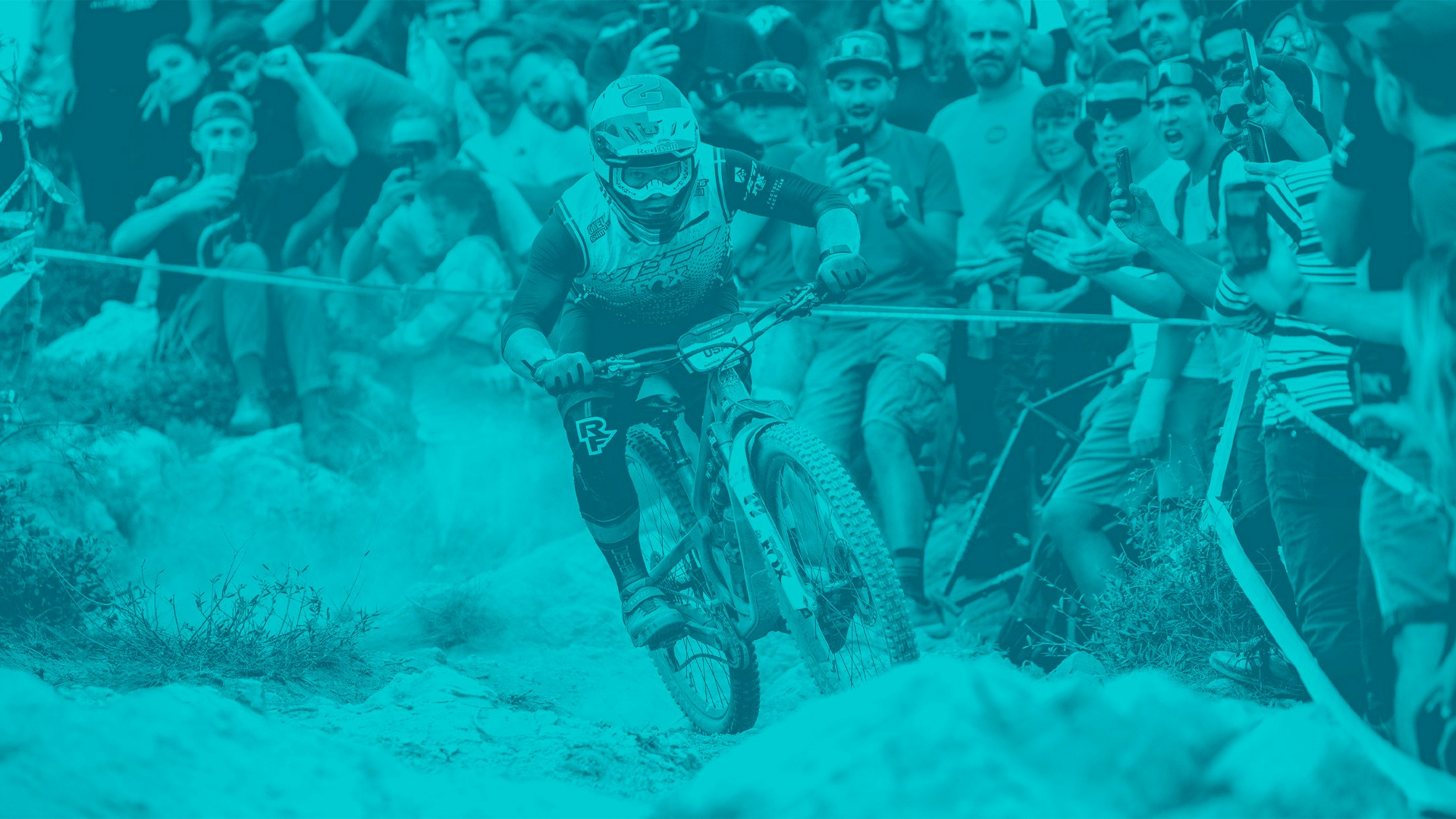
f e a t u r e s
Switch infinity. recalculated..
Discover the next-generation of translating pivot suspension designs. Setting new expectations for kinematics, longevity, sensitivity, and strength.
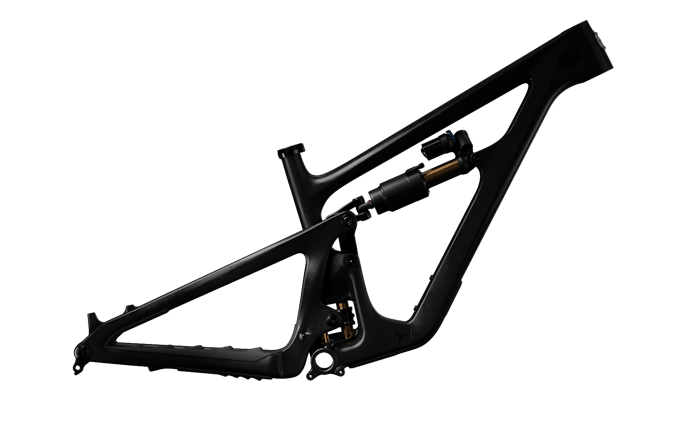
THE NEW SILHOUETTE OF SPEED.
The refined main frame and swingarm silhouette is more than just striking good looks — it’s an engineering approach that packages Switch Infinity and shock linkage in a tighter, more efficient frame with added impact clearance. Holistic frame chassis stiffness has increased, along with frame ground clearance.
UNPARALLELED FEEL. FOR ALL RIDERS.
Every rider deserves a frame feel that’s tuned for them, regardless of frame size. Over the course of hundreds of virtual simulation comparisons and back-to-back carbon prototype testing, we’ve refined our carbon layups to deliver consistent torsional stiffness and flex profiles across all frame sizes. The feel is precise yet compliant while structurally balancing lightweight and durability.

Cable Management.
Internally routed cable tubes with secure closures at entry and exit points eliminate rattles and cable rub. Whether running a mechanical drivetrain and dropper or a wireless setup, cable management is intuitively easy and quiet.
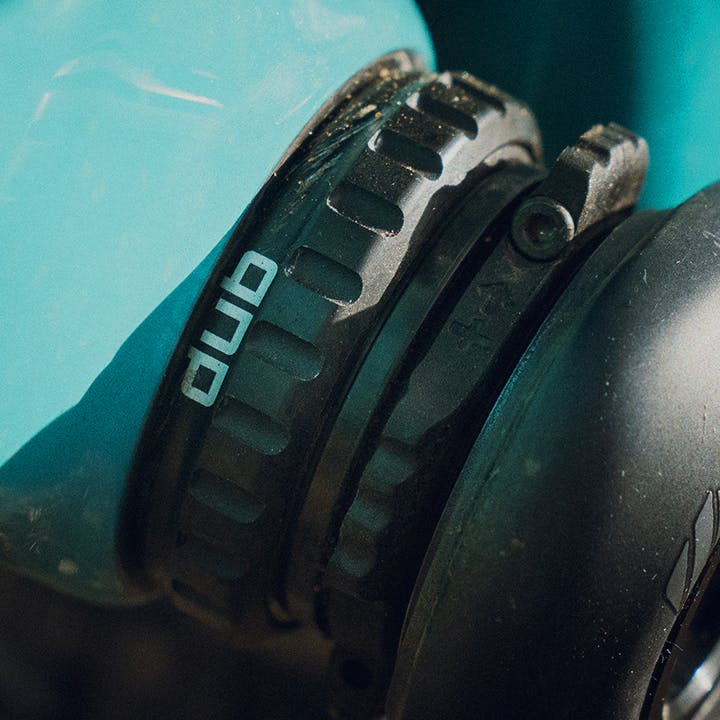
Threaded BB.
Threaded aluminum bottom bracket shell with integrated ISCG-05 tabs. This critical drivetrain interface is now more durable, cleaner, and easier to service.

Universally Ready.
If a hanger bending crash occurs, the new Yeti models use the Universal Derailleur Hanger (UDH) interface — the industry standard mount for a rear derailleur. The UDH is available in nearly any bike shop, Yeti dealer or not.
I like winning so it's easy to love this bike.
Richard F-in' Rude
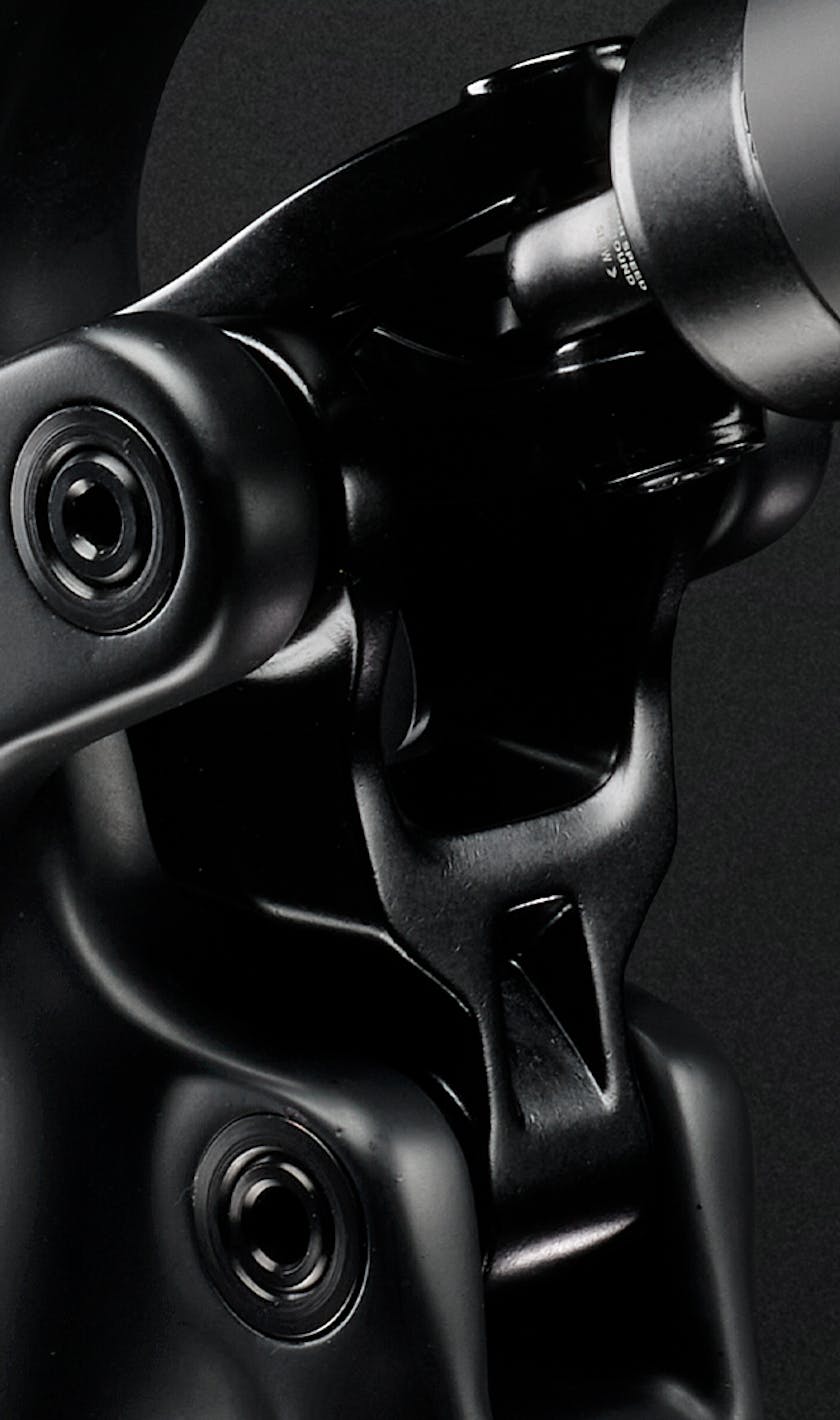
PATENTED COMPACT WISHBONE.
Our patented, two-piece wishbone shock extender on the SB160 ensures optimal clamping, shock compatibility, and ease of shock removal for longer travel applications.
We are able to optimize leverage rates while pushing the shock forward in the frame. This forward positioning allows for a large range of shock compatibility, decreases standover height, reduces shock tab sizes, increases water bottle compatibility, and increases downtube clearance.

25mm more downtube clearance
2.6 tire clearance with room to spare, floating collet pivot axles enhance frame stiffness and bearing life, 5 size specific geometries.
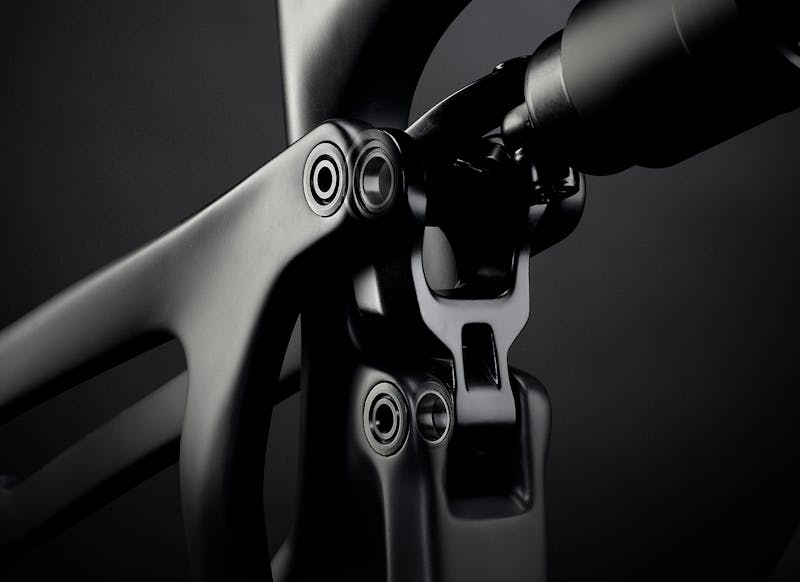
SPEED METAL.
Our new pivot designs use 100% standard sized cartridge bearings secured with precision — machined floating collet axles. All bearings are pressed into the linkage assembly vs the swingarm or front triangle.

Leverage Rate for Real Speed.
Forget what you know — the clock proves more progressive curves aren’t faster. The SB160’s kinematics have been refined for the added travel with increased bottom out control while maintaining a relatively linear progression curve. Why a linear curve? Athletes experience more predictable damping characteristics throughout the travel. Predictability in a competition setting can make the difference between participating or winning.
Progressivity
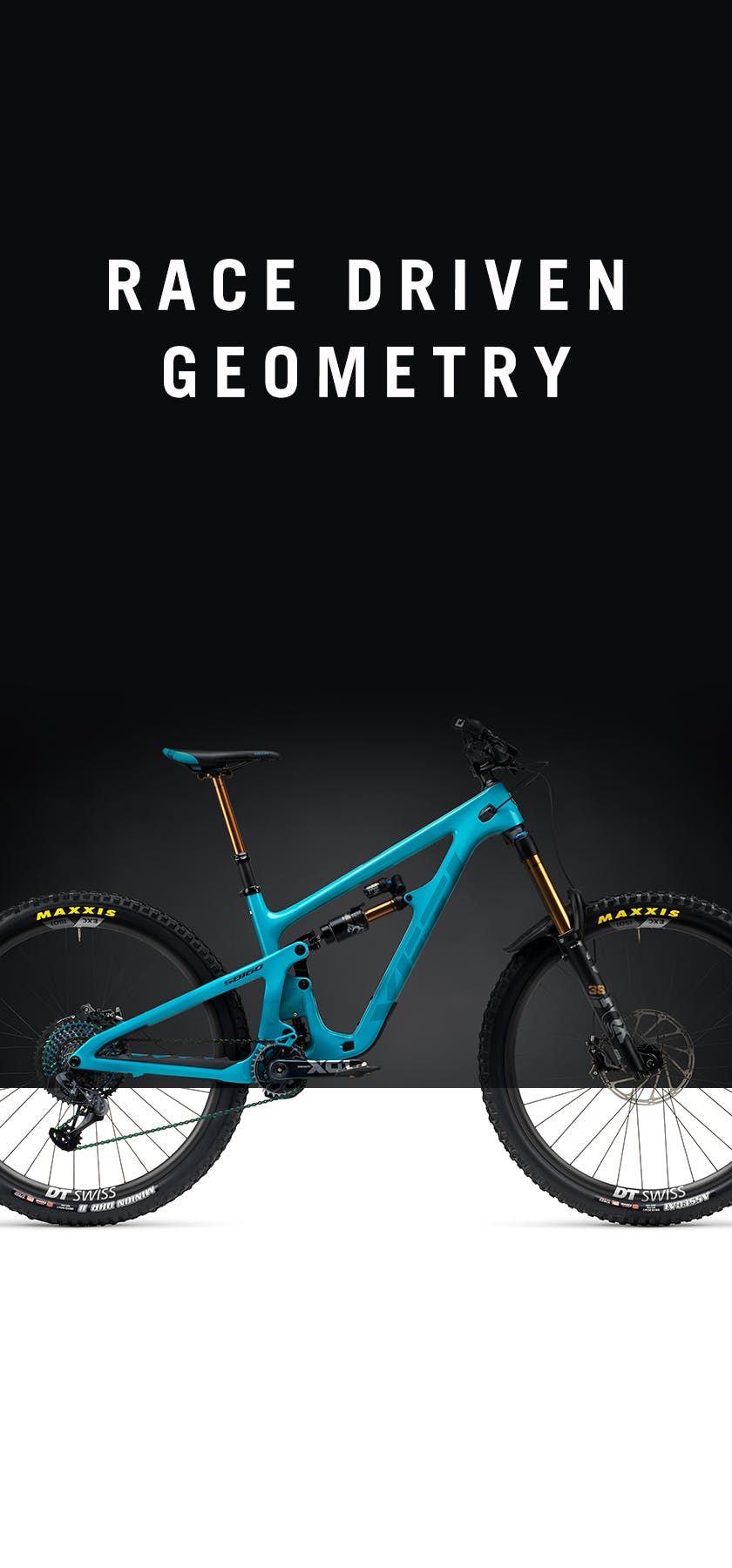
More balanced at speed.
Our factory team wanted even more confidence at pace. To achieve this, we’ve further refined geometry with little more reach, rebalanced front and rear centers, and size-specific chainstay and seat tube angles. It’s our most confidence inspiring geo to date. And it’s optimized by frame size, ensuring athletes of all sizes and styles are in a position that prioritizes speed and efficiency.
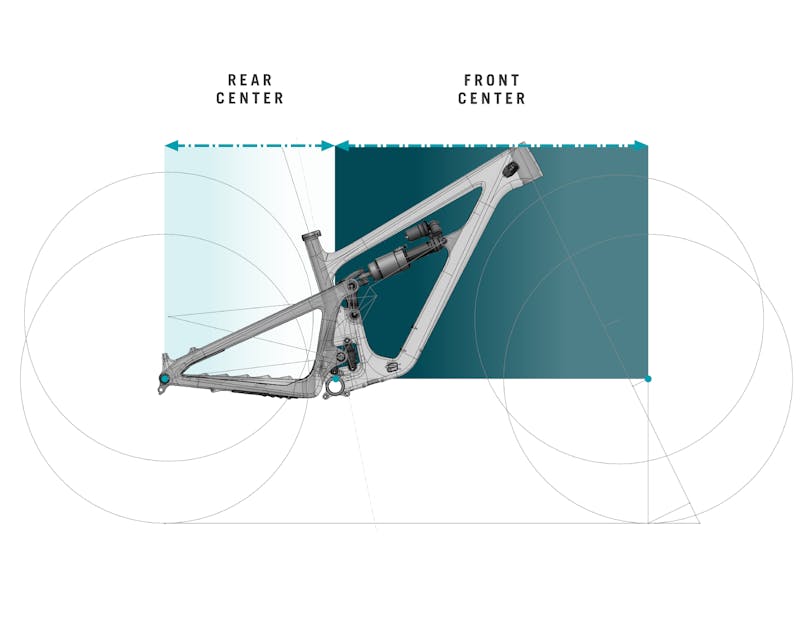
FORWARD BIAS POSTURE
Slightly longer reach provides greater traction, while maintaining a centered position.
SLIGHTLY SHORTER SEAT TUBE
Keeps athletes agile when the seat is dropped in turns and steeps.
10MM LONGER REAR TRAVEL
Delivers slightly more vertical travel out back for less wheel hang up, carrying greater momentum in the rough.
High-impact strength carbon layup tuned to go fast and tested to DH standards.
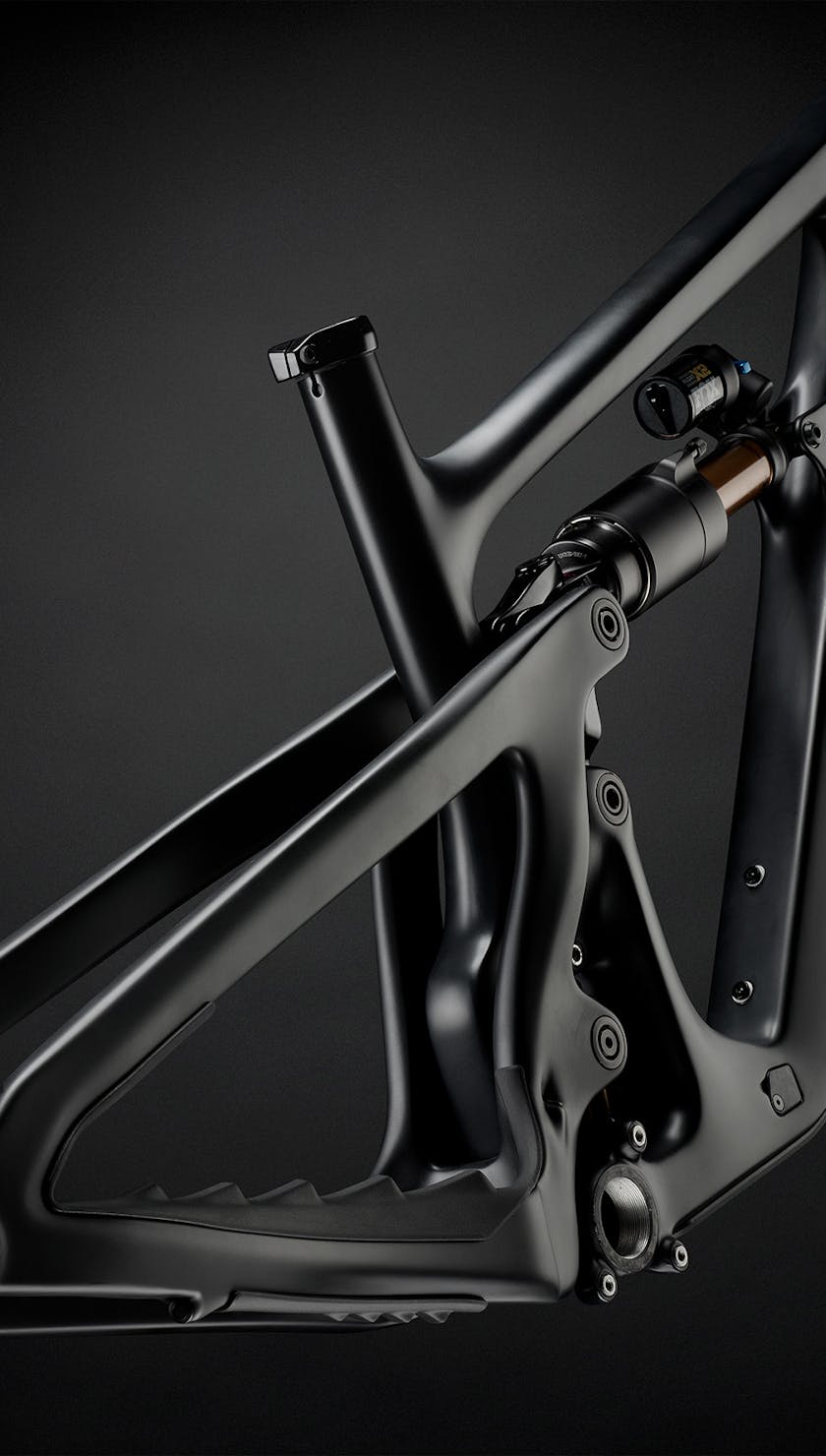
Carbon Layup
Made with the highest quality carbon fiber available, TURQ series bikes offer the perfect balance of stiffness and compliance.

The SB160 is nimbler than any of its competitors and yet incredibly composed and intuitive to ride, thus uniting supposed opposites like no other bike in this test. The best enduro bike for 2023!

If you want to enjoy the climb and nail the descents, in my opinion, this is the best enduro bike you can buy.

Basically, the faster you go , the better the SB160 performs.

Yeti built its storied heritage as a company that designs bikes for those who prioritize speed above all else. This focus is apparent from the moment you hop aboard and begin pedaling.

We could float through square-edged hits or jib off of side booters effortlessly aboard the SB160. To top it all off, our test bike was incredibly quiet.
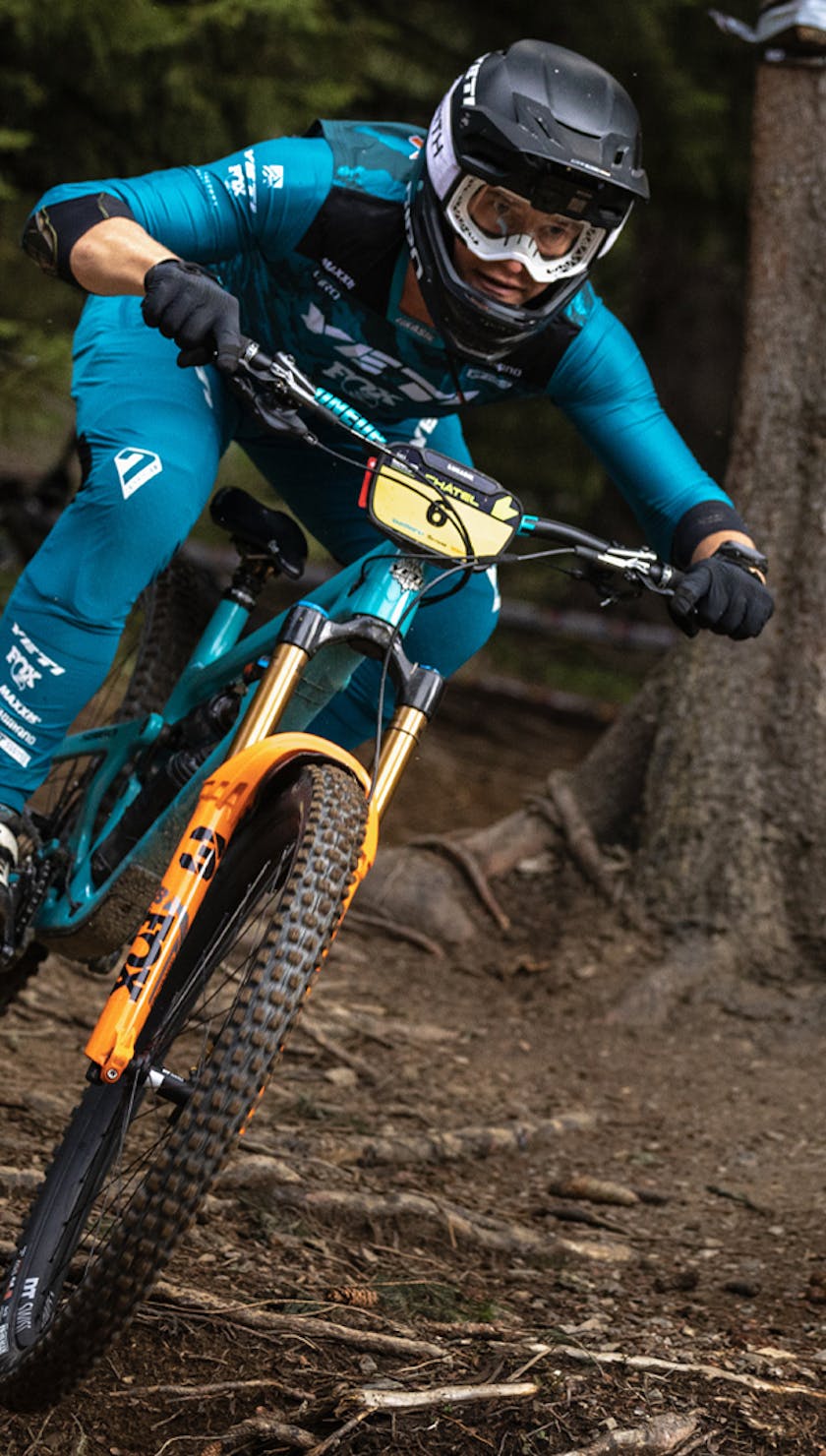

Awesome MTB
Best long travel enduro 29er bikes in 2024 (160-170mm of travel).
I’ve said it before and I will say it again, 2024 is the year of bikes! So many awesome bike releases this year that with summer right around the corner I figured I would put together a list of 5 long travel enduro bikes that would be perfect for this season! This list might change soon though with Sea Otter right around the corner and more launches coming! Also this is just a list, stay tuned for more in depth content on these bikes coming soon:

1.Rocky Mountain Altitude: This bike has to come first simply because it seems like Rocky Mountain is actually trying to shake the bike industry up this year with 2 solid launches in a row! First they gave us the updated Instinct, and now we have the new Altitude, a 160mm travel bike with a 63 degree-ish head angle. The reason for the “ish” is because the bike also comes with loads of geometry adjustments making sure you can dial this long travel rig in for whatever you are going to throw at it!

2. Knolly Chilcotin: With a 170mm of travel and bike wizard Noel Buckley driving the designs, this bike first came on my radar recently because of Nic from VanCan. I used to have a Knolly and the bikes ride amazingly. However this year they went to a straight top tube design on this 170mm downhill ripper and I have to say, it looks clean! If you are looking for optimal traction, this one has to be on the list as Knolly’s are known to have some of the most supple initial strokes out there!

3. Deviate Cycles Claymore: I don’t even know where you would buy this bike. All I know is that I have been seeing these high pivot bikes pop up more and more at our local trail systems and the Deviate just has a look about it that pops out! From what I have heard, high pivots provide a significant amount of added traction with the cost of some slight friction while pedaling. 2024 is the year I will be getting a high pivot bike in for testing, so stay tuned!

4. Ari Bikes La Sal Peak: Fun doesn't have to break the bank and the ARI La Sal Peak is a 170mm enduro bike that will make sure you still have money for season passes to your local bike park! I spent a lot of time on the La Sal Peak last year, including a huge 16k feet of climbing day in Whistler, and all I can say is that it is probably one of the most versatile 170mm bikes in this category. And with a sale price of $2899 for a complete bike? Insane.

5. Pivot Cycles Firebird 29: I loved my Switchblade I had in earlier for testing and also loved the vibes coming from Pivot Cycles. You can tell they really care about bikes. But the real reason this bike made it into this list is the limited edition 2 tone paint job this 165mm enduro ripper has. This might just be the best looking bike currently on the market paint wise. Oh and I guess if you are into performance, my old Firebird was one of the best long travel 29er’s I have owned and from what I have gathered, this one only got better.
Happy Trails!
-Mo Awesome
- Mountain Bike Reviews

29 Bikes Checks from the Sea Otter Classic 2024!

Random Bikes and Trucks of the Sea Otter Classic 2024! (Day 3)

Day 2 of the Sea Otter Classic 2024! (New Bikes and Trucks?)
Stay up to date!
Thanks for subscribing!
- Bikes / Frames
- Sealants & Flat Protection
- Tubeless Tape & Kits
- Tubeless Valve Stems
- Misc. Valve Parts
- Suspension Forks
- Rigid Forks
- Fork Parts / Service
- Rear Shock Parts / Service
- Groupsets / Drivetrain Bundles
- Cranks / Cranksets
- Crank Parts
- Bottom Brackets
- Rear Derailleurs
- Derailleur Hangers / Parts
- Chainguides
- Chainring Bolts
- Chain Tensioners
- Single Speed Cogs / Kits
- Front Derailleurs
- MTB Right Hand Shifters
- MTB Shifter Sets
- MTB Left Hand Shifters
- Drop-bar Right Hand Shifters
- Drop-bar Left Hand Shifters
- Drop-bar Shifter Sets
- Drop-bar Hydraulic Brake / Shift Levers
- Shifter Parts
- MTB Handlebars
- Drop Bars (Gravel, CX, Road)
- Handlebar Tape
- Disc Brakes
- Disc Brake Rotors
- Disc Brake Adaptors
- Disc Brake Parts
- Road Caliper Brakes
- Cable Pull Brake Levers
- Dropper Posts
- Dropper Post Remotes / Levers
- Rigid Seatposts
- Seatpost Parts / Shims / Misc.
- Seatpost Clamps
- Suspension Seatposts
- Saddles / Seats
- Flat Pedals
- Clipless Pedals
- Pedal Small Parts
- Front Wheels
- Rear Wheels
- Rim Tape & Kits
- Complete Headsets
- Headset Spacers
- Headset Parts
- Shifter Cable & Housing
- Brake Cable & Housing
- Misc. Cable Parts
- Multi-Tools
- Chain & Other Lube
- Fork Oils & Lubes
- Grease & Assembly Compound
- Repair Stands
- General Bike Tools
- Hex / Allen Wrenches
- Component Specific Tools
- Tire & Tube Repair
- Frame Tools
- Wheel Tools
- Cleaning Tools
- Degreaser / Cleaners
- Shop Supplies
- Hitch Racks
- Tailgate Pad / Bed Mounts
- Trunk Racks
- Spare Tire Racks
- Rack Accessories & Small Parts
- Frame Straps
- Floor Pumps & Parts
- CO2 Inflation Devices & Cartridges
- Shock Pumps & Tuning Tools
- Frame / Mini Pumps
- Chainstay / Frame Protectors / Fenders
- Bike GPS / Computers
- Computer Mounts / Accessories / Parts
- Camera Mounts / Accessories
- Hydration Packs / Hip Pack / Backpacks
- Top Tube / Stem Bags
- Frame Packs
- Phone / Electronic Bags & Cases
- Night Riding Lights
- Safety / Tail Lights
- Light Parts / Mounts
- Water Bottles
- Water Bottle Cages
- Gift Ideas / Novelties
- Rear Wheel Trainers
- Roller Trainers
- Trainer Accessories / Parts
- Bike Travel / Shipping Cases
- Bars and Snacks
- Drink Mixes
- Supplements / Minerals
- Cable Locks
- Chain Locks
- Folding Locks
- Storage Racks / Stands
- Knee Pads / Shin / Leg Protection
- Elbow Pads / Arm Protection
- Torso Protection
- Padded / Protective Short Liners / Chamois
- Sunglasses / Accessories
- Chamois / Short Liners / Base Layer
- Chamois Creams / Embrocations / Butt'r
- Jackets / Vests / Hoodies / Flannels
- Tees / Shirts
- Hoodies / Flannels / Jackets
- Top Secret Sales (Do Not Tell!)
- Help / FAQ's
- Contact Us / Locations
- Call Us | 1-805-375-4525
- Why Shop With Us?
Currency: USD BRL CAD EUR AUD GBP RUB CLP NZD
- Continue Shopping
- Your Cart is Empty
FREE U.S. SHIPPING ON EVERYTHING!

- USD BRL CAD EUR AUD GBP RUB CLP NZD
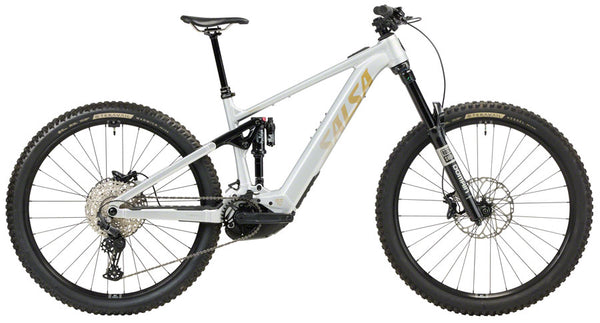
Salsa Notch Deore 12 Ebike - 29", Aluminum, Silver, Medium
Notify me when this product is available:

Customers Also Bought...
- Description
- Shipping / Returns
- Product Question?
- 6061-T6 alloy frame with high-modulus carbon fiber control link
- Split Pivot suspension design with 160 mm of efficient travel
- Split Pivot+ frame design allows riders to swap between travel classes
- Bosch Performance Line CX class 1 mid-drive motor with smart system (20 mph/32 kph max assist)
- 85 Nm max torque
- 500 Wh Bosch PowerTube battery fully enclosed in downtube
- Compatible with 250 Wh Bosch PowerPack range-extender battery (sold separately)
- Bosch top tube System Controller and handlebar Mini Remote
- 29 x 2.6" tire clearance
- Tool and tube mount on underside of top tube
- All sizes fit one bottle or Bosch PowerPack range-extender battery
- Frame protection in high-wear areas (downtube, main pivot, seatstay, and chainstay)
United States Shipping:
Everything in the entire store ships for free to the USA, it's that simple, no catch. The free service will likely be USPS or FedEx depending on the size of the package. Please see our USA Shipping Options page for more info. Everything ships pretty darn fast since we have a shop/shipment center on the West and East Coast.
International Shipping:
International shipping is available on 99% of our products. Shipping cost can be calculated on the cart page or during checkout. We are experts at international shipping so please buy with confidence. We have great prices on Usps Priority & Express services, all services will include a tracking number. Please see our International Shipping Options page for more info.
We offer a 45 day return period on all new items. We want our customers to be happy and returns to be easy. Please see our Return Policy FAQ's page for more info.
- Email: * Question About This Product? Product SKU:

Sku: BK00068
Mpn: 06-003407
Collections: Salsa
Top Products For You...
--- shop info ---.
- Videos / Blog Articles
- Contact / Locations
- Demo Bike Program
- Custom Bike Builds
- Miles For NICA
- We're Hiring!
- Affiliate Program
- Accessibility Statement
- Refund Policy
- Terms of Service
- Privacy Policy
--- Stay In Touch ---
Newsletter signup -.
© 2024 Worldwide Cyclery

- Help Center
- Chat with a Ride Guide
- 1-866-401-9636
- Retail Store
- Bike Services
Reset Password
We will send you an email to reset your password.
Don't have an account? Create an account
Create Account
Already have an account? Sign In
- Favorite your products & save them to your account
- Save a search & get notified when new products drop
- Be first to know about the latest events & promotions
Bike Finder
Results have arrived, mtb travel - how much mtb suspension travel do you need what does it mean.
Do you want more suspension travel or less? How do you know how much you need? Here's how to decide whether a long-travel or short-travel MTB is better for you and your trails.
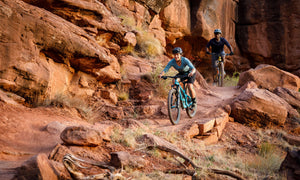
Written by: Bruce Lin
Published on: Mar 9, 2022
Posted in: MTB
You’re going to a big, important party, but you’re iffy about the dress code. Would you rather show up overdressed or underdressed?
A lot of mountain bikers face a similar dilemma, but instead of choosing the right clothes, it’s about choosing the right bike. You've probably heard certain bikes described as “too much bike” or “not enough bike.” But what does that mean?
In mountain biking, suspension travel often receives the most attention when riders are looking at bike specs. Depending on your skill, riding style, and terrain, there is likely an ideal amount of suspension travel. Other specs such as geometry , wheels , and tires matter too, but they are usually tailored to match a bike's suspension.
Most modern mountain bikes will have somewhere between 100mm and 170mm of suspension travel. This covers everything from cross-country race machines to versatile mid-travel trail bikes to hard-hitting enduro bikes . (If you want to learn more about how mountain bikes are categorized check out our Mountain Bike Buyer’s Guide .)
So what's the right amount of travel for you?
[button] SHOP MOUNTAIN BIKES [/button]
MTB travel basics: what is travel on a mountain bike?
In case you're new to riding, mountain bike suspension travel is a measurement of how much a wheel can move to absorb bumps. On the front, mountain bike travel comes from your suspension fork. At the rear, MTB travel is provided by some configuration of frame pivots that compress a rear shock.
When to choose a long-travel MTB

Long-travel bikes usually have 150-170mm of rear travel to handle tough downhill trails. Front travel often matches rear travel but sometimes can be more.
Trail and enduro bikes fall into this category. They absorb big hits and smooth out rough terrain. If you regularly ride steep or gnarly trails, a bike like this makes a lot of sense.
If you're mostly riding mellow flow trails though, a big and burly long-travel bike might be overkill. You won't be able to use all the suspension travel you paid for. The bike may feel cumbersome, maybe a bit boring, and you’ll have to expend more energy to push it around and climb uphill.
But let’s say you lack confidence on descents. A more capable enduro bike with ample suspension travel could help you enjoy riding more by increasing your confidence, comfort, and giving you more margin for error.
Some ride big and burly bikes everywhere because they're fit enough to pedal a long-travel bike up big climbs and on long rides without much trouble. For them, being overbiked isn't a handicap, and it's worth it for when the trail gets gnarly. If you care more about descending as fast as possible more than having a bike that's efficient for pedaling or climbing, long-travel bikes will cater more to your style.
[button] SHOP LONG-TRAVEL MOUNTAIN BIKES [/button]
When to choose a short-travel MTB

Short-travel bikes usually have 100-120mm of travel to maximize efficiency. In some cases, these bikes could have forks with 10-20mm more travel to make them more versatile on descents.
XC and short-travel trail bikes fall into this category. They are efficient and usually feel more agile than longer-travel bikes. If you race cross-country, do long adventure rides, or stick to mellow trails, these are the best option.
If you venture onto steep and gnarly downhill tracks with big rocks and jumps, a short-travel bike will start to feel sketchy. There’s a good chance you’ll have to ride slower and more cautiously than you would on a long-travel bike, taking easier lines and occasionally skipping tough sections.
But let’s say you dread going uphill and are constantly getting dropped by fitter riders. A bike with less travel that’s lighter and more efficient could help you go faster and expend less energy.
If you’re a skilled rider that just wants to make riding more exciting, short-travel bikes provide a lot more trail feedback and give you less room for error. You have to stay focused, be more selective about lines, and be more active with your body. For some, this can be a more enjoyable ride experience than just sitting back and letting a long-travel bike do the hard work for you.
[button] SHOP SHORT-TRAVEL MOUNTAIN BIKES [/button]
So how much suspension travel do I need?

Seth H., Merchandising Manager "I started on an XC hardtail and rode everything, even gnarly downhills on it. It had a dropper and I did just fine. I really thought it was all I would ever need. Then I went to Moab. I rode a borrowed enduro bike on The Whole Enchilada and it kind of opened my eyes. I bought a bigger bike not long after and started riding all my regular trails again. It changed how I rode.
"Personally, I really don’t mind being overbiked for most of my riding now. I ride alone a lot so I go my own pace. But I'm also decently fit and I can keep up with everyone I ride with on my bigger bike (an Ibis Ripmo). If you’re fit, I say go as big as you want."
Chad H., Warehouse Manager "I would prefer to be underbiked on the majority of trails. Being underbiked keeps the skills sharp and makes the trail an exciting challenge. I feel that being overbiked takes the challenge and excitement out of trails. It leads to laziness and dulls your skill as a rider.
"Right now for me, I believe the best bike for 85 percent of the riding I do will be a full suspension cross country bike, like the Santa Cruz Blur. I would add a dropper seatpost and Fox Step-Cast 34 120mm fork just to give it a tiny bit more capability. Or the new Trek Top Fuel, or possibly a Yeti SB100 are good options. It's what people are calling 'downcountry' now, even though I hate the term. It will be a little bit more capable than a full cross country bike, but it’ll have the same quick handling and speed. That'll be perfect for me."
What about mid-travel "quiver-killer" mountain bikes?
I always keep at least two mountain bikes in my quiver: a long-travel enduro bike and a short-travel XC bike. This lets me tackle everything from downhill bike parks to short-track XC races. But for many riders, a mid-travel trail bike is all you need.
Mid-travel bikes are a good compromise between downhill performance and pedaling/climbing efficiency. They usually have 120-140mm of travel. Many call these bikes "quiver-killers," because they can do it all (well, almost). I even spent a full season on a quiver-killer , just to see how well it worked for a wide range of riding and was pleasantly surprised by how versatile it actually was.
However, these bikes don't completely excel at anything. A longer-travel bike will be better downhill and a shorter travel bike will be more efficient for racing. Ultimately, if you can only have one bike for casual riding, or you're unsure what type of mountain bike you need for your local trails, this category is the best option.
[button] SHOP MID-TRAVEL MOUNTAIN BIKES [/button]
How to choose a mountain bike

Are your trails rough and rocky or smooth and flowy? Are they fast and steep or tight and technical? Your terrain has a big impact on bike selection. Generally, the rougher, steeper, and faster a trail is, the more travel you'll want and vice versa.
The second step is to know yourself. Your riding ambition is nearly as important as terrain. If you are a ripper who lives for downhills, you'll probably want to support yourself with more travel. But if your ride fantasy involves conquering high mountains, and exploring miles of backcountry trails, you might want to stay light and efficient with less travel.
No matter what, it's possible to have fun riding any bike, and having the ideal amount of suspension travel isn't everything. Keep in mind too that the rider is always going to make a far bigger difference than the bike. Fast descenders drop me on gnarly downhills riding XC hardtails, and fit climbers drop me on uphills riding heavy enduro machines. Good riders take what they have, and make it work.
That being said, you can always play to your strengths or weaknesses. Having a bike that enhances the parts of riding that you care about the most will make mountain biking more fun.
Are you overbiked or underbiked for your trails? Do you prefer long travel or short travel? Or do you have a bike that sits somewhere in the middle? Let us know in the comments!
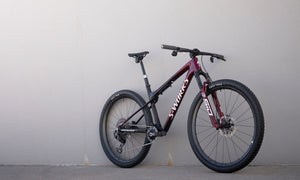
Bikes, Latest, MTB Apr 5, 2024
This Specialized S-Works Epic World Cup Is My Perfect Leadville Bike
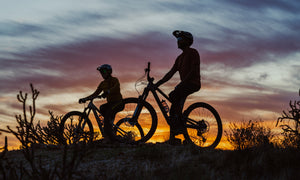
FAQs, Guides, Latest, MTB Apr 3, 2024
FAQ: Top 5 Mountain Bikes That Hold Their Value
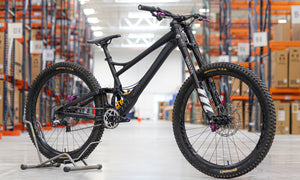
Bikes, Features, Latest, MTB Mar 15, 2024

Banshee Legend DH Bike Review: A Privateer’s Dream Bike
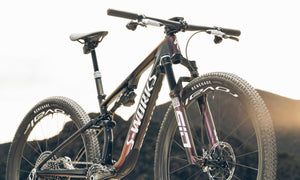
Features, Latest, MTB, Tech Mar 12, 2024
RockShox Flight Attendant: Will XC Welcome Its New Electronic Overlords?
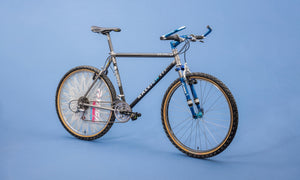
Bikes, Features, Latest, MTB, Vintage Jan 24, 2024
The Tioga Racer: 1993 Raleigh John Tomac Signature Ti/Carbon

Features, Fun, MTB Jan 4, 2024
Rage Against the Machine Likes Mountain Biking
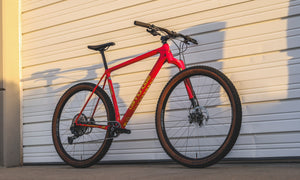
Bikes, Features, MTB Nov 29, 2023
The Cannondale F-Si Throwback Might Be the Most Beautiful XC Hardtail Ever
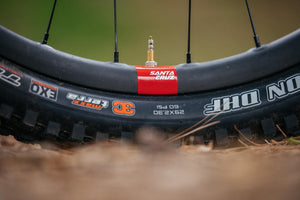
Guides, MTB, Tech Nov 28, 2023
Carbon MTB Wheels: Are They Worth It vs. Aluminum MTB Wheels
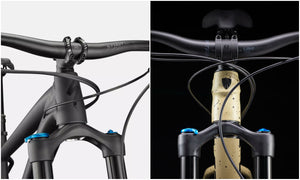
Guides, MTB Nov 14, 2023
The Best Trail Hardtail: Specialized Fuse Expert 29 vs. Trek Roscoe 9
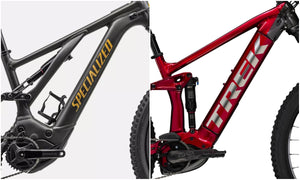
E-BikeMTB, Guides, MTB Nov 10, 2023
Budget E-MTBs: Specialized Turbo Levo Alloy vs. Trek Rail 5
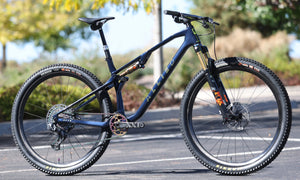
Bikes, Features, MTB Nov 9, 2023
Allied BC40: A High Caliber American-Made Downcountry Weapon
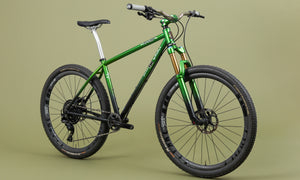
Bikes, Features, MTB Nov 1, 2023
This Fat Chance Yo Eddy Team Is a Classic 90s MTB Reborn
New arrivals.
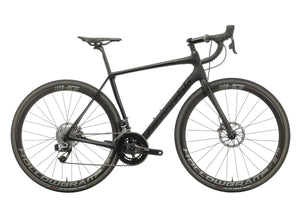
Certified Pre-Owned
Cannondale Synapse Hi-MOD Disc Red eTap Road Bike - 2018, 54cm
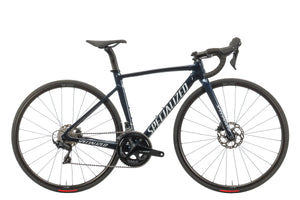
Specialized Allez Sprint Comp Road Bike - 2023, 49cm
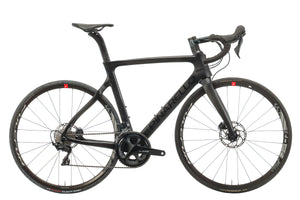
Pinarello Gan Disk 105 Road Bike - 2018, 54cm
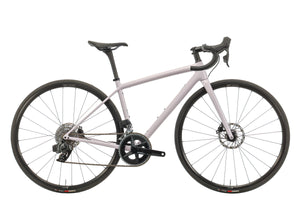
Specialized Aethos Comp Rival AXS Road Bike - 2021, 49cm
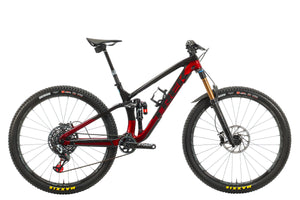
Trek Fuel EX X01 AXS Mountain Bike - 2021, Medium
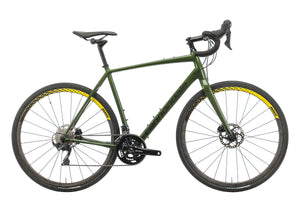
Cannondale Topstone Aluminum Gravel Bike - 2019, Large
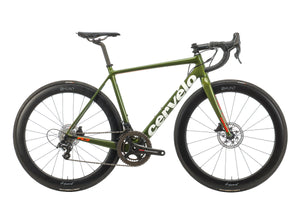
Cervélo R3 Disc LTD Road Bike - 2019, 54cm
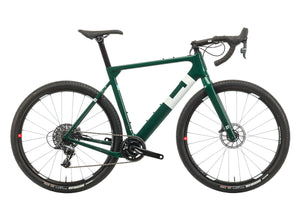
3T Exploro Team Gravel Bike - 2018, Large
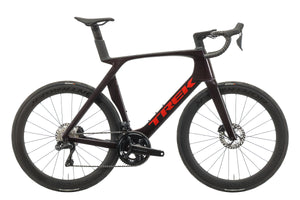
Trek Madone SL 7 Gen 7 Road Bike - 2024, 62cm
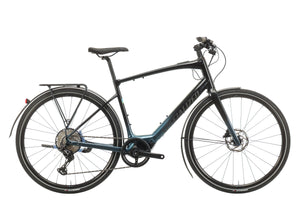
Specialized Turbo Vado SL 5.0 EQ Hybrid/Commuter E-Bike - 2021, Large
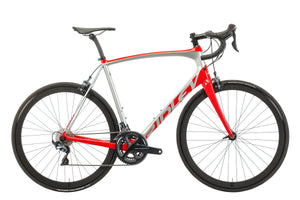
Ridley Fenix SL Road Bike - 2021, Large
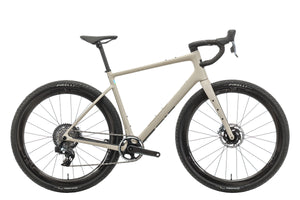
ENVE MOG Gravel Bike - 2023, 58cm
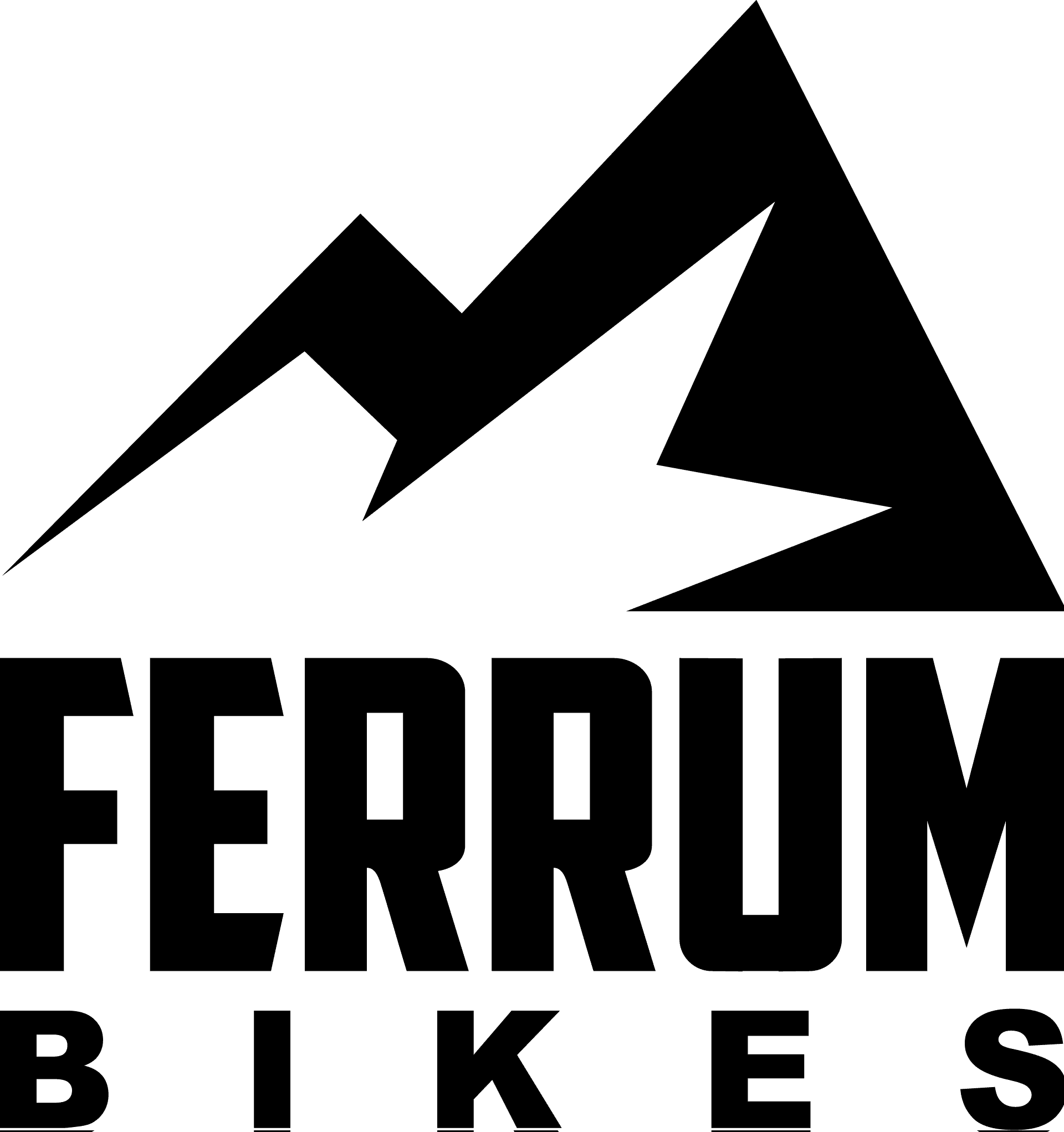
Custom Geo NV160 MTB Frame | Chromoly Steel Full Suspension Enduro MTB Frame
$ 1,999.00
Description
Additional information, geometry and sizing, why chromoly, color examples.
- Reviews (0)
PLEASE USE CODE: DEPOSIT – FOR 50% FRAME DEPOSIT. BALANCE WILL BE COLLECTED WHEN THE FRAME IS READY FOR PAINTING.
This is Not a Complete Bicycle – What’s Included:
What’s listed in the drop down menus that you choose What’s stated as being included in the specs
Lead Time 12-16 Weeks
Choose your geometry usa built.
Better Durability: Quad Stacked 6902 Pivot Bearings vs Double
Better Options: Custom Geo and Powder Coated vs Painted
Better Price: No one offers this level of product anywhere near this price
You’re looking at the NV160 Chromoly Steel Mountain Bike Frame, designed to redefine your mountain biking experience. Built with meticulous craftsmanship, this frame is equipped with amazing features that are designed to put more focus on the ride. The NV160 embraces modern mountain biking specifications, including metric shock sizing, threaded 73mm BSA bottom bracket, 148mm boost spacing, internal cable routing for dropper seat posts, and compatibility with tapered forks. These contemporary specs are seamlessly integrated into a progressive and exciting package, ready to elevate your riding experience to new heights.
Experience Unmatched Performance with Hydraulic Bottom Out Shock Options
Say goodbye to the limitations of single pivot non-linkage frames. We understand that bottoming out can hinder your ride if you’re not running a shock with a firm compression tune. That’s why we’ve embraced metric shock sizing to allow you to enjoy the revolutionary Hydraulic Bottom Out (HBO) technology. With shocks like the Rockshox Super Deluxe Ultimate and other leading brands, you can now enjoy the exhilaration of a single pivot steel frame while not having to worry about the huge flat drops bottoming out.
Unleash the Power of Single Pivot
The NV160 is equipped with a stainless steel pivot axle and double-stacked quad 6001-2rs bearings for unrivaled longevity and rigidity where it matters most. Thanks to modern suspension technology, single pivot frames have made a triumphant return. Why choose a single pivot design? Because it offers hassle-free maintenance, budget-friendly options, and a predictably smooth ride, pops, jibs and jumps like no other and is a statement. Experience the perfect blend of amazing ride characteristics, simplicity, and durability with the NV160.
Efficiency Meets Capability: Pedal like Never Before
Don’t sacrifice efficiency for versatility. With the NV160, you can have it all. Our optimized Pivot Point ensures over 100% Anti-squat throughout the bike’s travel, delivering unrivaled pedal efficiency. Every ounce of power you generate is translated into forward motion, rather than being wasted in the suspension. Say goodbye to unnecessary fatigue caused by inefficient pedaling. With the NV160, every pedal stroke propels you with gratuitous efficiency.
Unleash Your Confidence on the Trails
The NV160 boasts a perfect combination of sweet spot geometry and pivot placement. This synergy allows the bike to effortlessly plow through the most challenging terrain. Experience the speedy steel as you roll over big hits with ease, thanks to the 160mm of travel and the resilient steel chassis. Moreover, our low-maintenance chromoly steel frame keeps you on your bike for longer, maximizing your riding time and amplifying your saddle time.
Unparalleled Comfort for Endless Enjoyment
Steel frames have an indescribable feel that must be experienced to be believed. They provide a forgiving ride that is gentle on your joints and some say is sublime. The NV160 is engineered to eliminate or significantly reduce rough chop and harsh vibrations. Say goodbye to fatigue and welcome more stamina on those epic trail days. With our frame, you’ll feel less tired, allowing you to fully embrace the joy of riding your chromoly steel mountain bike frame.
Effortless Maintenance for More Riding Time
We are like you, we’d rather spend more time riding than tinkering with our bike (even though some tinkering can be fun. That’s why we designed the NV160 with a focus on low maintenance. The hallmark of our design is the inclusion of four double stacked pivot bearings, ensuring extended service intervals. Enjoy more uninterrupted rides, knowing that your bike requires less frequent maintenance.
Silence That Enhances Your Ride
Distractions can ruin a perfect ride. Unlike other non-steel frames, the NV160 from Ferrum Bikes is meticulously crafted to minimize unwanted noise. Creaks, cracks, and friction sounds that plague other frames are not typical on our steel frame. While certain unavoidable sounds may still occur, our frame and its assemblies offer a blissfully quiet experience, allowing you to fully immerse yourself in the ride.
Unbeatable Value for an Extraordinary Ride
In your search for a steel full suspension mountain bike frame, you’ll be hard-pressed to find anything that matches the NV160 in terms of design prowess and quality. Comparable frames on the market fetch prices ranging from $2700 to $3500. While we firmly believe our frame is worth every penny, our mission is to offer extreme value to the mountain biking community. We want to make our mark by providing exceptional quality at an accessible price, helping fellow riders elevate their riding experience.
Durability Redefined: Powder Coating for Lasting Performance
For ultimate durability, the NV160 features a powder-coated finish instead of conventional wet paint. Powder coating involves the application of fine polyurethane particles that are electrically deposited onto the frame’s surface, which are then baked to melt and cure, forming a hardened shell upon curing. This exceptional coating provides enhanced resistance against chipping and adds an extra layer of durability, ensuring your frame stands the test of time.
Custom Geometry and Sizing
Enter your Fork Axle to Crown and BB drop to customize the wheel size you’re intending to run. You can run 29 front and rear, 29 front and 27.5 rear or 27.5 front and rear depending on your fork Axle to Crown and BB drop specification.
We recommend stems 35mm-40mm in length for proper sizing and handling characteristics.
The NV160 was developed with progressive geometry in mind. Utilizing slack geometry with 37-46mm offset forks provides a stable, fast and well handling steed.
Please feel free to Contact Us for sizing help.
Reach: 400mm – 515mm Head Tube Angle: 63.5° (170mm Forks) to 65° Seat Tube Angle: 78°-81° Headtube Length: 120mm-130mm Bottom Bracket Drop: 17-33mm Seat Tube Length: 380-420mm Chainstay Length: 445-455mm
Chromoly is much stronger than traditional steel and aluminum alloys. Chromoly is the most earth friendly material that we’ve seen besides bamboo that’s being made into bicycles. Studies show that chromoly requires 6-11 times less energy and emissions than competing materials to mine, manufacture and process.
Most people looking to buy our frame will have their minds made up on chromoly steel frames and prefer this material for their next frame but if you’re new to or curious about this amazing material, here are some of the advantages you’ll hear from experienced riders:
Chromoly steel bike frames possess a natural flex that absorbs sounds. While not completely silent when contact is made with rocks or roost, the ride is very stately feeling. Focus on the path ahead, not nuisances.
You’re buying a bike that will stand the test of time with proper care and maintenance. Imagine owning a bike that can be welded and repaired rather than degrade and be thrown away. Most people consider the user-friendly nature of chromoly to be a very wise investment.
Our steel full suspension mountain bike frames are engineered with controlled flex, working with the natural characteristics of heat treated chromoly and stiffening it up where it’s necessary for maximum efficiency. Chromoly tubing for a mountain bike is very thin yet incredibly strong, it has an inherent flex that people strive for in order to reduce vibrations translated to their hands and feet which works to reduce rider fatigue and increase rider comfort. Ride longer, more comfortably and much harder. Slight flex in the rear keeps the wheel planted in sharp hard turns keeping you on two wheels.
Chromoly’s strength to weight ratio rivals that of titanium yet it’s more affordable. Rest easy knowing what you’ve accepted as norm, steel is strong. Imagine a high-tech, lighter weight yet stronger alloy of steel being made into a frame for your next mountain bike. There are pluses and minuses for every known material being made into a mountain bike frame but welded seems, not glued, is something we personal feel is more solid and secure. Metal melted to metal, not piece, glued to piece. Fancy marketing words will lead you to believe other materials are “one solid piece” (“Monocoque”) but research shows that’s misleading, it’s actually multiple segments glued together into one piece which is strong too for only a comparably very short lifespan. Ride safe though, we can’t be held responsible for your new found feel of steel, ride at your own risk, ride responsible.
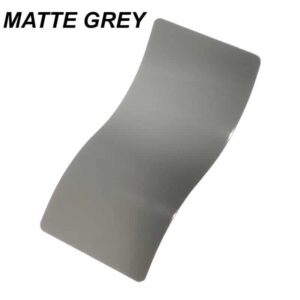
Original Owner:
Lifetime Repair Terms of Warranty
Second Hand Owner:
4 Years Repair Terms of Warranty
There are no reviews yet.
Your email address will not be published. Required fields are marked *
Your review *
Name *
Email *
Related products

Custom Geo MV120 Trail MTB Frame | Chromoly Steel Full Suspension Enduro MTB Frame
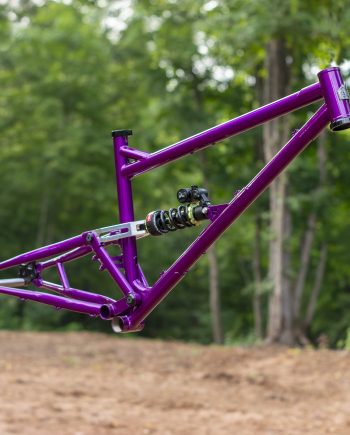
BLEM | LVN160 V2 Full Suspension MTB Frame

LVN160 V2 MTB Frame | 160MM Rear Travel | Chromoly Steel Full Suspension MTB Frame
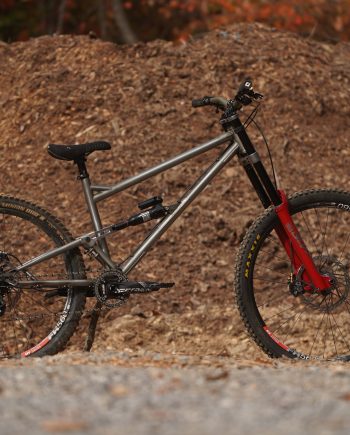
LVN190 Mountain Bike Frame | Park DH Steel Full Suspension MTB Frame

NV160 Blem – In Stock – Full Suspension MTB Frame
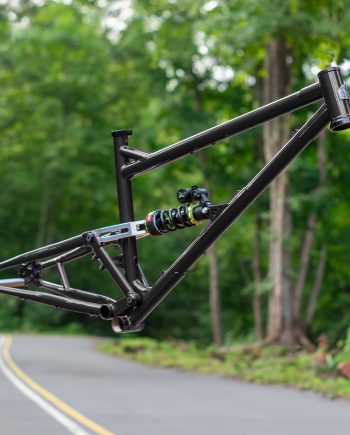
LVN140 MTB Frame | 140MM Rear Travel | Chromoly Steel Full Suspension MTB Frame
What are you looking for?
WE SHIP WORLDWIDE! Add To Cart To See Price BEFORE YOU PAY! Feeling Lucky? Your Order May Be Shipped For FREE! Dismiss
The Forbidden Dreadnought is back rowdier than ever and V2 gets 160mm of high-pivot next-gen suspension
The Canadian brand promises the Dreadnought V2 will have the same versatile enduro MTB performance as its predecessor but also has the coolest colorway names we've ever seen

The Forbidden Dreadnought is renowned as a genuine trailblazer, forging a path for high-pivot performance bikes. The original Dreadnought is one of the best enduro bikes around and has proven itself ready to tackle anything from the rigors of the race track to all-day bike park laps, and just about everything in between, offering riders a bike with loads of versatility.
Forbidden has now launched the Dreadnought V2 and it gets the brand's next-gen high-pivot suspension platform featuring 160mm of travel paired with a 170mm fork . Forbidden has taken its next-gen suspension first seen on what they say is the class-leading Forbidden Druid and Supernought, and added it to the Dreadnought. Forbidden adds they have overhauled every detail of its rowdy bike park brawler and Dreadnought V2 is a mountain bike that blends the Druid's agility and pop with the Supernought's speed and stability.

During the design process of the new Dreadnought Forbidden have collaborated with its factory race team and its team of test riders to pull in as much feedback on the original Dreadnought and the current V2 platform bikes. They say that the feedback gathered has allowed them to opt for a more centered weight distribution on the Dreadnought which is claimed to deliver 'sweet spot' handling in nearly all situations, and they add it will give riders more confidence and comfort to trust both the bike and themselves when things get rowdy.
Forbidden says another goal for the new Dreadnought V2 was to maintain its ability to plough through the roughest of terrain. So V2 like its Druid sibling now gets an updated version of the Trifecta suspension system which gives the Dreadnought the rearward axle path that Forbidden is known for. They also claim to have improved small bump sensitivity and grip, added mid-stroke support, improved bottom-out control, and optimized pedaling and braking performance.

The Dreadnought V2 is available in MX (a 29-inch front wheel with a 27.5-inch rear) or 29er options and customers will be able to make wheel size configuration changes via the modular dropouts that come in 27.5in +10mm, 27.5in -10mm, and 29in +10mm options. This gives owners the ability to customize weight bias and handling characteristics to suit riding style or terrain and make meaningful geometry adjustments too. 200mm direct brake mounts are included as standard and the Dreadnought framesets are sold with MX and 29er dropouts.
Forbidden says they are still the only MTB bike brand that offers truly proportional sizing and the rear centers change in proportion to the front center measurements. The underlying philosophy is to ensure that riders of different sizes can experience the same intended weight balance and ride characteristics of their bikes.
Sized from S1 to S4 they add the S1 sizing has some of the smallest reach and rear center measurements of any dual 29er MTB in the best enduro bike category which is 435mm to 495mm on the 29er and 430mm-491mm on the MX. Elsewhere the geometry has also seen minor changes with the head angle being 63.5 degrees on the 29er and 63.1 on the MX. The seat tube angle is 77.5 degrees on the 29er and 77.1 on the MX.
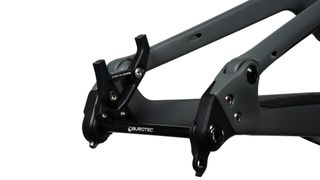
Pricing, specs and availability
The Forbidden Dreadnought V2 will come in three build options and two colorways named – Bloody Sabbath (named after a Black Sabbath album) and Fatty T (a beer). The top-of-the-line Dreadnought X0 RockShox Ultimate spec highlights are the SRAM X0 Eagle AXS Transmission, a RockShox Zeb Ultimate fork and a RockShox Vivid Ultimate shock. SRAM Maven Ultimate brakes and Crankbrothers Synthesis 11 Carbon wheelset. Pricing at $9,299 / £9,299 / €10,999.
The Dreadnought GX RockShox Select Plus build features a SRAM GX Eagle AXS Transmission, a RockShox Zeb Select+ fork, and a RockShox Vivid Select+ shock. SRAM Maven Silver braking and Crankbrothers Synthesis Enduro Alloy wheels, priced at $7,299 / £7,299 / €9,099.
Finally, the Dreadnought GX RockShox Select build has a SRAM GX Eagle AXS Transmission, a RockShox Zeb Select fork, a RockShox Vivid Select shock. SRAM Maven Bronze brakes and Crankbrothers Synthesis Enduro Alloy wheelset. Pricing is $6,499 / £6,499 / €7,899.
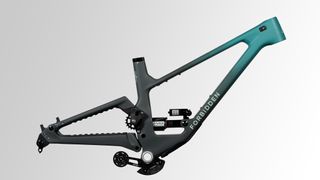
All builds come in the choice of a 29er or Mixed (MX) wheel configuration and is also available as a frameset-only option with a RockShox Vivid Ultimate shock, 29er and MX Dropouts (0mm) and 200mm Brake Mounts priced at $4,299 / £3,899 / €4,399
Check out all the details and ordering information at ForbiddenBike.com .
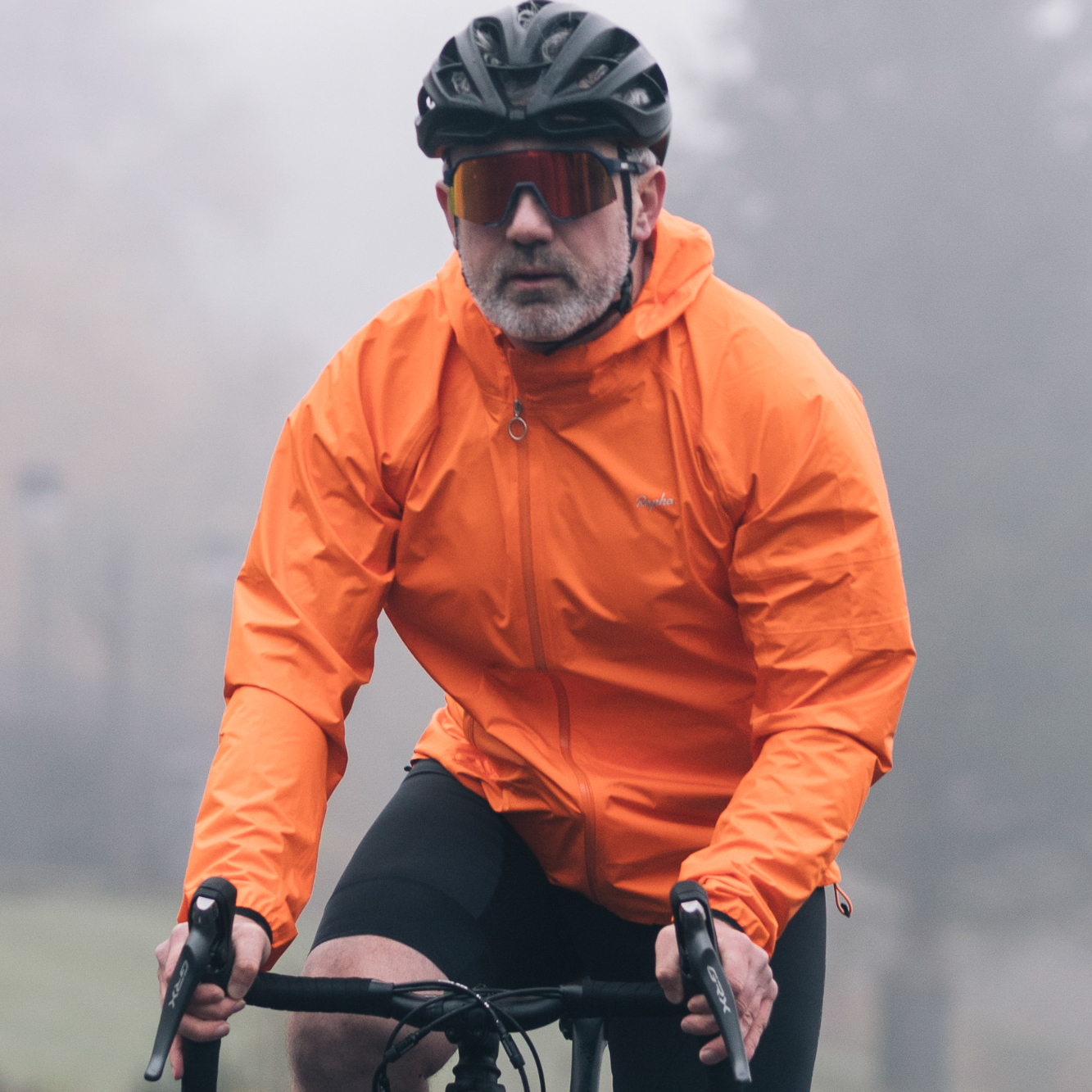
Based in Edinburgh, Paul Brett is a staff writer for BikePerfect.com . He has been an avid cyclist for as long as he can remember, initially catching the mountain biking bug in the 1990s, and raced mountain bikes for over a decade before injury cut short a glittering career. He’s since developed an obsession for gravel riding and recently has dabbled in the dark art of cyclocross. A fan of the idea of bikepacking he has occasionally got involved and has ridden routes like the North Coast 500, Scotland and the Via Francigena (Pilgrim Route), Italy.
Current rides: Marin Alpine Trail 2, Ribble 725, Cube Stereo 160
Height: 175cm
Freakishly fast – why are the fastest MTB bikes in the world still so different to what us mere mortals would be happy to ride?
Mavic Deemax Enduro SL wheels review – lighter rims and Mavic's latest hub design
Tom Pidcock's XC race bike tested, super light tires, a host of new budget suspension, Kona's gravel bike that's almost an MTB, plus much more in the week's off-road cycling top stories
Most Popular

- Forum Listing
- Marketplace
- Advanced Search
- Riding Style
- Downhill - Freeride
The struggle: 160mm, 180mm, or 200mm of travel?
- Add to quote
Hey guys - I'm currently looking for a new steed that is a little more aggressive than my 2013 Marin XM7. I've begun bottoming it out fairly often, trying to push it a little too hard. I also don't want to change that bike at all, since I love it as my trail bike. But now, I want something that is a bit more capable. I'm an east coast rider, and ride MOSTLY trail - but I am looking to get into bigger stuff (bike parks, dh tracks like Mountain Creek, etc etc.) So i've got a few bikes I've been looking at. Diamondback Mission Pro: It's a sweet bike - super good looking and comes in with about 160mm of travel. Looks like it can climb well and take downhill sections well enough. But my concern is that 160mm is just simply not a big enough difference from my XM7. Santa Cruz Nomad: Another gorgeous bike with a bit more travel than the Mission, and can still rip uphill when necessary. In a perfect world, I'd get a bike that can climb but also absolutely crush all burly sections thrown at it. Can this bike do that? Because if it can handle most everything an intermediate/advanced rider throws at it in the bike park, that'd probably work. Diamondback Cooper: Know next to nothing about this bike - I get good deals on DB, so figured I should include this thing. 180mm of travel. Defintely can't climb very well, but i'm sure it's pretty solid going down... Airborne Toxin: For the price, it looks like a really fun gravity bike. At this point, though, is it worth it to just up and get a DH sled? Airborne Pathogen: Throw a boxxer on this thing, get 200mm of travel, and it looks like i'd be all set. But for someone who doesn't ride downhill every weekend (maybe go twice a month) is this thing worth it? Is it too heavy for gravity, and more designed to just bomb? Diamondback DB-8: Another true downhill bike - anyone have any experience with this thing? Same questions asked as the Pathogen. Is it simply too much bike for the common mortal? Obviously just looking for suggestions or testimonies. thanks :madman:
First, I'd look at the kind of riding you'll be doing. Unless you have a dedicated group of friends who can drive shuttle cars or a season pass to a nearby bike park, I'd recommend not getting a full DH bike. If you think you'll pedal this bike on trails even a little bit, I'd go toward some sort of 'enduro' or aggressive AM geometry. The amount of travel, in my opinion, isn't often a good a determining factor of 'how good' a bike will be. I'd look at the overall geometry and the quality of the bike and its components first. You can have all the travel in the world, but if it's got crappy geometry or components, it'll ride like a crappy bike. On that note, there's no doubt which I'd choose from your list. Get the Nomad. It's worth the increase in price, no doubt about it. Better suspension linkage, stronger company backing it, and VERY capable geometry. Not to mention their well-proven carbon quality.
First, let me say: in nearly 30 years of riding, I've never, ever thought "I wish this bike had less travel." If you're trying to PR a climb, ride a hardtail. If you don't care how fast you get up and focus on having fun going down, more travel per se is never a bad thing. But there's more to a bike than travel. There have been bikes like the Canfield One that have 8" of travel, but aren't downhill bikes (The One had a full-length seat tube, used a 142mm rear wheel/73mm BB and had a provision for a front derailleur). Most everything sold as a downhill bike doesn't have a full-length seat tube and thus the saddle can't really get to climbing height (the Toxin is the same way, you have to cut down the seatpost or it will hit the shock when you drop it. Which means you pretty much have to run a dropper if you intend to use it as an all-rounder, which makes the price a little less attractive - at least it would to me). A modern downhill bike for the most part can't do anything but downhill. A Nomad could be your only bike, a Pathogen or DB-8... probably not unless you aren't ever going to ride uphill. From the bikes you listed, the Nomad is by far the best all rounder. It's also more than twice the price as the others. I demoed one earlier this year, followed by a Giant Reign. They were so similar I couldn't say I liked one more than the other, but the Reign was $800 less. I think someone shopping for a 160mm bike these days would be a fool not to look at some of the direct-sales bikes that have come out recently such as YT Capra ( YT USA ), Commencal Meta ( 2016 - Shop ), or NS Snabb ( N > NS Bikes | Jenson USA ).
Joules said: From the bikes you listed, the Nomad is by far the best all rounder. It's also more than twice the price as the others. I demoed one earlier this year, followed by a Giant Reign. They were so similar I couldn't say I liked one more than the other, but the Reign was $800 less. I think someone shopping for a 160mm bike these days would be a fool not to look at some of the direct-sales bikes that have come out recently such as YT Capra ( YT USA ), Commencal Meta ( 2016 - Shop ), or NS Snabb ( N > NS Bikes | Jenson USA ). Click to expand...
IMO "absolutely shredding bike parks" is up to you, not the bike. If 65 degree HTA on the Nomad (vs 64 on the V10) is not slack enough for you, I think you may be kind of out of luck on the 25% part of your idea. The travel, in my experience, isn't going to make or break the bike - it's often said that what a true DH bike buys you is margin for error, I agree with that, the only times I get past about 160-170mm on my DH bike is when something hasn't gone as planned. I don't know of any bike with a HTA slacker than 65 that has any ability to climb at all. I guess you could over-fork something - I wouldn't, but it's technically possible. Is there a DH bike you really love the handling that's convinced you that 65 is too steep?
The Nomad is a great bike for what you're looking for. A buddy of mine has the 26" version with a Fox 36 180 fork and a dhx coil on the back. He rides half of Creek no problem and used that as his everything bike for quite some time. My other buddy got the 650 Nomad and swears that this is the only bike he needs. Are you keeping the other bike? I personally like a dedicated DH bike for dh/park and my Remedy for regular riding. I know it's winter time and the last weekend of DH, but ride Creek on a DH bike first and see if you want a dedicated bike. By doing that, you might realize that you love DH and want to do it every weekend. I know my Remedy will handle some of Mtn Creek. I've been there on it and had a blast. But it won't take the abuse my Devinci Wilson does. If you get into DH and travel to Blue, Creek, Whiteface, Platty, the 160mm will be limiting you, plus they won't take the long term abuse of DH. If you go a couple times a year, then fine. Some stuff to think about. Ttyl, Fahn
Have not seen that ns fuzz, looks pretty nice... 83mm bb only 8lbs (w/o shock)..edit, seems pretty light for frame that takes 9.5" shock
This is dh/freeride forum. Get the longest travel super monster T fork bike and huck that $hit. Uphill? I dont even know what that means. Like a chair lift?
This. If you're thinking about DH get the big bike. I got my first dedicated dh rig this season and that's the only bike I wanna ride now.
Some girls say bigger is better.... Some say its all in how you use it
Depends on how much park riding you'll actually do. If you live near a mountain and get a pass and are there all the time you might want to go with a full on DH Rig. If your just getting your feet wet and want to try it out and maybe get 5 to 10 days+ in the Nomad would be an awesome bike. That being said, as a fellow East Coast rider coming form a trail riding background I would highly recommend the Nomad for the type of riding your looking for. It is a very capable bike that can handle big hits and screams on the downhills. I've ridden Mountain Creek, Highland, Bromont, Whistler, Trestle, as well as other parks around the country and can honestly say I prefer the shorter travel burly bike for lift riding. I've never felt like I was being held back by the bike. I've ridden full on DH rigs in the park and while it's super fun I had a difficult time adapting to the geo and extra travel. My Nomad is also my trail bike so I have it built up on the burly but light side currently weighing in at just under 30 lbs. I have carbon rims with Grid tires for trail riding and for lift days I got a Stan's flow wheel set with DH tires that I can swap in real quick. I used to have a light duty trail bike but I ended up ditching it as I kept breaking it and I found I wasn't really any faster on it. The Nomad is a super capable trail bike and really is the quiver killer that people make it out to be. Just my .02.
snowwcold55 said: Airborne Toxin: For the price, it looks like a really fun gravity bike. At this point, though, is it worth it to just up and get a DH sled? Airborne Pathogen: Throw a boxxer on this thing, get 200mm of travel, and it looks like i'd be all set. But for someone who doesn't ride downhill every weekend (maybe go twice a month) is this thing worth it? Is it too heavy for gravity, and more designed to just bomb? Click to expand...
- ?
- 15.5M posts
- 516.1K members
Top Contributors this Month
- MAGAZINE OFFERS
- BIKE INSURANCE
- Best Products
- Maintenance
- Accessories
- Long-Term Reviews
- BikeRadar Podcast
- First Look Friday
- Bike of the Week
- Tech Features
- Routes and Rides
- Bike Galleries
- BikeRadar Bargains
- Buyer's Guides
- Fitness & Training
- Sizing & Fit
- Mountain Biking UK
- Cycling Plus
How much suspension travel do I need on my mountain bike?
From cross-country to downhill, we take you through how much travel you can expect on the major types of mountain bike
Andy Lloyd / Our Media
Mountain bikes feature different amounts of suspension travel depending on the type of riding they're designed for.
Suspension travel describes the amount of movement a suspension fork or rear shock has. It is usually a measurement of how far the wheel axle moves in a vertical or near-vertical plane as the suspension compresses.
Depending on the discipline of riding the bike is designed for, the suspension travel can vary from 80 to 200mm. While more travel may seem better, helping you soak up lumps and bumps, it can be a hindrance if your riding includes lots of climbing or you benefit from a light, responsive bike.
This means deciding on the right amount of travel for your needs can be difficult, but there are a few factors to keep in mind, including your riding style and the type of trails and terrain you'll be tackling.
Bike manufacturers design their mountain bikes around different travel lengths, tailored to specific terrains or riding disciplines, and categorise the bikes accordingly. As a result, looking at the different categories of mountain bikes, their intended application and travel length is a handy way to determine how much travel you need and what bike you should get.
In this guide, we’ll explain the different mountain bike categories and how much suspension travel they typically have.
Cross-country mountain bikes

The best cross-country mountain bikes are designed to compete in high-level, fast races, where lightness and pedalling efficiency are often the keys to success.
Typically, cross-country bikes have featured 80 to 100mm of travel. Because cross-country race courses have become more extreme and technical, it is now common to see bikes designed around 120mm travel front and rear, such as Scott’s Spark RC .
Using less suspension travel than other mountain bikes means cross-country bikes can be built with a lighter frame construction because less reinforcement is needed to deal with the lower frame articulation. This helps riders race up the kinds of inclines that characterise XC races .
The short-travel forks used on cross-country bikes also help to keep weight down because they utilise a lighter chassis and narrower stanchions, usually 30 to 32mm in diameter.
Stanchions are the part of the fork connected to the crown and remain rigid to the bike while the lowers move up and down over them.
The trade-off for this weight saving comes in the form of fork flex, which impacts the directness of steering inputs and the overall ability of the fork to perform in gnarlier terrain as friction levels build on the seals.
A short-travel fork will also run out of travel quicker compared to one with more travel. Although setup and damper performance will dictate a lot of factors in how proficiently it absorbs bumps, less travel means it won't absorb bigger bumps as well as a long-travel fork.
Hardtail mountain bikes are also well-represented in cross-country, because rigid frames allow for the highest pedalling efficiency. However, the traction and descending ability of full-suspension bikes make them desirable to many riders.
Downcountry mountain bikes

Downcountry bikes aim to balance a cross-country bike's efficiency with a trail bike's downhill capability.
‘Downcountry’ is a relatively new mountain bike discipline and isn’t that well defined as a result. But in terms of suspension, these bikes range from beefed up cross-country at 110mm of travel, to lightweight trail with around 130mm front and rear travel.
Having slightly more travel than an outright cross-country bike means downcountry bikes are more capable on descents. However, with shorter travel than trail bikes, they still offer greater pedalling efficiency than burlier bikes.
Downcountry bike frames can be made lighter than trail bikes because the demand on the frame is less. This means they require less material in their construction because they don’t require the same amount of strength as a trail or enduro bike needs.
Downcountry bikes usually feature stronger, stiffer forks, with thicker stanchions, usually 34mm in diameter. This gives higher levels of rigidity to the fork, making steering inputs more direct, although concessions are still made to weight savings.
Trail mountain bikes
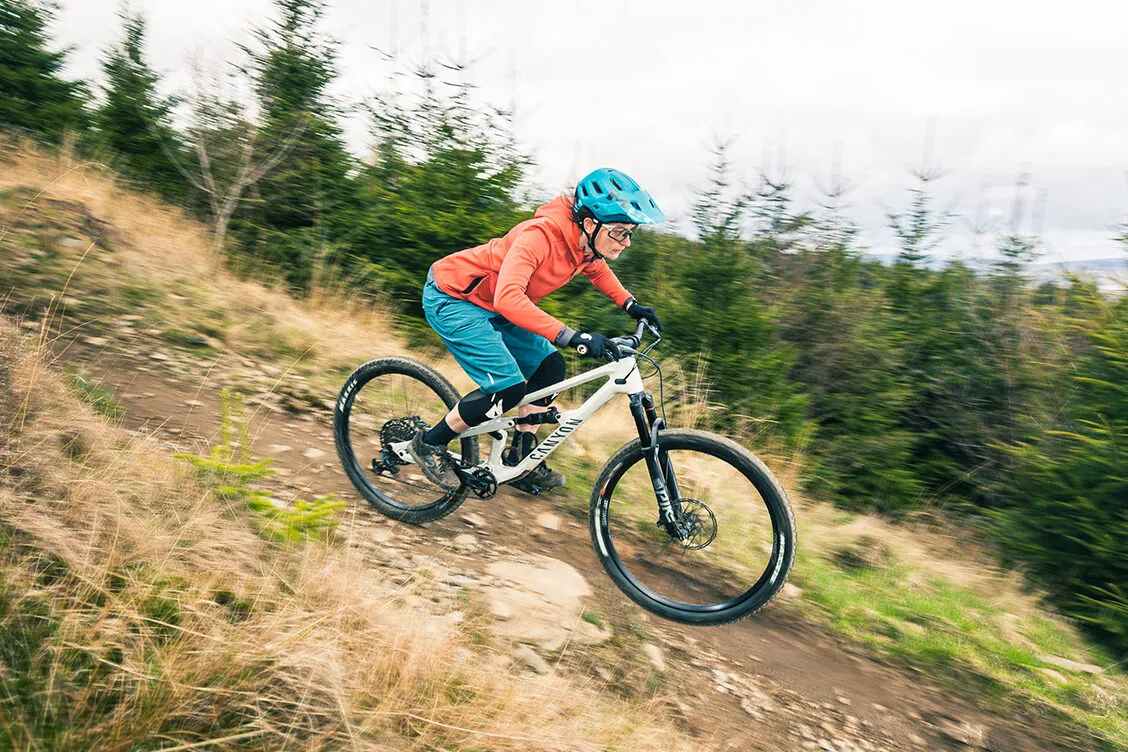
Trail bikes are one of the most popular types of mountain bike. They are designed to straddle the line between enduro bikes and cross-country bikes, providing a ride that’s fun but capable.
Confident on descents and fairly capable on climbs, trail bikes typically have between 120 and 160mm of suspension travel.
Trail bikes at the longer end of the suspension-travel spectrum cross the boundary into all-mountain. Typically, these bikes will feature beefier frame construction to deal with the added suspension travel.
The optimum amount of travel depends on what terrain or trails you like to ride, and where you’d like to progress with your riding. 140mm is ideal for even the toughest trail centres, with more travel being required for gnarlier ambitions.
Forks with mid-sized stanchions, either 34mm, 35mm or 36mm in diameter, are common on trail bikes. These shift the balance away from lightness toward rigid stability for better handling while descending. Less flexibility in the fork will mean more direct steering input, making the bike feel more planted through the rough stuff.
Enduro mountain bikes
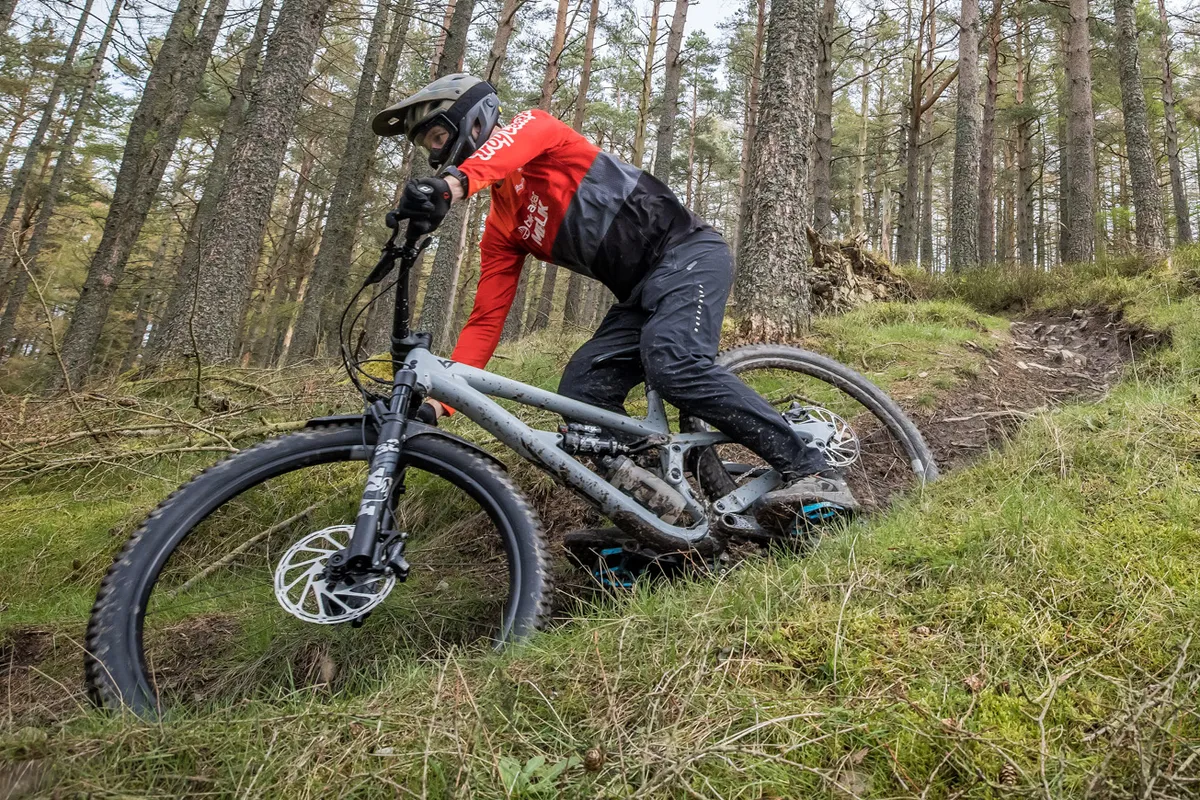
Enduro bikes are designed to meet the demands of enduro racing , which consists of multiple downhill stages that riders have to reach within a set time limit. As a result, enduro bikes have to perform well on technical descents while providing a decent pedalling platform to get you to the top of the trail in good time.
Travel for enduro bikes starts at 150mm and ranges up to 180mm. There is a 190mm-travel version of RockShox’s enduro-focused ZEB fork, but you’re more likely to see this attached to a freeride or bike park bike.
Enduro bikes require a burly frame construction in order to cope with the demands of downhill trails.
Head tubes have to be stronger to deal with the extra force coming from the long-travel fork, while the rear linkage has to be able to support the extra articulation.
This added frame construction makes the frame heavier, impacting efficiency when going uphill, but the pay-off is worth it when coming back down.
Forks within this travel range prioritise rigidity over weight savings, with thicker stanchions of 36mm to 38mm, providing direct steering inputs and a solid feel as you ride over gnarly terrain.
Downhill mountain bikes
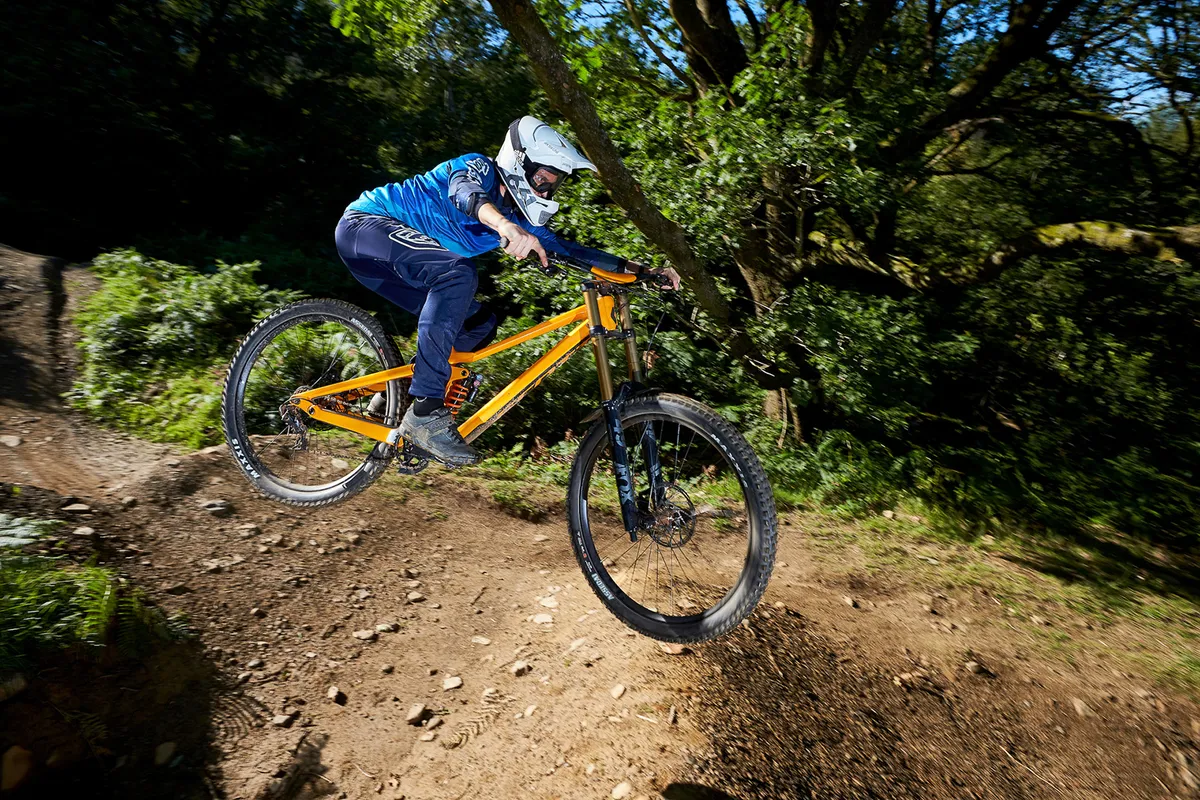
Downhill bikes are designed for, you guessed it, riding downhill. The discipline doesn’t require the bike to be pedalled on uphill or even flat terrain, enabling designers to focus solely on providing the best platform for descending steep and technical trails.
These bikes feature some of the longest suspension travel, ranging from 180 to 200mm, helping to protect riders from large, repeated impacts.
Frames have to be built to the highest strength levels to cope with the impacts you experience on downhill trails. Although downhill frames are heavier than those intended for other disciplines, it's less important to have light frames because you’re not pedalling them uphill.
Downhill forks feature the thickest stanchion, ranging from 35 to 40mm in diameter, because they deal with the most extreme terrain and require the greatest rigidity.
Weight isn’t a big issue for downhill bikes, so the added heft is worth the trade-off for the performance gains.
The forks on downhill bikes have a dual-crown design, meaning the fork mounts above and below the head tube, as opposed to single-crown forks, which mount only from below. This adds more torsional stiffness to the fork, helping to keep steering inputs direct through the toughest terrain and providing strength for big impacts.
Electric mountain bikes
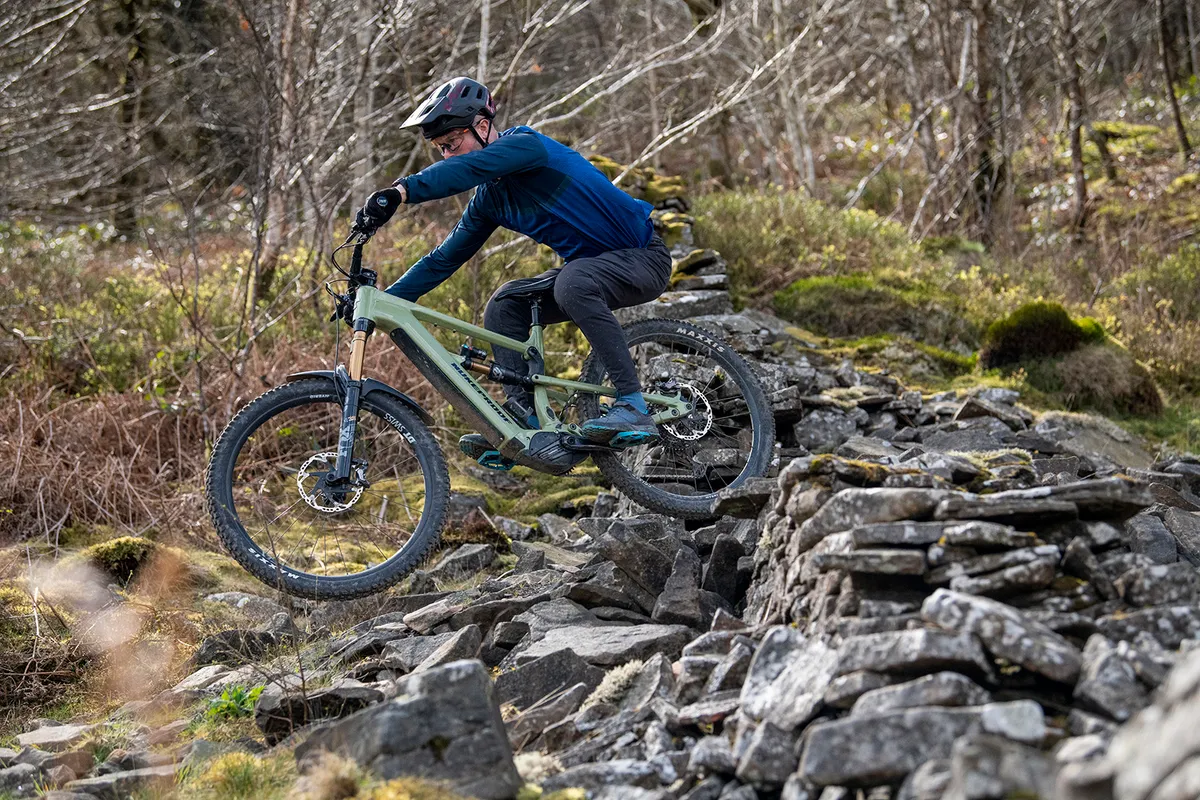
Electric mountain bikes are heavy, even compared to downhill bikes. The added weight a battery and motor bring means frames as well as components have to be engineered to cope with the extra weight – and contribute even more weight to the bike in the process.
Electric bikes can be categorised by the other disciplines featured in this article and will tend to feature the travel of that discipline.
The best electric mountain bikes will feature e-MTB specific forks and shocks, some with thicker stanchions for rigidity, and custom tunes that are suited to the heavier weight of the bike.
Because you’ll have a motor, there won’t be a trade-off in having a bike with more travel (and therefore weight), with the bike taking up the burden on the hills.
What about hardtail mountain bikes?
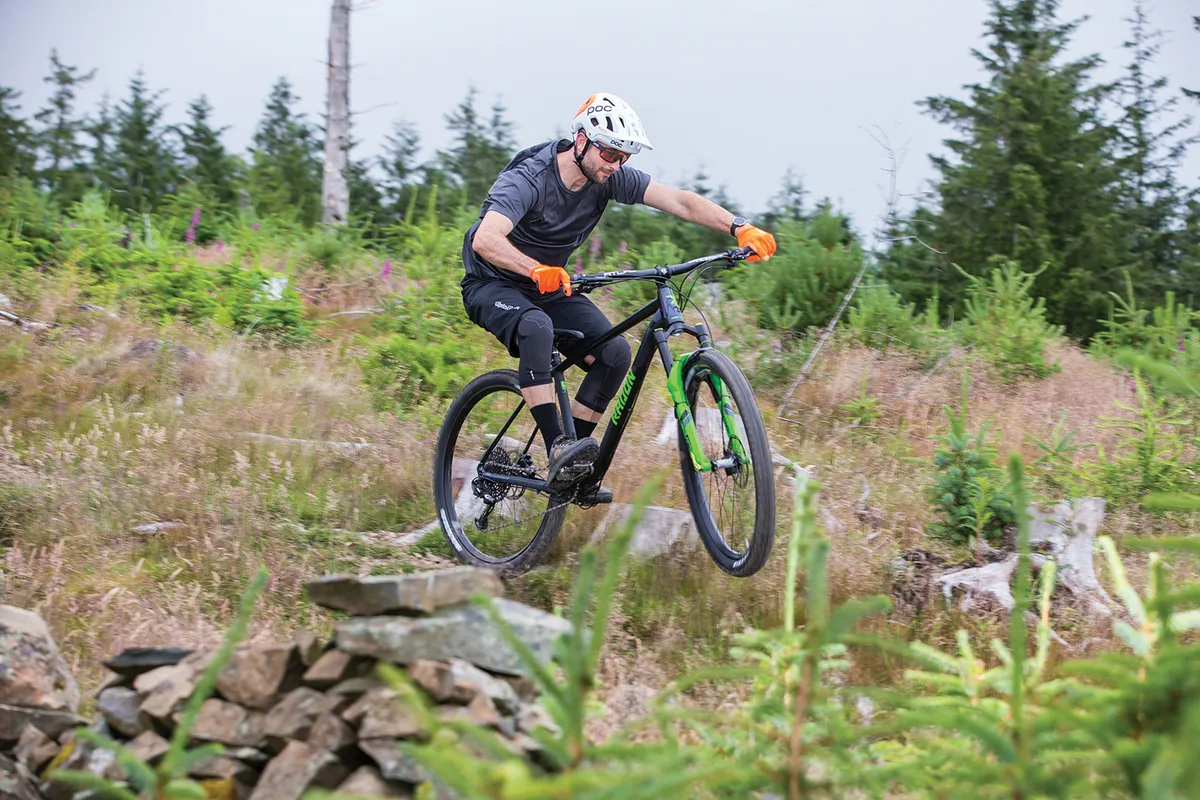
Hardtail mountain bikes have a suspension fork and a rigid rear end. They can be seen in a variety of disciplines, though are mainly represented in the cross-country and trail disciplines. They are also popular when it comes to budget mountain bikes because the simplicity of their design and less suspension means less cost.
As with other types of mountain bikes, fork travel is usually dependent on discipline. Cross-country hardtails typically have 100mm of travel, but more aggressive hardtails can have suspension travel of up to 150mm.
Some manufacturers will design frames with flex points in the rear triangle, allowing for vertical compliance in the frame. This improves comfort when sat in the saddle, and to a smaller extent rear-wheel traction while climbing.
Share this article

Digital Writer

- Terms & Conditions
- Subscribe to our magazines
- Manage preferences

The FOX Transfer Factory 2025 seatpost with 240 mm travel in review – Is the new FOX dropper worth its weight in gold?

At our 2017 Seatpost Olympics, the first generation of the FOX Transfer seatpost took gold, winning the group test. After eight unsuccessful years, FOX are now launching the new Transfer 2025 dropper post with up to 240 mm of travel and other innovations. We put the dropper through its paces to give you an insight into its performance.
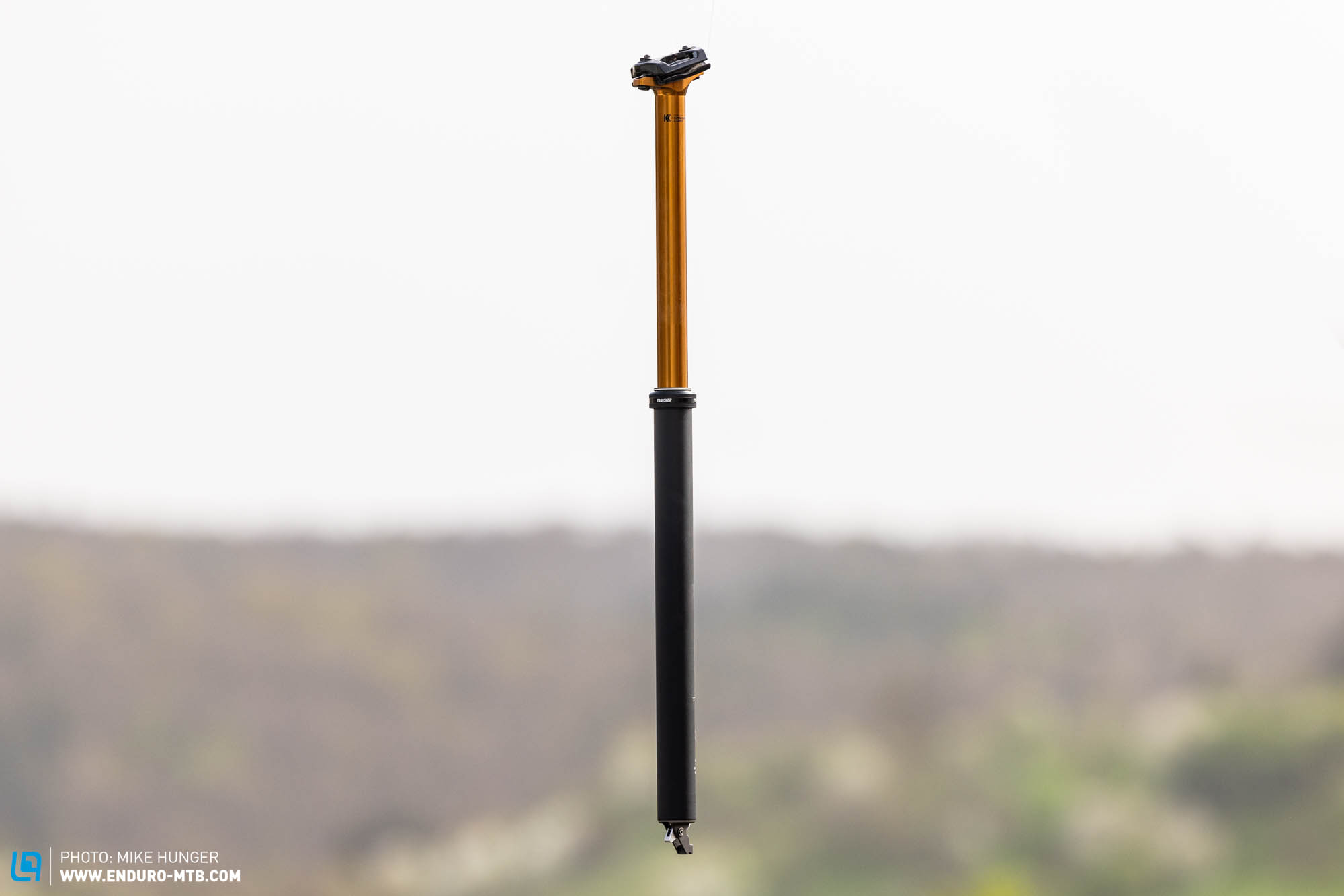
Go for gold: If there was a popularity contest for seatposts among mountain bike product managers, the gold medal would probably go to the FOX Transfer Factory and silver to the wireless RockShox Reverb AXS . There is no other seatpost that we have sat on more often in our tests than these two.
Gold doesn’t rust, but it can gather dust. The previous generation of FOX Transfer seatposts was introduced in 2020 and had its fair share of problems. So it’s high time for a new generation. The new FOX Transfer for the 2025 model comes with several improvements, both internally and in the casting. The most important change is the size. The new FOX Transfer dropper post is now available with 120-240 mm travel and for the first time with a 34.9 mm diameter in addition to the existing 30.9 and 31.6 mm versions. There’s also a new travel reduction function.

We have thoroughly tested the new FOX Transfer Factory dropper post with 240 mm travel and diameters of 31.6 and 34.9 mm. It costs € 449 (without a remote) and weighs 701 g (⌀ 31.6 mm). For perspective, on the gold market, 701 grams of precious metal currently costs around € 49,000. Our test will tell you how well the FOX Transfer dropper post performs in demanding trail conditions and whether it is worth its weight in gold.
The new FOX Transfer 2025 dropper post in detail
The old FOX Transfer was limited to 200 mm of travel, but the FOX Transfer 2025 now extends up to 240 mm. At the same time, the overall height has been reduced. The new stack height, measured from the bottom of the collar to the centre of the saddle clamp, is now 35 mm instead of 40 mm. FOX have achieved this mainly by shortening the collar. Whereas the old collar was almost 22 mm high, about the height of a first year business student’s shirt collar, the new collar has shrunk to 17 mm.
The maximum insertion depth has changed only slightly. A FOX Transfer 2021 with 150 mm travel and 31.6 mm diameter comes in at 230 mm, the 2025 version at 224 mm. The length of the 28 mm cable actuator at the bottom end remains unchanged for the 2025 model. Weighing in at 701 g, the FOX is not particularly light either. The comparable OneUp Components Dropper V3 with 240 mm stroke is even shorter in terms of stack height, insertion depth and overall length and is also 90 g lighter.
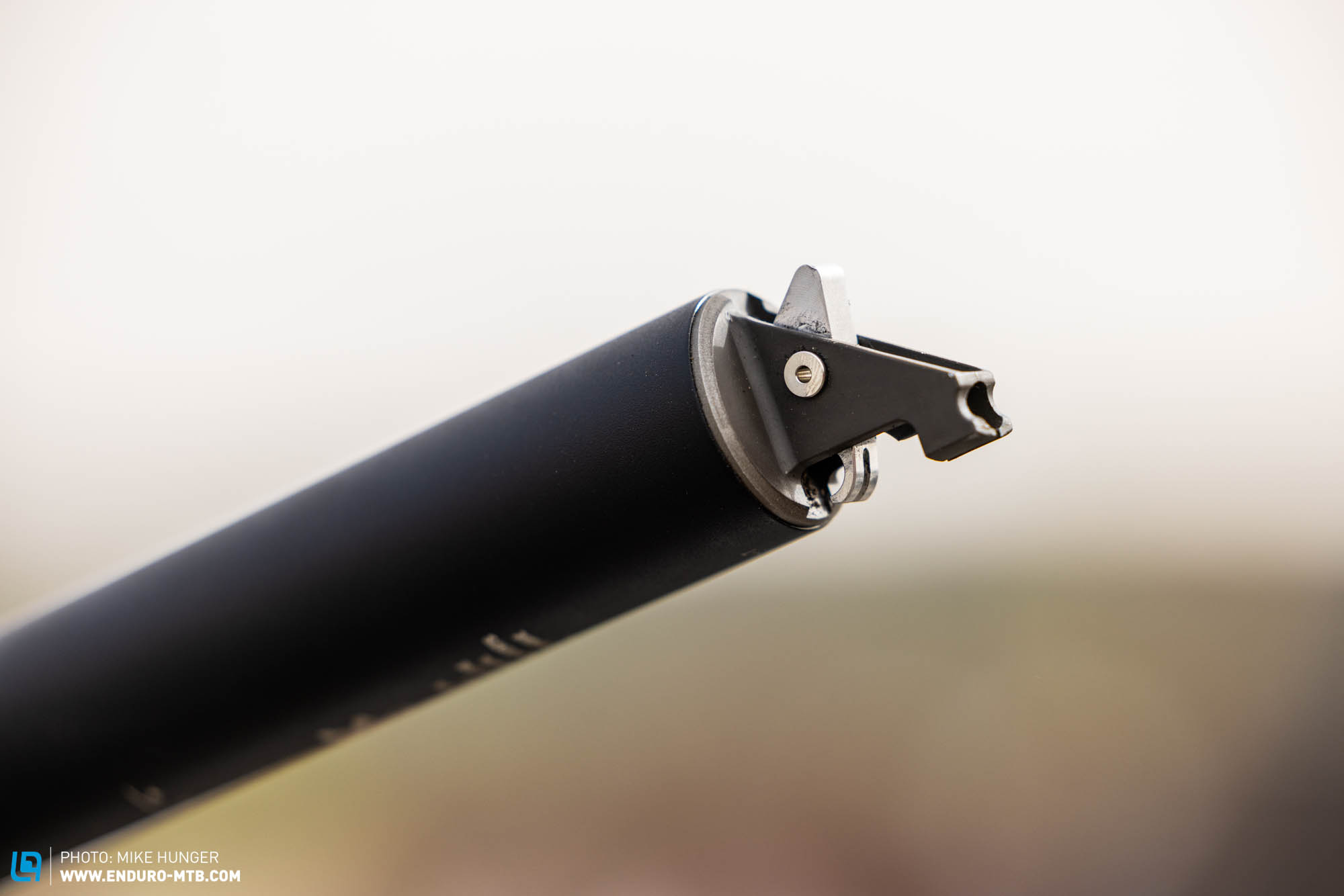
However, the minimum insertion depth has been drastically reduced to just 10 cm for the 240 mm version. This would even allow Shaquille O’Neal to sit comfortably on an S-frame. Although there are very few mountain bikes with such short seat tubes that can benefit from such a low minimum insertion depth – the Pole Voima comes to mind – it does provide more design freedom for future bikes.
If you have a mountain bike with a 34.9 mm seat tube, you’ll also benefit from the new FOX Transfer 2025. The larger diameter allows for a reduction in insertion depth by another 2–5 mm. While this might not seem like a significant difference, for some riders, it could be just enough reduction in length to consider switching to a version with more travel, especially when you take into account the new travel reduction feature of the FOX Transfer 2025 dropper post.
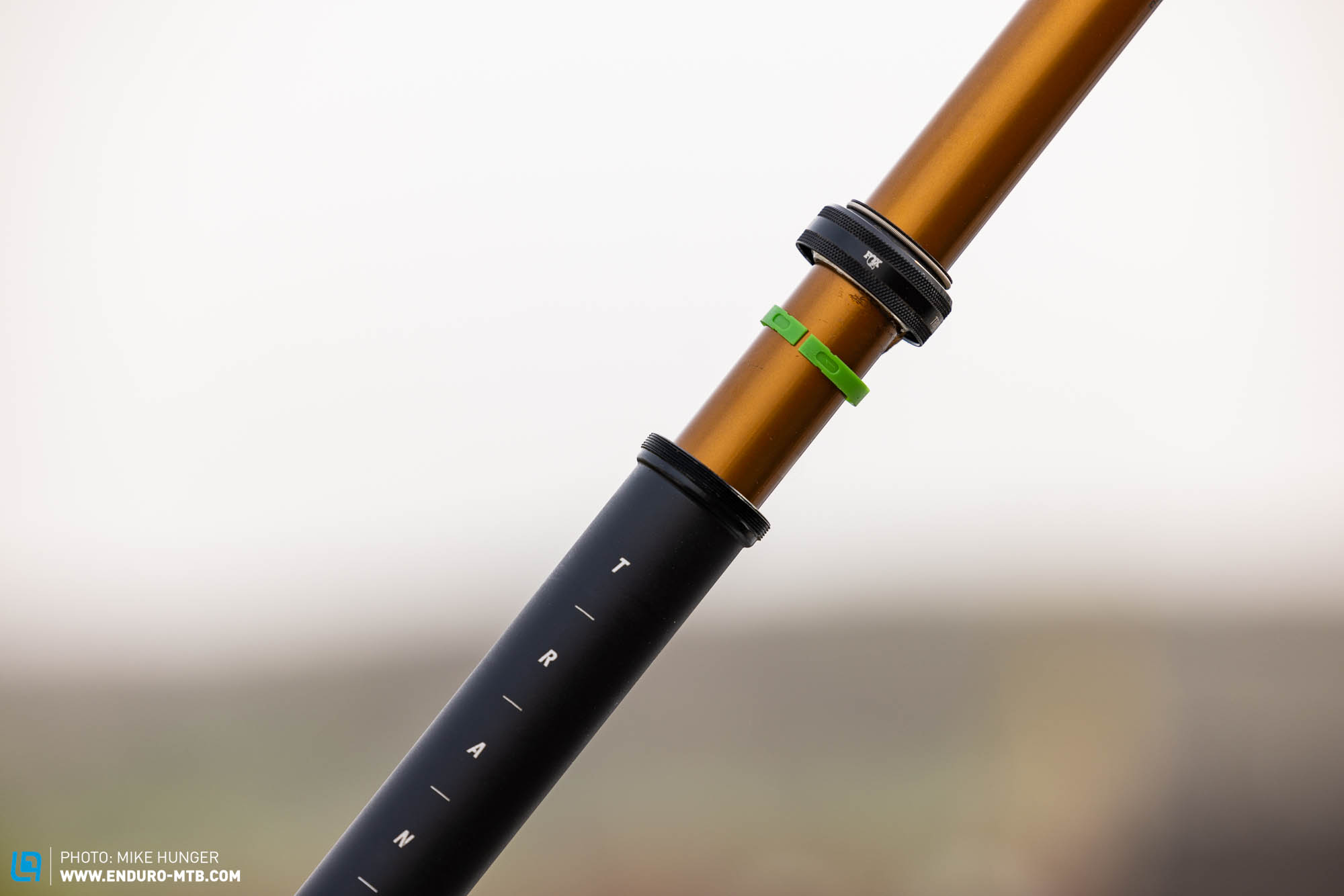
FOX include five small plastic spacers with the Transfer 2025. One spacer is 5 mm wide and reduces the travel by exactly that amount. Up to five spacers can be fitted to the new Transfer 2025 to reduce the travel by a maximum of 25 mm. If you need 30 mm less travel, just opt for the next shorter dropper. The FOX Transfer 2025 is available in travel lengths of 120, 150, 180, 210 and 240 mm.
Installing the spacers is straightforward and requires no tools – even when the dropper is installed. Simply retract the dropper more than 25 mm, screw on the seatpost collar and thread the required number of spacers onto the seatpost. Different spacers are used depending on the diameter: orange for the 30.9 and 31.6 mm versions, green for the 34.9 mm version.
Another new feature of the FOX Transfer 2025 is the new “old” saddle clamp design. Instead of two bolts that you could hook into the upper saddle clamp, standard nuts are used again. As always, fitting the saddle is a bit of a fiddly job, but probably bearable because you normally don’t change your saddle very often.
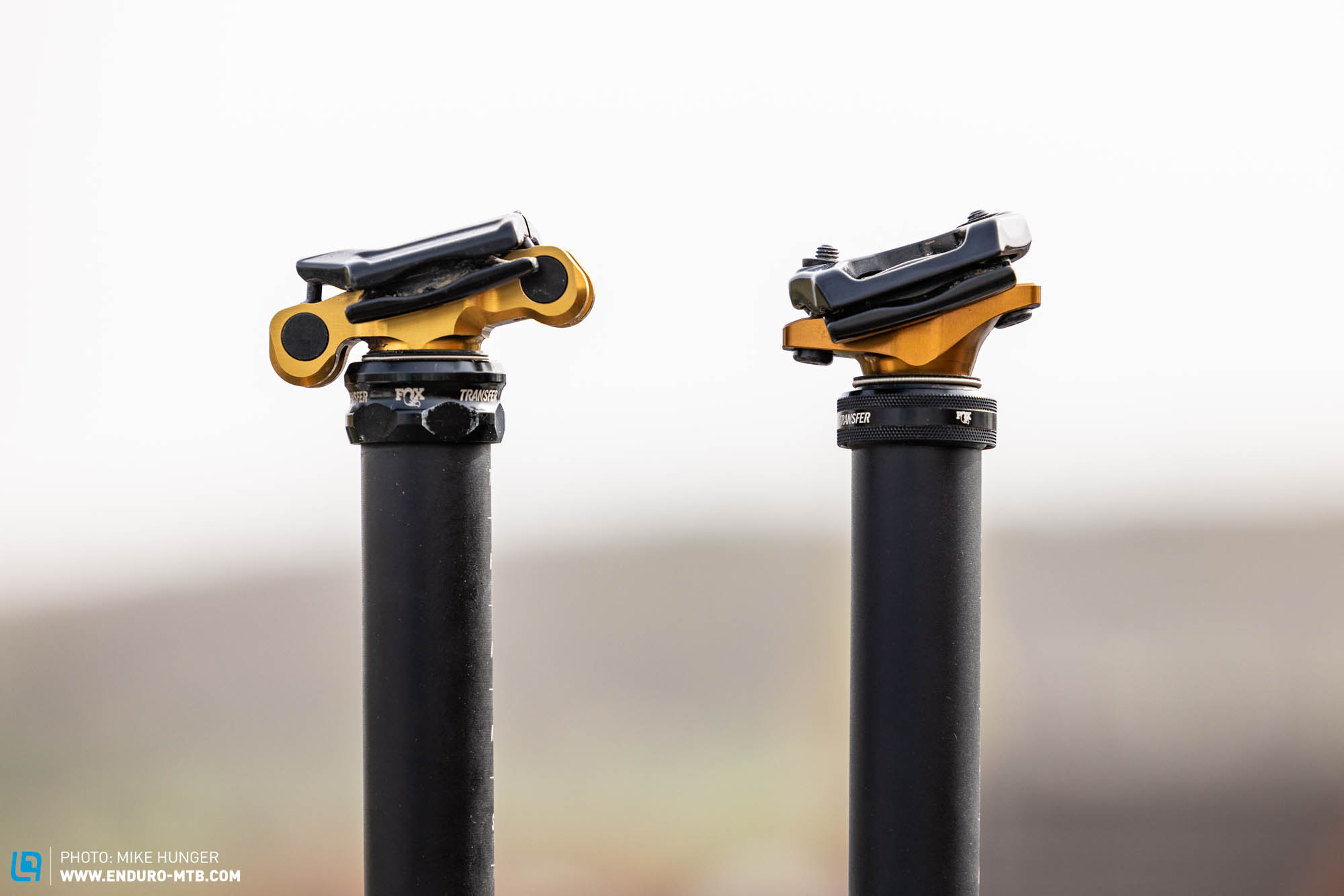
The saddle clamp bolt heads are angled away from the dropper post tube to make them easier to reach with a 4 mm Allen key. However, if you want to quickly adjust the saddle angle on the trail with a multi-tool, this design still leaves little space and you run the risk of scratching the shiny Kashima finish.
The new internals of the FOX Transfer 2025 dropper post in detail
Unscrew the saddle clamp and you’ll immediately notice that the internals have also changed. The air spring has moved from the bottom of the seat post to the top and you are now greeted by a Shrader valve. The pressure range for filling the dropper in the extended position is indicated on the valve cap: 275–325 psi. The stiffness of the spring also varies with air pressure.

If you wanted to service and refill the old FOX Transfer, you either had to watch a 90-minute YouTube tutorial twice and buy special tools that cost as much as the seatpost itself – including a € 180 gas refill adapter to fill the FOX Transfer with nitrogen. Alternatively, you could take it to an (authorised) workshop for service. However, the new FOX Transfer doesn’t need a gas refill adapter – it can be filled with normal ambient air from a shock pump.
According to FOX, you can now service the new Transfer yourself using standard tools. This includes separating the dip tube from the stanchion tube and applying fresh grease to the bushings. All you have to do is unscrew the cable actuator with a 10 mm open-end spanner and remove the seatpost collar. And just like that, the seatpost separates into two larger parts.
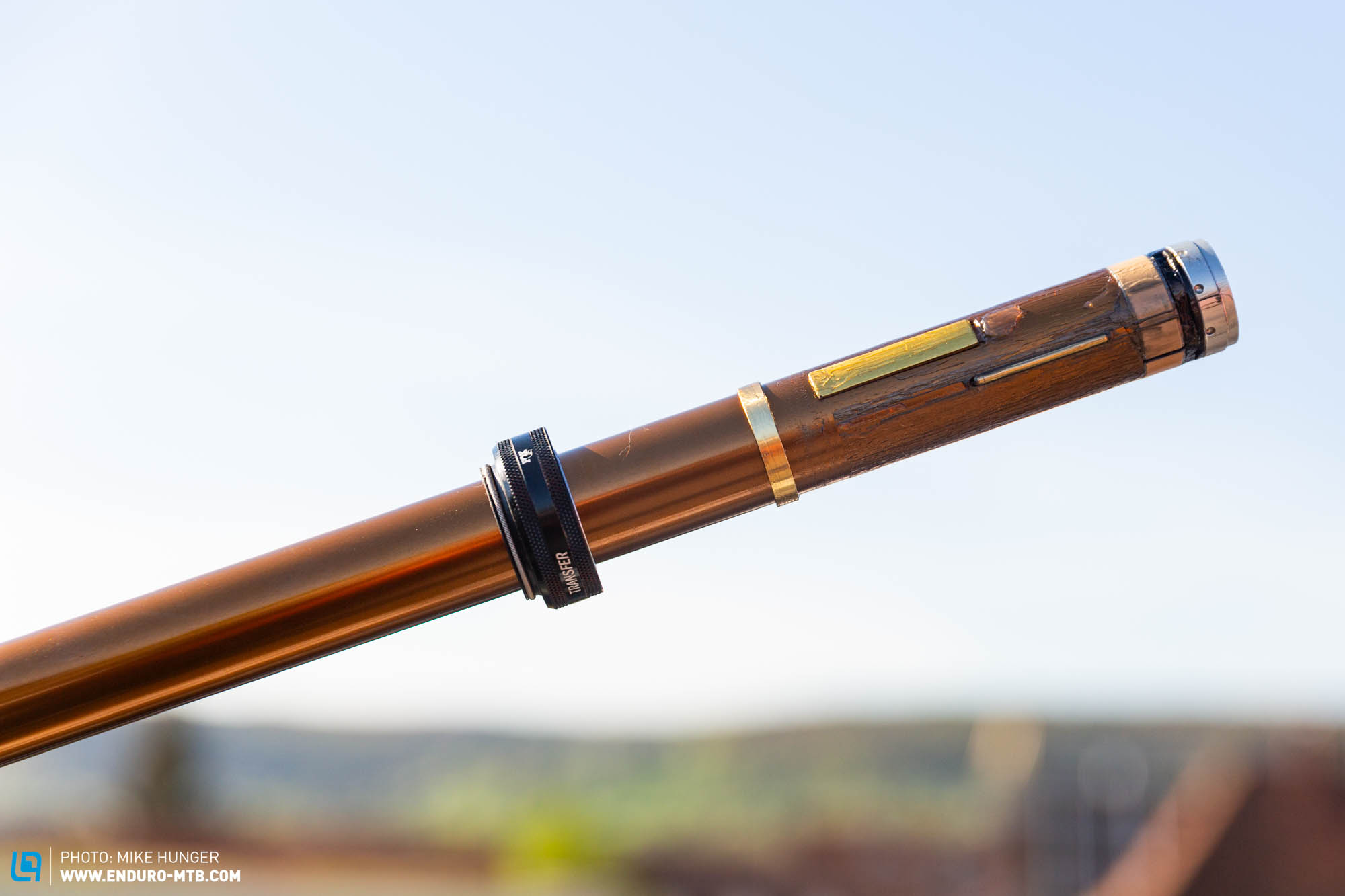
However, we will have to wait for the official FOX manual to be released before we can assess how long a complete rebuild will take. With the previous FOX Transfer, this process involved a total of 55 steps, so let’s hope it’s quicker this time.
In any case, FOX have drastically extended the service interval for the new Transfer 2025. According to the manufacturer, a full service is now only required every 300 hours. This is thanks to a new seal design that should also result in less air loss and less internal friction.
The bushings have also been revised. The IGUS bushings have been replaced by Ekonol bushings, which are said to allow lower tolerances and better sliding properties.
The spec variants of the new FOX Transfer 2025 dropper post in detail
As usual, the FOX Transfer 2025 dropper post is available in two variants. The names are derived from the FOX suspension models. The cheaper version is the FOX Transfer Performance Elite for € 369. It has a black anodised stanchion. The upmarket FOX Transfer Factory version comes with a Kashima-coated stanchion, allowing you to easily spot wealthy dentists on their bikes.
The Kashima coating is said to provide a lower sliding friction, making it more abrasion resistant, more durable and slightly less prone to scratching. From our practical experience with the FOX Factory suspension, we have not noticed any reduction in sliding friction – it is probably more the prestige factor of the golden colour that is appealing to buyers. The weak point of the Kashima coating: its colour has changed slightly compared to the previous product year. It is a little darker and more brownish and does not match the suspension forks from previous years. Our tip: treat yourself to a new FOX Factory fork to go with the new Transfer Factory dropper post ;)
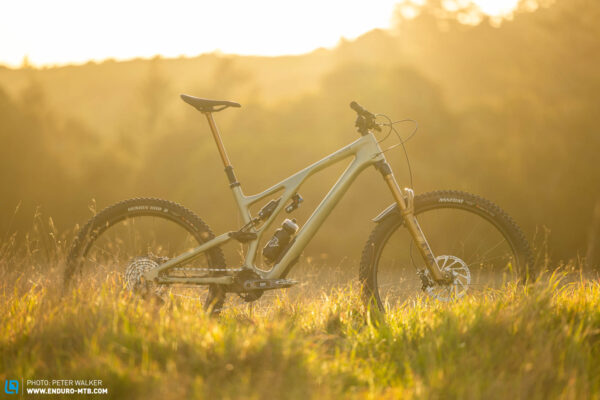
The remotes are unchanged from last year and are not included. You can order the FOX Transfer dropper post lever 1x for € 83 in the FOX online shop. Check our size chart to see if the new FOX Transfer 2025 fits your frame. We explain how to find the right size here .
*Manufacturer’s specification
The FOX Transfer 2025 dropper post in review
Fitting the seat post is self-explanatory: Attach the cable, press it into the seat tube with a little grease and tighten the seat clamp to the manufacturer’s specified torque – done.
Once the seatpost is filled with the correct air pressure, it extends rapidly, marking the end of its upward journey with a distinct “clonk” sound. The FOX Transfer 2025 can be raised gradually by pressing the lever halfway and can be stopped at any point along its travel.
In our head-to-head comparison, the 2025 is noticeably easier to operate than a brand new FOX Transfer from the previous model year with the same lever and freshly laid cables – but that may have been an isolated case. We will keep you informed and update this article.
With the exception of one brief hiccup, the FOX Transfer extended smoothly during all of our test rides so far. When retracting, the air chamber provides a little more support towards the end of the travel. This means that heavier riders don’t go through the full 240 mm of travel when sitting down. However, it also makes manual retraction a little more difficult. Lighter riders should aim for the lower air pressure recommendation of 275 psi when setting up the dropper post.
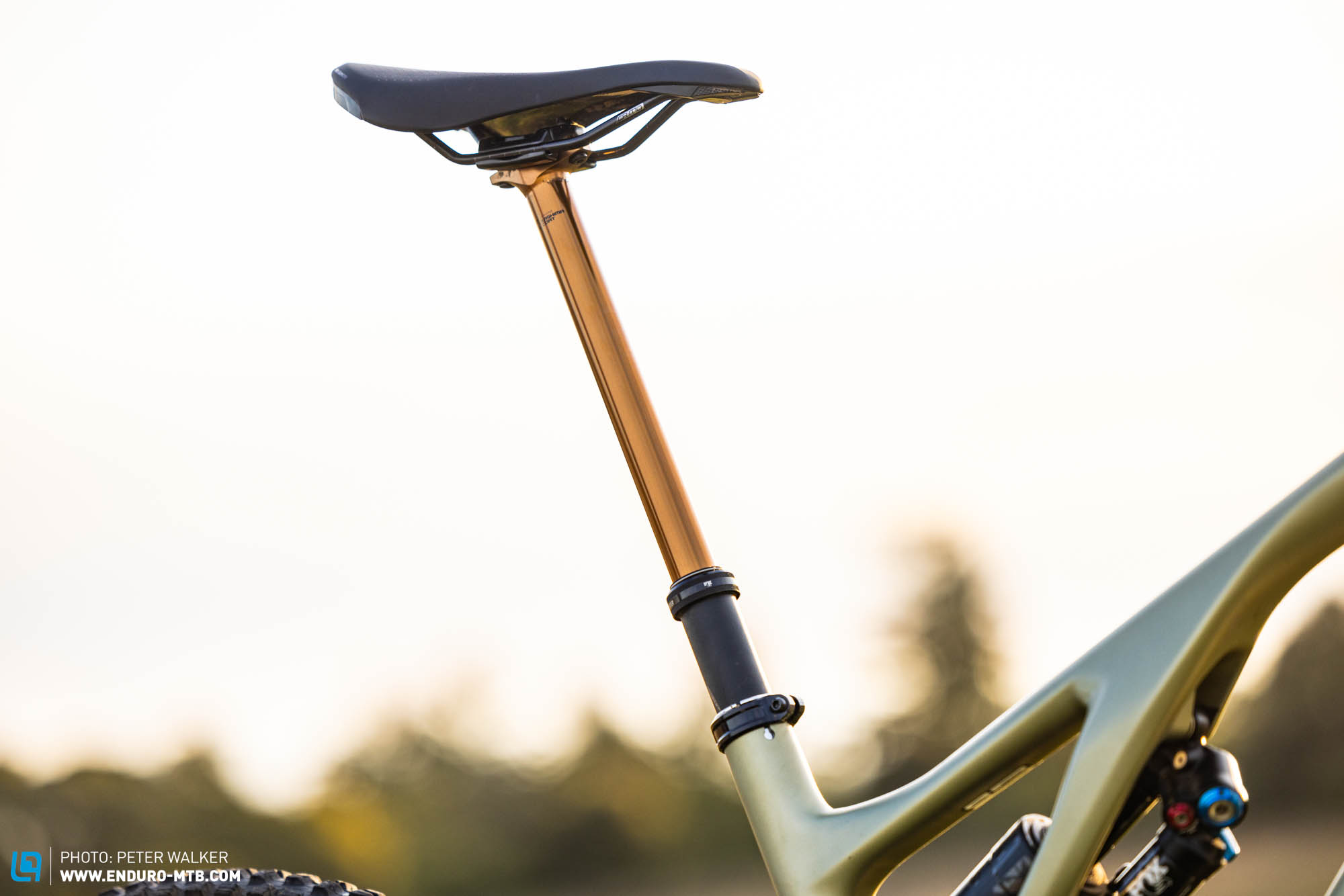
When lowered while you’re in the saddle, the post retracts smoothly. As a test, we put all our weight on the rear edge of the saddle to apply maximum lateral force to the post. However, the FOX Transfer 2025 dropper post remained completely unfazed.
Even when extended, the post is remarkably stable. When sitting on it, you won’t notice any flex or play. Only when the saddle is turned by hand from above can the dropper be moved back and forth by what feels like a mere micrometre.
The extra freedom of movement provided by the dropper’s 240 mm travel is worth its weight in gold. For riders who spend a lot of time on technical terrain with steep sections, every extra centimetre of freedom of movement is invaluable.
Conclusion on the new FOX Transfer 2025 dropper post
The increased travel and slightly lower stack height of the new FOX Transfer 2025 is terrific. We also appreciate the longer service interval and the new air chamber design, which makes filling much easier. It’s a shame, however, that the insertion depth has only been reduced slightly. Nevertheless, thanks to the new travel reduction option, this dropper post is sure to find its way onto many new mountain bikes because its quality and performance leave nothing to be desired.
- plenty of travel
- tool-free travel reduction
- smooth adjustment and easy operation
- no flex even when fully extended
- a bit long and heavy
For more information visit ridefox.com
Did you enjoy this article? If so, we would be stoked if you decide to support us with a monthly contribution. By becoming a supporter of ENDURO, you will help secure a sustainable future for high-quality mountain bike journalism. Click here to learn more .
Words: Rudolf Fischer Photos: Mike Hunger, Peter Walker
You may also like

New MAXXIS Aspen ST – A new XC tire with minimal rolling resistance

Fancy an epic road trip? Come with us for our unique roof-top tent...

New 2024 Yeti SB165 on test – Fun > Fast

New RAAW Jibb V2 on test – Old terrier, new tricks?

Unstoppable – the new ENDURO issue #059 is here!

New 2025 FOX dampers on test – GRIP X2, GRIP X and GRIP SL
About the author.
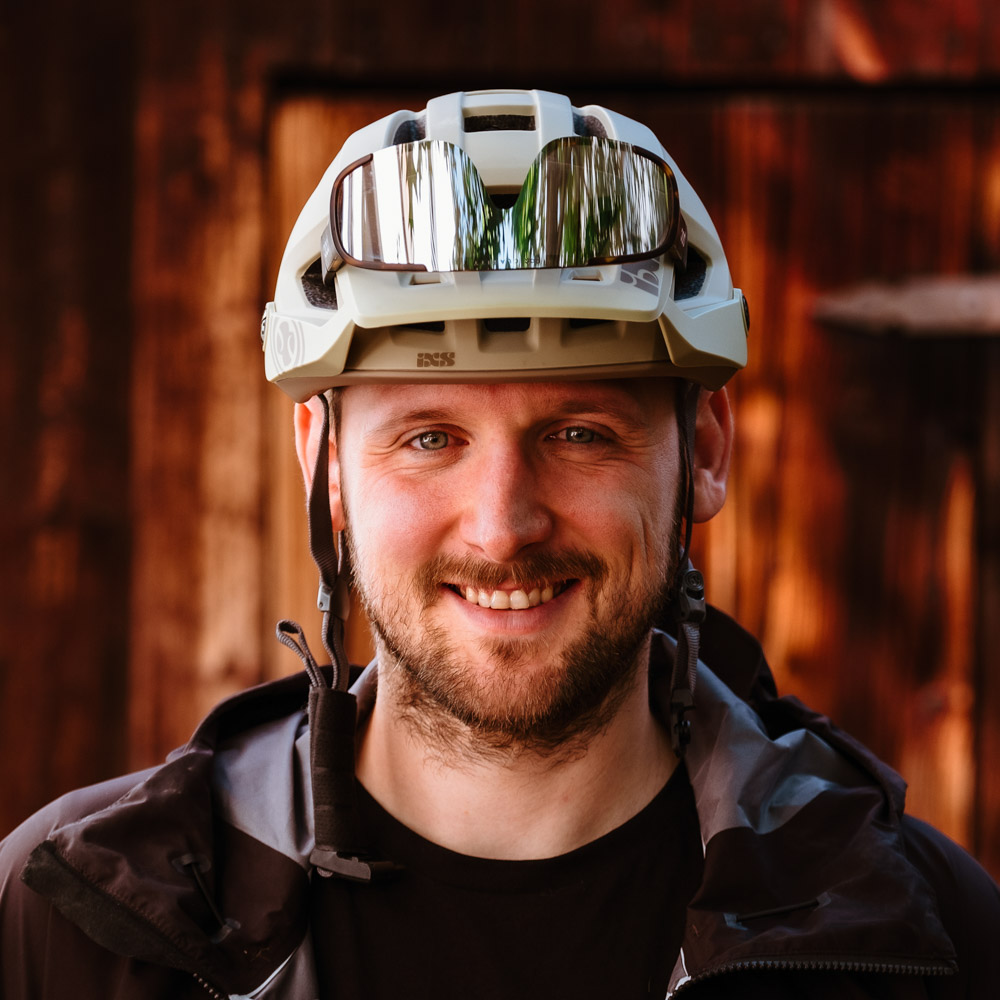
Rudolf Fischer
In his previous life Rudolf was a dab hand at promoting innovation, putting his brain behind big-ticket patent assessments that easily ran into six-or-seven-plus figures. These days, the self-confessed data nerd’s role as editor at DOWNTOWN and E-MOUNTAINBIKE is no less exciting. Given his specialism in connectivity, Rudolf’s often placed on the front line of future mobility conversations, but he’s also big into testing new bikes–both on the daily as a committed commuter and intensively for our group tests. The business economist graduate is as versatile as a Swiss penknife, and that’s no hyperbole. Away from two wheels, his background in parkour means he’s a master of front, side and backflips, plus he speaks German, English, French, Russian and a touch of Esperanto. Japanese remains woefully unmastered, despite his best home-learning attempts. Good to know: Rudolf’s sharp tongue has made him a figure of fear in the office, where he’s got a reputation for flexing a dry wittiness à la Ricky Gervais... interestingly, he's usually the one laughing hardest.
- Accessories
- Find Our Dealer

NCM Moscow Plus
An e-mountain bike equipped with high-end brake and drive systems, the NCM M5 is for adventurous riders who want to hit the trails comfortable in the knowledge that their ebike can handle whatever they throw at it.
BIKE COMPONENTS
Frame: Alu. 6061, 26"*17.3 inches / Alu. 6061, 27.5"*18.9 inches / Alu. 6061, 29"*20.5 inches
Suspension Fork: Suntour, XCM-HLO-26/27.5/29, with hydraulic lock system
Brake: F/R: Tektro Hydraulic Disc Brakes,HD-E350
Freewheel: LY, 8 Speed, 11-32T, Silver
Tire: Schwalbe, Black Jack, 26"*2.1/Smart Sam, 27.5"*2.35/29"*2.35, Black
Saddle: Selle Royal, Lookin-A200UR, Black
Crank: Das-Kit, CM48,28/38/48T
Derailleur: F: Shimano, Altus, FD-M310, R: Shimano, Acera, RD-M360
ELECTRIC COMPONENTS
Battery: Das-Kit, i5-4816, 48V 16AH, 768WH
Motor: Das-Kit, X15, Rear drive motor, 48V 500W, 32KM/H
Controller: Das-Kit, CT-i5, 48V 18A
Charger: Das-Kit, 48V3A
Display: Das-Kit, C7
Net Weight (with battery): 26.0kg
Battery Weight: 4.0kg
Max Load (driver+bike): 125.0kg
- Share Share on Facebook Opens in a new window.
- Tweet Tweet on Twitter Opens in a new window.
- Pin it Pin on Pinterest Opens in a new window.
Our on-line store is open 24/7 and we ship Monday through Friday, excluding some holidays. Orders received for products without shipping restrictions on its product page will ship the same business day when received before 12:00 p.m. PST. Orders in high demand will have an estimated production time listed on its product page and will ship according to the date listed.
Customer Reviews
I like my mountain plus bike.The only problem i have, the third speed jump when i put some pressure . Its not an adjustement, everything is fine. The problem is with the freewheel .I did 70 kilometer with the bike and it attenuate the problem a little.
Bike assembled easy and ride good.
We purchased the NCM Moscow 29 E bike from Leon Cycles earlier this month. Communication was via 'Whatsapp' which I initially thought a little odd but worked out well. Once communication established the transaction was completed quickly and easily. We were able to arrange for the team to assemble the bike for us and we picked it up from the warehouse without an issue. We love the bike and are continuing to find new places to discover using it. Competitive price and great service.
Been riding the trails both road and mountain for a few months. Great power and no issues with components
I ordered the bike 4 days ago and today it arrived. Now my first impressions: it is easy to assemble, looks great, is cleanly finished and after a first short driving test I have to say, the hammer. It's totally easy to drive. If it stays that way, I can only say thank you Leon Cycle. Now I can cycle again, despite knee problems. Price-performance top
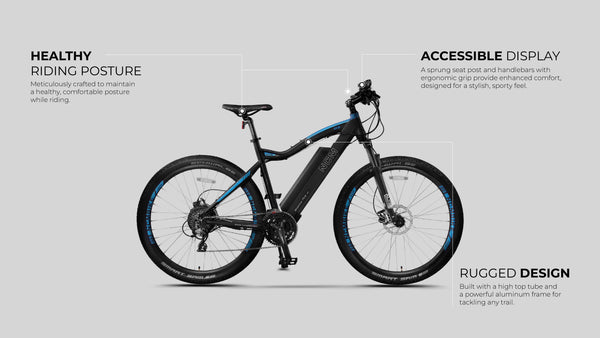
Highlighted Features
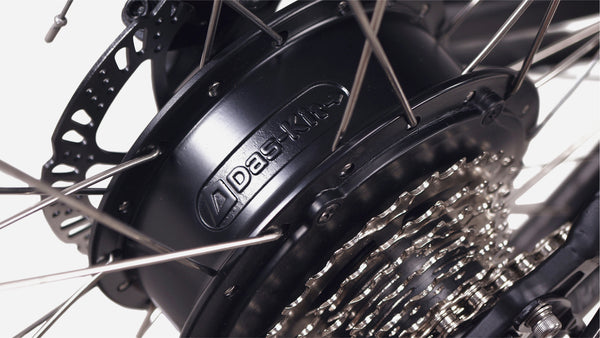
Das-Kit 500W Motor
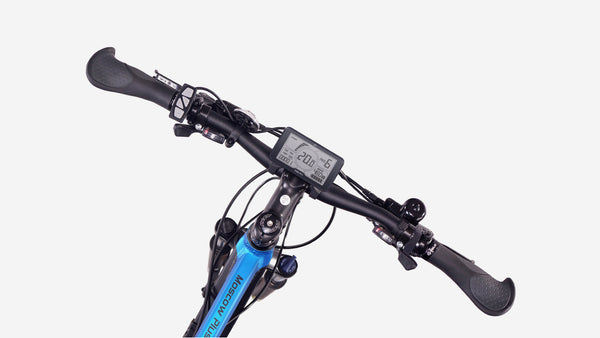
Ergonomic handlebar grips
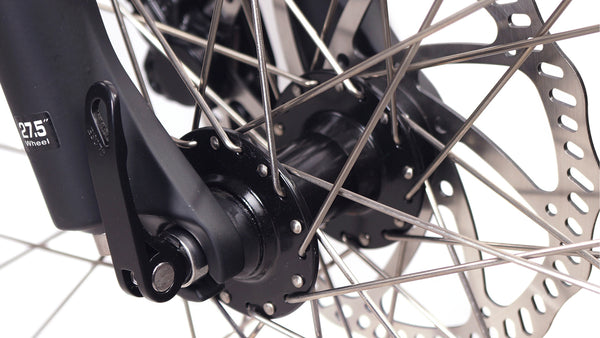
Moscow 48V disc brake
Product specifications.
Frame: Alu. 6061, 26"*17.3 inches / Alu. 6061, 27.5"*18.9 inches / Alu. 6061, 29"*20.5 inches
Suspension Fork: Suntour, XCM-HLO-26/27.5/29, with hydraulic lock system
Brake: F/R: Tektro Hydraulic Disc Brakes,HD-E350
Freewheel: LY, 8 Speed, 11-32T, Silver
Tire: Schwalbe, Black Jack, 26"*2.1/Smart Sam, 27.5"*2.35/29"*2.35, Black
Saddle: Selle Royal, Lookin-A200UR, Black
Crank: Das-Kit, CM48,28/38/48T
Derailleur: F: Shimano, Altus, FD-M310, R: Shimano, Acera, RD-M360
Battery: Das-Kit, i5-4816, 48V 16AH, 768WH
Motor: Das-Kit, X15, Rear drive motor, 48V 500W, 32KM/H
Controller: Das-Kit, CT-i5, 48V 18A
Charger: Das-Kit, 48V3A
Display: Das-Kit, C7

Featured products
Sign up to get the latest updates on sales, news release, and more.
Region/Country
- United States
INFORMATION
- Contact Information
- Terms of Service
- Shipping Policy
- Refund Policy
- Privacy Policy
© 2024, NCMBike CA
Thanks for subscribing
- Bahasa Indonesia
- Slovenščina
- Science & Tech
- Russian Kitchen
How to explore Moscow in 1 day on 2 wheels: 5 cycling routes
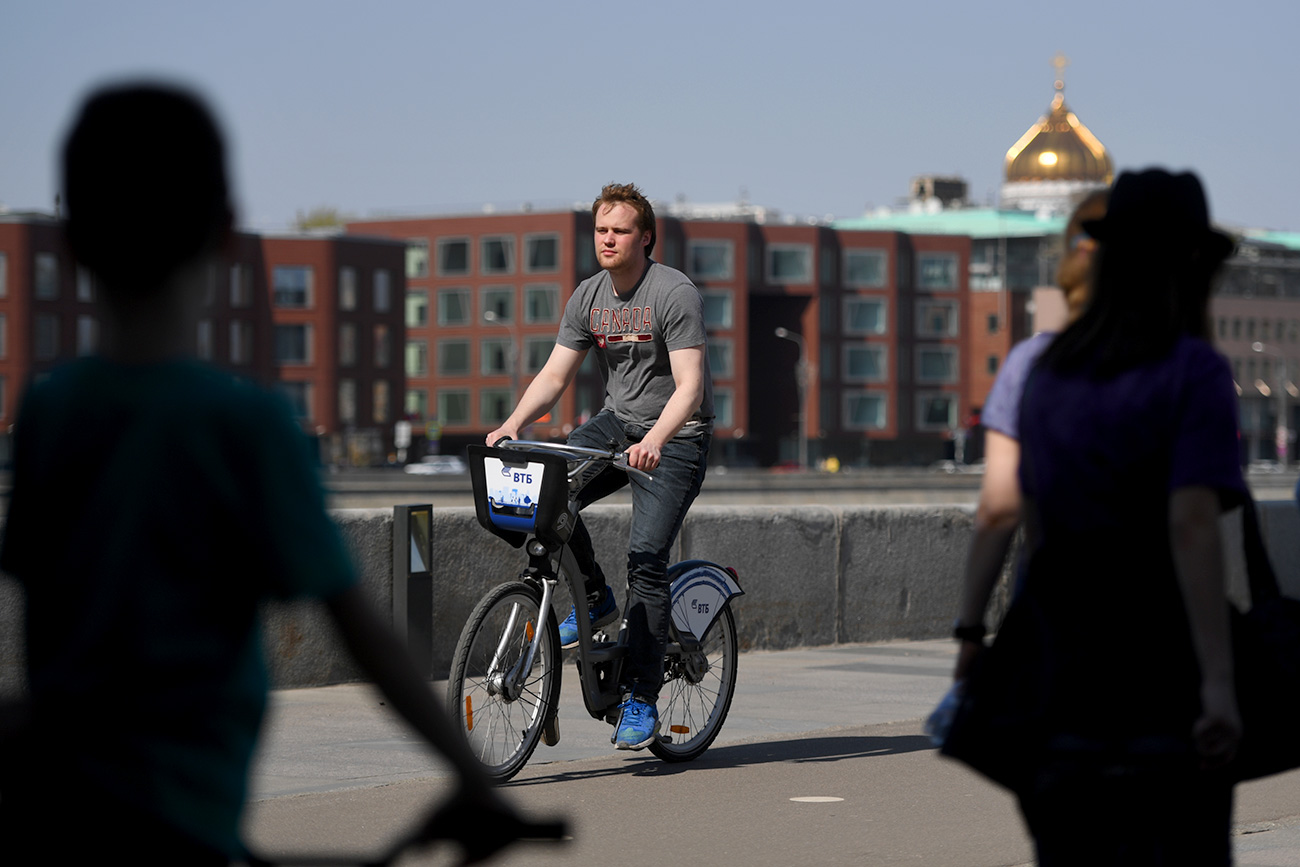
Riding a bike from a city public bike rental station along the embankment of Muzeon Arts Park.
Moscow cycling routes. / Stepan Zharky
Along the moskva river - 29km.
Nagatinskaya Embankment – Red Square – Taynitsky Garden - Kremlin Embankment - Cathedral of Christ the Savior – Luzhniki – The Alley of Fame - Krasnaya Presnya Park - Moscow International Business Center ( Moscow City )
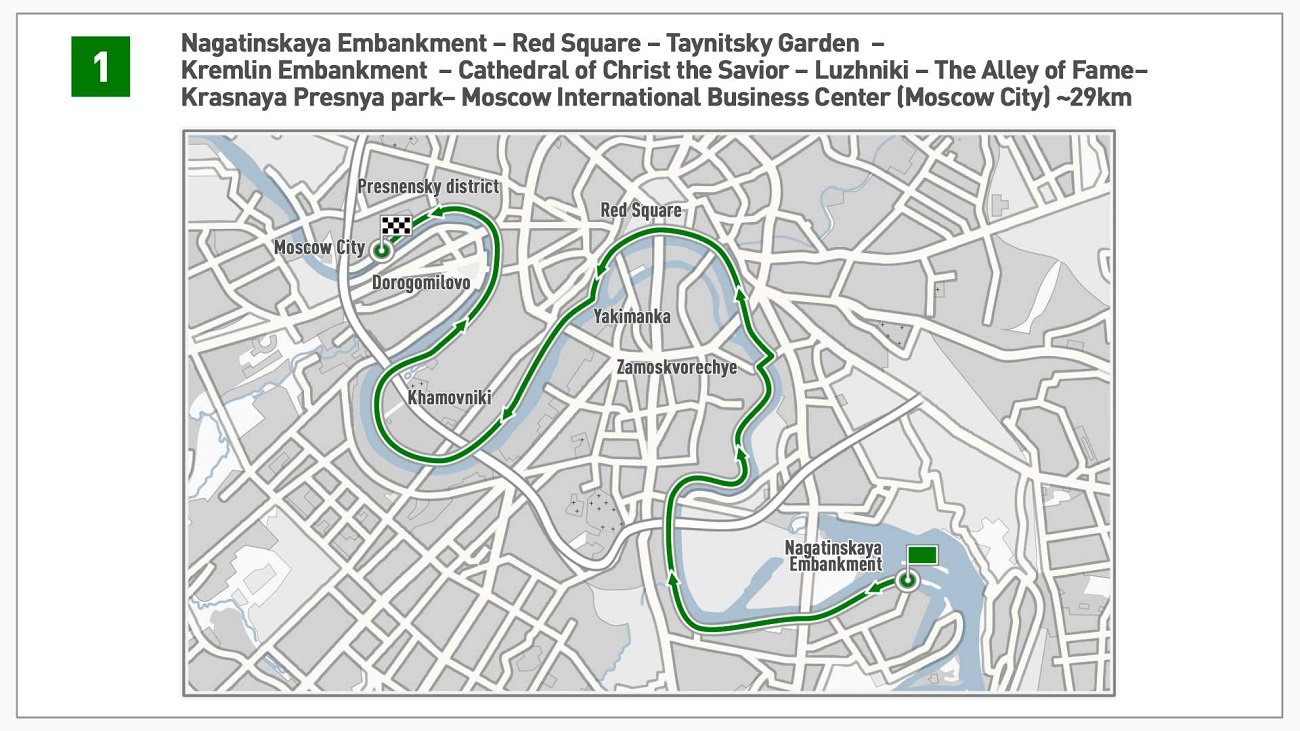
This scenic route along the embankment of the Moskva River will take you away from the city’s infamous traffic. Start at Nagatinskaya Embankment, one of the most beautiful in the capital due to the fascinating architecture dotted along it.
Cycle onto Novospassky Bridge and cross onto the other side of the embankment before riding over to Ustinsky Bridge. Jump off your bike and take the stairs down.
Once on level ground, pedal past two of Moscow’s most iconic landmarks - Red Square and the Cathedral of Christ the Savior - then on to Luzhniki.
Follow signs to the Novodevichya and Savvinskaya Embankments.
Ride in the direction of Smolenskaya and Krasnopresnenskaya Metro stations and you’ll eventually reach the Moscow International Business Center (Moscow City) and its stunning array of skyscrapers.
Soviet grandeur - 13km
VDNKh - Moscow Botanical Garden of Academy of Sciences - Rock Garden - Ostankino Park - Ostankino Palace
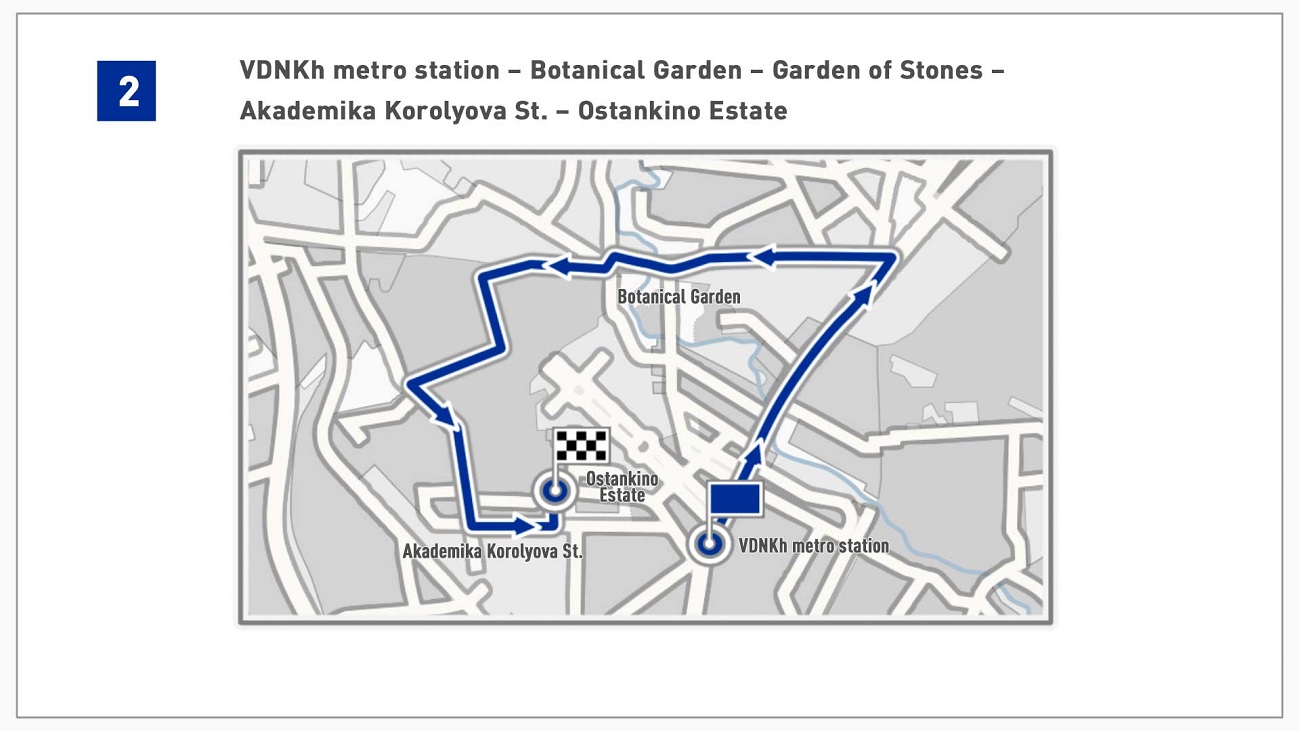
If the sights and sounds of the city center are wearing you down, head to VDNKh. It’s a unique park, rich in history and architecture. The complex includes more than 500 permanent structures and 49 of them are objects of cultural heritage. Cycle through the park before arriving at the Moscow Botanical Garden of Academy of Sciences, right next to VDNKh. Then follow signs to the Rock Garden, also referred as the Moscow’s “stone jungle.”
Ostankino Park is the next stop and it’s known for its wide avenues, ponds, and lush greenery. Cycle a little further and you’ll come to some beautiful examples of 17th and 18th century architecture. Ostankino Palace is a unique Russian monument made entirely of wood and amazingly it’s retained its original interiors.
Bright lights, big city - 12km
Moscow International Business Center ( Moscow City ) - Radisson Royal Hotel (Hotel Ukraine) - Square of Europe – Observation deck - Ministry of Foreign Affairs - Arbat Street – Red Square
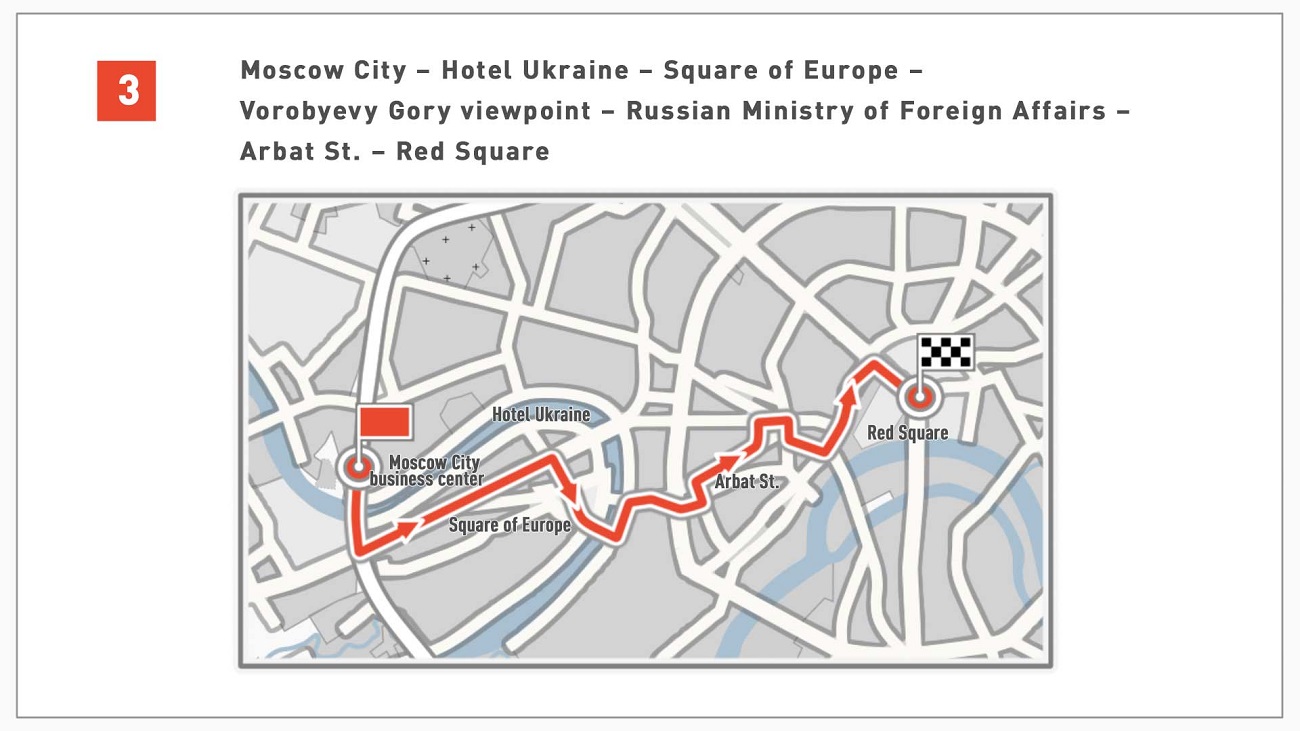
Try this route at night and you'll be blown away. The Russian capital is a city of contrasts: Set off from the Taras Shevchenko Embankment and soak up the striking modernity of Moscow City before cruising past the classical, Stalinist magnificence of the Hotel Ukraine.
Pass by both the Berezhkovskaya and Vorobyevskaya Embankments and take a break on the observation deck at Sparrow Hills. From here you can see all of the Seven Sisters skyscrapers. Next, ride on down to the Ministry of Foreign Affairs and then to Arbat Street, which will lead you to an unforgettable view of the Kremlin and Red Square.
Right in the capital’s heart - 9km
Rozhdestvensky Boulevard - Tsvetnoy Boulevard - Strastnoy Boulevard - Novopushkinskiy square - Tverskaya Street - New Arbat Avenue - Patriarch Ponds - Garden Ring - Moscow Hermitage Garden
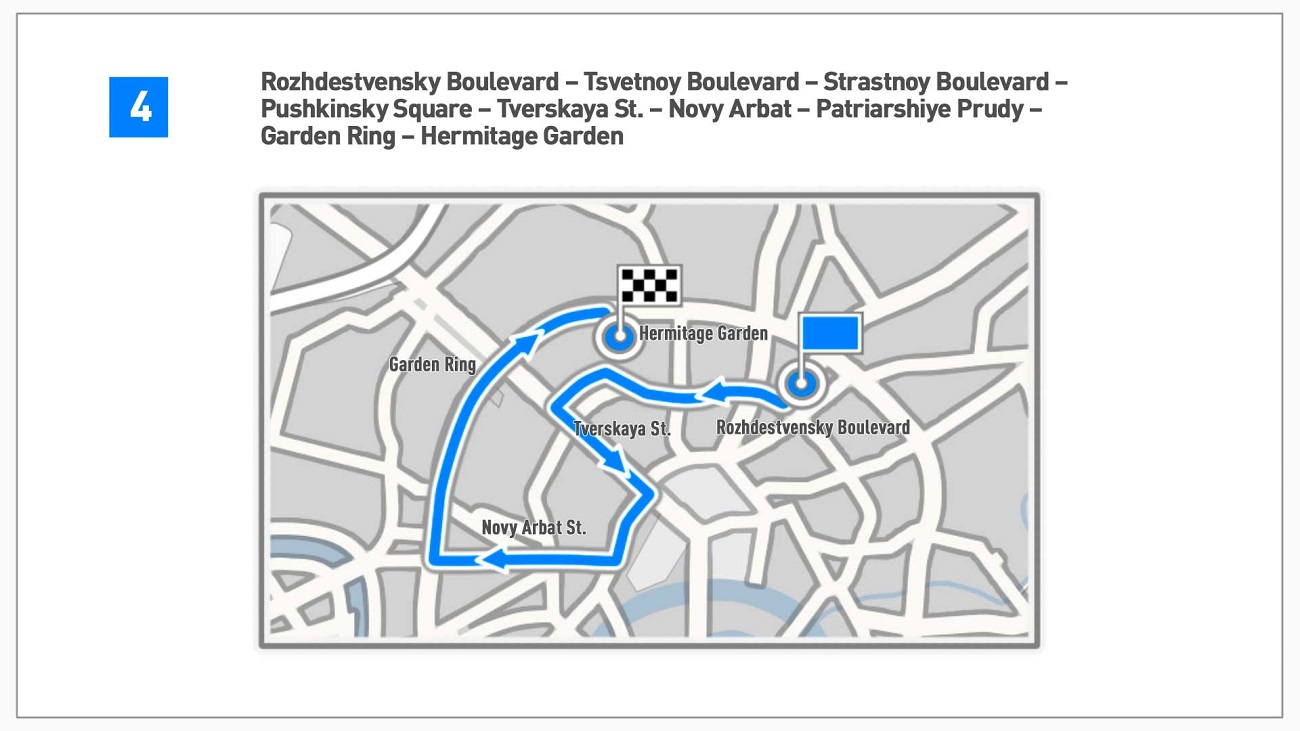
This route takes you right through the heart of the city center. Glide past some of Moscow’s most iconic sights. Start at Pushkin Square and bike over to the Government of Moscow building. Then head to New Arbat Avenue and take a rest at Patriarch Ponds. Visit the Bulgakov Museum and take a look at the Moscow Satire Theater and Mossovet Theater. Continue biking towards Sadovo-Trimfalnyy Square and follow the signs to Moscow’s Hermitage Garden. Here you can enjoy a cool beer in the shade.
Chistyye Prudy to Sokolniki Park - 7km
Ustyinsky Square - Chistyye Prudy - Sretensky Boulevard - Sovremennik Theater - Komsomolskaya Square - Sokolniki Park

This route starts off at the Ustinsky Bridge that stretches over Moskva River. After enjoying the beautiful views bike northeast to Yauzsky Boulevard, continue onto Pokrovsky Boulevard, and then cycle to Chistoprudny Boulevard. Your first stop will be Chistyye Prudy – a park in the city center surrounding a charming pond and pavilion. There are a number of sculptures and monuments here that have been glorified countless times in both literary and musical works.
Once you’ve had your fill of Moscow’s “green island,” pedal in the direction of Turgenevskaya Metro - you’ll end up at Academician Sakharov Avenue. Then continue to Komsomolskaya Metro followed by Rusakovskaya Street. Turn left and follow signs to one of the city’s most bike-friendly parks: Sokolniki.
Read more: Wheels of change: Russia’s cycling revolution gathers speed
If using any of Russia Beyond's content, partly or in full, always provide an active hyperlink to the original material.
to our newsletter!
Get the week's best stories straight to your inbox
This website uses cookies. Click here to find out more.

- My Russian Course
Ari Helderman
Hi, my name is Ari! I help people learn Russian through videos and blog posts where I share my experience. I've been learning Russian since 2016. I often get mistaken for a native Russian speaker, so I've learned a thing or two about what works and what doesn't if you want to speak Russian well . I'm here to help, so leave a comment with any questions!
Session expired
Please log in again. The login page will open in a new tab. After logging in you can close it and return to this page.

IMAGES
VIDEO
COMMENTS
Mid-travel full-suspension MTBs tend to cover a broader spectrum of mountain biking applications than other more specific MTB styles. With front and rear travel in the 130mm to 160mm range, these mountain bikes are usually classed as trail or all-mountain bikes. These bikes are able to handle relatively mountainous conditions like rocky trails and singletracks […]
With over 160mm of travel, Downhill bikes are built to soak up the big hits on fast descents. Bikes >> Mountain Bikes. SORT BY Best Match. Items Per Page. 48 | 100. PAGE 1 of 2. SPECIALIZED STUMPJUMPER EVO ALLOY XT JENSON EXCLUSIVE BIKE. $3,399.00. SAVE 43 %.
Personally, I ride a bike with 160/150 travel front and rear. I use all of that travel nearly every ride as I am bigger rider (195 lbs with gear) and I ride aggressively. ... The huge benefit of long travel (say 160 mm), is that you can get distinct behaviors in the zero-to-sag, the sag-to-mid, the mid-to 80-90%, and the last 10-20%. ...
Bike Build Process All bikes are built, tested, tuned, and ready to ride upon shipment. The bike build process typically takes 2-3 days to complete depending on the bike model and the complexity of the build. Stock Status Orders for in-stock items placed by 3PM PST usually ship on the same day.
• 130 / 150 mm travel • Weight as tested: 14.4 Kg / 31.7 lbs ("trail" tires, 200 mm rotors) ... I have more fun on a long travel bike as it gives me the confidence to try new lines or ride ...
160E 160 MM 29 " ... The SB160's kinematics have been refined for the added travel with increased bottom out control while maintaining a relatively linear progression curve. Why a linear curve? ... Bike Rumor PINKBIKE Freehub MTB Magazine Vital MTB Enduro Mountain Bike Magazine. Incredibly Capable. Remarkably Balanced. Astonishingly Fast ...
2. Knolly Chilcotin: With a 170mm of travel and bike wizard Noel Buckley driving the designs, this bike first came on my radar recently because of Nic from VanCan. I used to have a Knolly and the bikes ride amazingly. However this year they went to a straight top tube design on this 170mm downhill ripper and I have to say, it looks clean!
Notch is Salsa's high-torque electric mountain bike. In 160 mm-travel mode, It's a balanced platform built for roaming far on rowdy terrain. With geometry poised for stability at speed, a powerful Bosch Performance Line CX motor, efficient Split Pivot suspension, and on-bike storage, Notch is happiest when it's putting in extra laps, exploring new trail systems, or battling between the tape in ...
In case you're new to riding, mountain bike suspension travel is a measurement of how much a wheel can move to absorb bumps. On the front, mountain bike travel comes from your suspension fork. At the rear, MTB travel is provided by some configuration of frame pivots that compress a rear shock. Going big is easier on my 150mm enduro bike.
Ferrum LVN160 2 - 160mm Travel CrMo Chromoly Steel Full Suspension Mountain Bike. Made to Pedal and Descend. ... LVN160 V2 MTB Frame | 160MM Rear Travel | Chromoly Steel Full Suspension MTB Frame $ 1,398.00 - $ 1,598.00. Size ... I built mine to be a park bike at 170/160 and full 27.5. I dialed in the suspension and took it to the local park ...
Ferrum Bikes Custom Geo NV160 Chromoly Steel Full Suspension Trail and Enduro Mountain Bike Frame. Steel frames breathe more life into boring old trails. ... Fork Axle to Crown * Please Enter Your Fork's Axle to Crown Length -Varies by brand but typically a 29" fork at 180mm travel is 592mm and 27.5" at 180mm is ... NV-160-Steel-Full-Suspension ...
We recommend that a trail fork ideally have 34mm stanchions, at 130-140mm, for a 29er - possibly, up to 150mm, for the smaller 27.5in wheel size. As fork travel increases with trail bikes, the latitude of responsiveness from your damper becomes more complex. You will see premium trail bike forks offering high- and low-speed compression ...
The Dreadnought comes in the brilliantly named Bloody Sabbath and Fatty T color options (Image credit: Forbidden). During the design process of the new Dreadnought Forbidden have collaborated with its factory race team and its team of test riders to pull in as much feedback on the original Dreadnought and the current V2 platform bikes.
Which bike brands make the best entry-level full suspension mountain bike? Many brands like GT, Diamondback, and Marin make excellent entry-level full-suspension mountain bikes. They are budget-friendly without compromising on their components and quality. Some things to look for are the component package, frame material, and suspension.
Diamondback Mission Pro: It's a sweet bike - super good looking and comes in with about 160mm of travel. Looks like it can climb well and take downhill sections well enough. But my concern is that 160mm is just simply not a big enough difference from my XM7. Santa Cruz Nomad:
How much suspension travel do I need on my mountain bike? | BikeRadar.
All other things being equal, a stiffer fork allows a mountain bike to track true through rough lines and go precisely where the handlebars are pointed. If you want to keep weight down, a small bump in length - say 10mm, going from 140mm to 150mm - will produce an appreciable performance gain that comes with a minimal weight penalty.
A few weeks ago, Steve took his best man Sam along for the monumental challenge of crossing the whole of Wales without touching any paved roads! The two bike...
The new FOX Transfer dropper post is now available with 120-240 mm travel and for the first time with a 34.9 mm diameter in addition to the existing 30.9 and 31.6 mm versions. There's also a new travel reduction function. The biggest change is the size: the FOX Transfer 2025 dropper post is now available with 120-240 mm of travel.
An e-mountain bike equipped with high-end brake and drive systems, the NCM M5 is for adventurous riders who want to hit the trails comfortable in the knowledge that their ebike can handle whatever they throw at it. BIKE COMPONENTS Frame: Alu. 6061, 26"*17.3 inches / Alu. 6061, 27.5"*18.9 inches / Alu. 6061, 2
Mountain Bike. title riding area rating distance descent climb; Alt Rock: Moscow Mountain: 3,579 ft-191 ft: 45 ft: Balsam Route: Moscow Mountain: 1 mile-27 ft: 353 ft: Big Meadow Creek: Moscow Mountain: 3 miles-103 ft: 524 ft: Blonde Jeans: Moscow Mountain: 2 miles-216 ft: 359 ft: Bluebird Trail p: Moscow Mountain: 2,418 ft-52 ft: 61 ft: Cabin ...
Shop a large selection of MTB suspension forks at JensonUSA.com. Fox, Rockshox, MRP and more in all wheel sizes. 29er, 27.5, and 26. Fast delivery, easy returns, and expert staff. Keep Pedaling.
Right in the capital's heart - 9km. Rozhdestvensky Boulevard - Tsvetnoy Boulevard - Strastnoy Boulevard - Novopushkinskiy square - Tverskaya Street - New Arbat Avenue - Patriarch Ponds - Garden ...
The price of a bicycle in Moscow is 150 rubles per day and 600 rubles for a whole month. Only for rides up to 30 minutes. If you want to ride your bike longer, you can add another 30 rubles to the deposit. After two hours it's 100 rubles, after three hours you'll have to pay 450 rubles and so on.
The downpour prompted flight cancellations and delays at Dubai's airport, with travelers stranded for hours in both the terminal and on the tarmac.